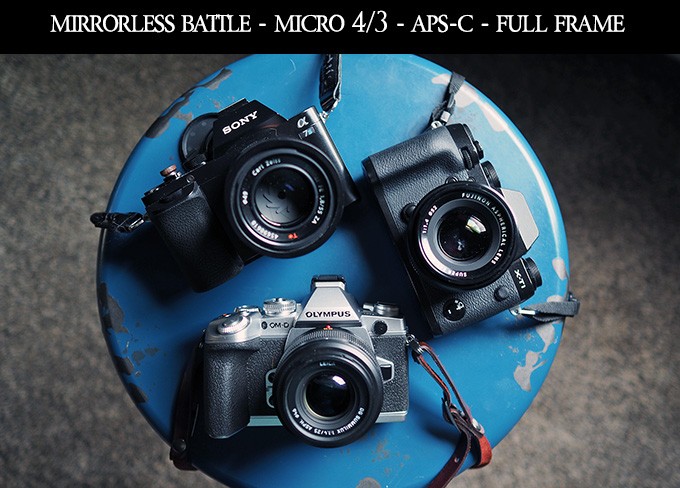
MIRRORLESS BATTLE! Micro 4/3 vs APS-C vs Full Frame!
E-M1, X-T1, A7s – 8 side by side tests
This was a blast to do, and shows the STRENGTHS AND WEAKNESSES of Micro 4/3, APS-C and Full Frame cameras, specifically the E-M1, X-T1 and A7s. Even I was surprised at some of these results and I did each test fair and square according to my rules below, which have been my comparison rules for seven years because it shows REAL WORLD shooting (not nonsense that no one does when shooting an not pro studio or lit images from a shooter who is sponsored by a camera company). This is as close as I will ever get to a “scientific test” while keeping it “real world”, and yes, it is what it is. Even so, whatever camera “loses” this test will have the fans of that brand attacking me, no matter which one loses. Should be entertaining in that regard as well. 🙂
Images and test descriptions will speak for themselves. Just how much difference is there between Micro 4/3, APS-C and Full Frame when using the same or equivalent focal length? Sharpness, IS, color, detail, B&W conversions and more are tested here.
- I let each camera choose exposure.
- I am using the E-M1, X-T1 and A7s for this test so take it as just that.
- I set the aperture on each camera to match DOF of the smaller sensors the best I could for some tests.
- For one test I will use each lens wide open to show DOF differences.
- I shot each camera in the same way for each test, either hand-held or tripod.
- ALL images are converted straight from RAW, WYSIWYG
- Used the 25 1.4 on the E-M1, 35 1.4 on the Fuji and 55 1.8 on the Sony
- I will pick my personal preference winner after each test based on the test itself. Score will be tallied at the end. These will be my preferences and may not be yours, which is OK.
- I used Adobe Camera RAW for ALL conversions which is what 95% of us use for our RAW files. No jumping through hoops to help any brand.
- Was going to use A7II but it has many more MP and I had loaned it out to a friend for a few days so I did not have it. The A7s is the Sony Flagship in the A7 line, and is closest in MP to the Olympus and Fuji.
- As this is a test of cameras in real world use, I let cameras choose exposure and used AWB so we can see what to expect in the real world. When we go out to shoot these cameras 95% of us use them in this way..auto exposure and auto white balance. So what you see here is what you can expect to get from each systems flagship camera. For detail shots all cameras were set to same ISO and Aperture.
With all of that out-of-the-way, remember that the tests here are all dependent on lenses used. Some lenses on some systems will render differently when it comes to sharpness, color, bokeh, etc. I used a well-regarded lens for each system, lenses that have had rave reviews. OLY: 25 1.4 Panaleica. FUJI – 35 1.4 Fuji. SONY – 55 1.8 Zeiss.
Hand held test at 1/60th s. and basic overall IQ.
My pick for best IQ here at 1/60th is the Olympus E-M1 for sharpness and color. Right click on each image and open in a new tab or window for full size files.
The reason the E-M1 did so well and WON the 1st test below? The 5 Axis IS kept it steady letting me shoot in lower light at a minimal ISO. The other two bumped ISO but also were stopped down a little more. ALL were at 1/60th S. If each image was sharp, it would almost be a wash here and would have to go by color preferences. I still prefer the E-M1 color here as well but what is important is it shows how useful the 5 Axis can be, even for 1/60th s.
YOU MUST CLICK IMAGES FOR LARGER AND CORRECT VERSIONS
–
Tripod Test Stopped Down for DETAIL – Same aperture on each camera.
The winner to my eyes is Olympus yet again.
Here I stopped down each lens to F/4. NO, I did not stop down the larger sensors more as this is in no way a DOF test, it is a detail test and each lens should be at the same aperture to be 100% fair. So the Olympus E-M1 and 25 1.4 was set to F/4, the Fuji X-T1 and 35 1.4 was set to f/4 and the Sony A7s and 55 1.8 was set to f/4. All were ISO 200, all were shot from a tripod that was in the same exact position for each camera.
YOU MUST CLICK THE IMAGES TO SEE THE LARGER VERSIONS AS TRUE 100% LARGE CROPS
SMALLER CROPS
–
Each Lens Wide Open – A Shallow DOF Test
For me, there is no substitute for Full Frame if you want shallow DOF, but some will prefer a little bit of a larger DOF that you get from Micro 4/3 or APS-C. The reason being is that with the Olympus, you can still get some shallow DOF but you image will be sharper with more detail in most cases, if using a good lens. Same with APS-C in most cases. With full frame you can miss focus easily due to the shallow DOF. BUT if you nail it with FF the results are indisputable. For this reason, I choose the SONY as the winner here as it has the most capability for SHALLOW DOF or LARGE DOF and this is a shallow DOF test 🙂
BTW, the most detail at 100% came from the E-M1 but for shallow DOF, nothing beats full frame. The differences you see are from the lens focal length, not the sensor. The wider the less the larger the DOF (less blur), the longer the lens the more shallow DOF (more blur). Olympus used a 25mm, Fuji a 35mm and the Sony a 55mm. All give the same equivalent field of view but each lens has an effect on Depth of Field which is why you see a more shallow DOF on the Sony. As you can see, the difference between the DOF with the APS-C Fuji and Olympus are actually slight. Nothing to stress over.
YOU MUST CLICK IMAGES FOR LARGER AND CORRECT VERSIONS
–
B&W Conversion Test
I did a crazy comparison test once showing how the E-M1 could replicate the Leica Monochrom to some extent, when it came to tonality (not detail) so how will this test go for B&W conversion between these three powerhouse cameras? For this test I shot in color and then converted to B&W using the same exact Alien Skin B&W filter for each file. Many claim Fuji has an amazing capability for B&W conversion, above other standard cameras. I never noticed this at all, so let’s see how that holds up…
CLICK EACH IMAGE TO SEE IT CORRECTLY!
For me, and my tastes, I prefer the Olympus rendering the most. To me, it resembles the Leica Monochrom more than the others, and that is a camera I consider to be the best B&W camera ever made (next to film of course). In fact, this E-M1 file looks eerily similar to a Monochom file. There seems to be more grayish tones and more black details which is preferred, especially for post processing. The Fuji is 2nd place for my tastes and the Sony 3rd but they look the same as any camera B&W conversion. For the most grey tones, the Olympus somehow gets it. You can see more details when clicking on the images for larger sizes (as long as you are not viewing on a phone).
But let us see another B&W example…CLICK THEM TO SEE THEM CORRECTLY!
Again, here I slightly prefer the Olympus but ALL are great. I see none here that are a huge step above the others though the Olympus has the most detail yet again. Interesting huh?
SCORE SO FAR: So far we have Olympus with 2, Sony with 1 and Fuji with 0. Let’s keep on moving.
–
Color Test
Just to show how each camera renders colors. These are all from RAW so any in camera color choice will not come into play. Shot outdoors in natural direct light to give all cameras the best chance at showing their stuff. This will be 100% personal preference as what I like in color you may not. I did three color shots and chose three different winners, so this one is a draw as color can be quite good from all of these cameras.
The 1st sample is for color accuracy only. After looking at the crayons with my own eyes and looking at these images I feel the Sony comes closest to reality, with Olympus being 2nd and Fuji 3rd. 100% crops are embedded when you click on the image for a larger view.
–
Another color test and this one was between the Fuji and Olympus with the edge for me going to the Fuji. I feel Olympus is equally as good but the Fuji shot has a teeny bit more something that I like. Either are superb. The sony has a yellow cast here so it gets last place.
–
Finally another color shot in beautiful morning light. My grass, up close. 😉 This time I much preferred the Olympus shot with the color, the light and the highlights all working for me. Then the Fuji. The Sony here is a bit dull but that is only in direct comparison. Many may prefer the Fuji or Sony here. All from RAW. There is no “winner” – just preference.
–
Portrait Test
Many of us love portraits, so how will each camera do with a basic portrait? Let us see which YOU prefer. I prefer the Olympus as the Sony AWB really screwed the pooch creating a much too cool image. The Fuji is a bit overdone with color and INCORRECT color IMO while the Olympus strikes a balance that is most pleasing to me. This was just a simple indoor natural light test shot and nothing more. I am not a huge fan of the rendering of any of these to be honest as it was a quick indoor portrait with no good light, but it had to do.
–
Here they are converted to B&W using the VSCO T-Max Preset. Click them for larger 1800 pixel wide versions to see the detail and rendering better. The Fuji has the most contrast here,but it looks better than the color version. The Olympus stays nice and neutral and the Sony looks much nicer in B&W due to the color being off in the original. But one is Micro 4/3, one is APS-C and one is full frame. NOT that huge of a difference.
–
DR Test
Dynamic Range is good from all three of these cameras, and the Olympus E-M1, contrary to popular belief has is about equal in DR to the Fuji X-T1 with 12.7 stops of DR. The Fuji, in RAW (it is less in JPEG) can do between 9 and 13 stops of DR and the Sony has 13.2. So all are similar but the Sony has the most (as you can see below). The Olympus is quite amazing for its smaller sensor to have 12.7 stops but in the real world, the full frame sensor shows its stuff. Here is a shot that was blown out. I recovered the highlights the best I could for each file.
Below is the Sony file AFTER I brought back the highlights that were blown to shreds. The SONY has the most DR hands down, which is what I figured due to the full frame sensor and big fat pixels.
–
Low Light HIGH ISO Test
Sony Wins ISO, no contest. 😉 What is interesting is that Olympus had the most detailed file at high ISO. For some reason the Fuji, even though tripod mounted and focus point selected manually, looks very soft (and yes, this is the sharpest part of the Fuji image) and that may be due to the NR Fuji applies that you can not turn off. The Sony looks softer but this is due to DOF even though I stopped down the Sony. It also appears that the Fuji RAW files are also doing some sort of Noise reduction even when turned off, which also loses detail. Me, I much prefer detail which is why I turn NR off on all cameras that allow it. (Fuji does not).
It seems here that the Fuji is even or slightly better than the A7s, but remember, the A7s allows you to go above and beyond most cameras with 102,000 ISO capability. Shooting at ISO 32,000 on the Sony provides usable and nice files. Not possible on the Fuji or Olympus.
The Fuji, as I said, is applying NR to the RAW file and the Sony and Olympus are not. So not a fair test as the Fuji does not allow removing all NR. You can see the noise is smeared. The TRUE winner for high ISO is the Sony A7s. The winner for most detail at high ISO is the Olympus E-M1. The CA in the OLy shot is a result of using a Panasonic 25 1.4 which is an awful performer for CA.
ISO 3200
–
Now ISO 6400
Again, (many do not read what is written above the tests) the Fuji has NR as it can not be turned off, which is why you see the noise is actually smoothed and smeared. So in the above examples the Fuji has NR and the others do not. The Fuji is also the softest (which some has to do with NR as it robs details) – a shame you can not turn it off on the Fuji. It is even applied to RAW files.
–
My Final Thoughts and which camera I prefer out of all of these..and WHY.
Moral of this story? Anyone who tells you Micro 4/3 cannot hang with larger sensors is 100% incorrect, as I have said for years. Also, what was not mentioned yet is the fact that the best made and designed body here is the Olympus E-M1. It is built to a higher standard the the Fuji X-T1 from solidity, quality of dials and buttons, and unlike the Fuji – ZERO hollowness and zero cheap feeling parts without much extra weight at all.
In other words, I found the Fuji’s build quality to be the lowest of the three from body to dials and switches to the D-Pad, etc. This is not just talk, it is fact.
The E-M1 feels and operates like a pro camera, the Fuji *feels* more toy like (though it is NOT a toy, at all). The Sony is solid and hefty without any cheap feeling parts but again, the E-M1 slightly beats it in build quality and feel and control. The new Sony A7II stepped it up and is now about equal to or better the E-M1 in build.
Of these three cameras my money would be spent on the Olympus 1st and Sony 2nd (and it was). I would skip the Fuji for my tastes. Just not my cup of tea from feel, focus, usability, speed and IQ in most lighting scenarios. For me the E-M1 has it all from build, speed, looks, feel, features, In body IS, lens selection, IQ and capabilities. The Sony A7s is a low light champ and works great with 3rd party and Leica glass but overall, the best all around general use every day and pro camera *of this lot* is the E-M1 by Olympus, and I say that without hesitation.
So take this for what it is, a few tests with a few cameras using one lens each, all 50mm or so equivalent. Any IQ discrepancies there may be with Micro 4/3 (and there really are none besides shallow DOF possibilities of full frame) are easily over ridden by the amazing tech in the body and the features, usability, and overall quality of the images. It’s not only a superb camera to use, but it is a very FUN and enjoyable one to use. Many times the Fuji, again, frustrated me (dials would move too easily so settings were changed just from placing the camera in my bag, the way to change the drive mode is odd, with a cheap lever that also switches way too easily…overexposure on many occasions…etc). The Sony was fine besides a few AWB issues that I never noticed until doing these side by sides. So seeing the files next to each other and handling each body one after the other told me a lot.
At the end of the day these cameras can all do a great job, but it will be personal preference as to which one is best for you. Do some PP and the images can go to the next level, so remember that as well.
So for me, I love these two plus the Leica M, which will always have a place in my heart.
At the end of the test, here is the score with my eyes on all of the tests: Olympus with 6 wins, Sony with 4 wins and Fuji with 1 win. Your score may be different of course, as this is not a cut and dry thing. It is personal preference. So for you, Fuji may win or Sony may win. That is the beauty of it. It is not about WINNING or LOSING it is about WHAT YOU PREFER.
Even though this test is what it is..some owners will come here to defend their choices, which is fine. But it doesn’t change reality. Also, no need to say ‘Fuji needs Capture 1, Fuji needs EV comp set at -1, Fuji needs sharpening, Fuji is light and hollow feeling because of weight, Fuji needs a special technique for AF, etc etc”. To me, these are all excuses and we should not have to fly through hoops to get the best quality from our cameras. It should NEVER be “work”. All cameras were tested the same with no special treatment to any of them, that was important. Enjoy 😉
REFERENCE: See my Olympus E-M1 Review HERE, my Fuji X-T1 Review HERE and my Sony A7s Review HERE. For the record over the past seven years I have been called a Leica, Fuji, Sony, Olympus, Panasonic, Ricoh, Nikon and Pentax fanboy. Lol. Why? Because I love many cameras from all of these manufacturers.
———
PLEASE! I NEED YOUR HELP TO KEEP THIS WEBSITE RUNNING, IT IS SO EASY AND FREEE for you to HELP OUT!
Hello to all! For the past 7 years I have been running this website and it has grown to beyond my wildest dreams. Some days this very website has over 200,000 visitors and because of this I need and use superfast dedicated web servers to host the site. Running this site costs quite a bit of cash every single month and on top of that, I work full-time 60+ hours a week on it each and every single day of the week (I received 200-300 emails a DAY). Because of this, I need YOUR help to cover my costs for this free information that is provided on a daily basis.
To help out it is simple, and no, I am not asking you for a penny!
If you ever decide to make a purchase from B&H Photo or Amazon, for ANYTHING, even diapers..you can help me without spending a penny to do so. If you use my links to make your purchase (when you click a link here and it takes you to B&H or Amazon, that is using my links as once there you can buy anything and I will get a teeny small credit) you will in turn be helping this site to keep on going and keep on growing.
Not only do I spend money on fast hosting but I also spend it on cameras to buy to review, lenses to review, bags to review, gas and travel, and a slew of other things. You would be amazed at what it costs me just to maintain this website, in money and time. Many times I give away these items in contests to help give back you all of YOU.
So all I ask is that if you find the free info on this website useful AND you ever need to make a purchase at B&H Photo or Amazon, just use the links below. You can even bookmark the Amazon link and use it anytime you buy something. It costs you nothing extra but will provide me and this site with a dollar or two to keep on trucking along.
AMAZON LINK (you can bookmark this one)
B&H PHOTO LINK – (not bookmark able) Can also use my search bar on the right side or links within reviews, anytime.
Outside of the USA? Use my worldwide Amazon links HERE!
You can also follow me on Facebook, Twitter, Google + or YouTube. 😉
One other way to help is by donation. If you want to donate to this site, any amount you choose, even $5, you can do so using the paypal link HERE and enter in your donation amount. All donations help to keep this site going and growing!![]() I do not charge any member fees so your donations go a long way to keeping this site loaded with useful content. Thank you!
I do not charge any member fees so your donations go a long way to keeping this site loaded with useful content. Thank you!

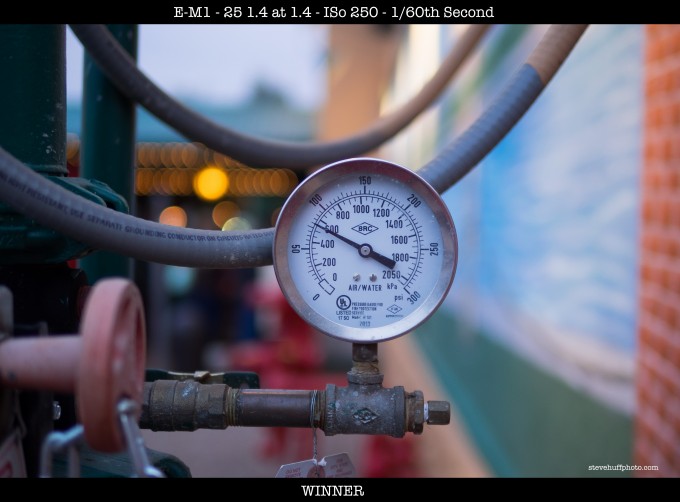
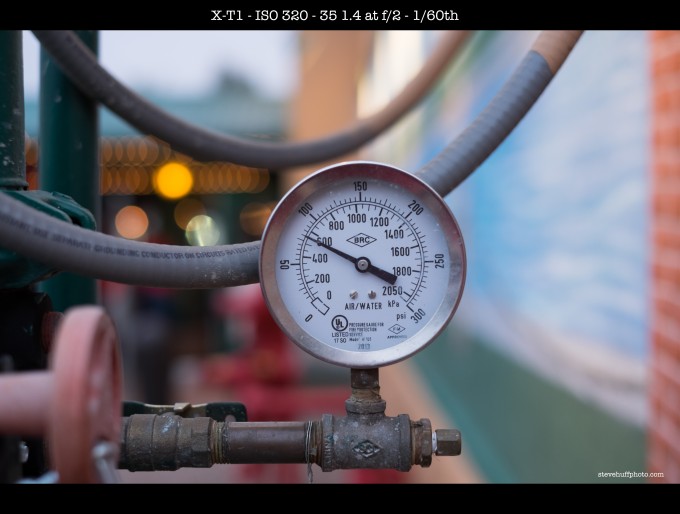
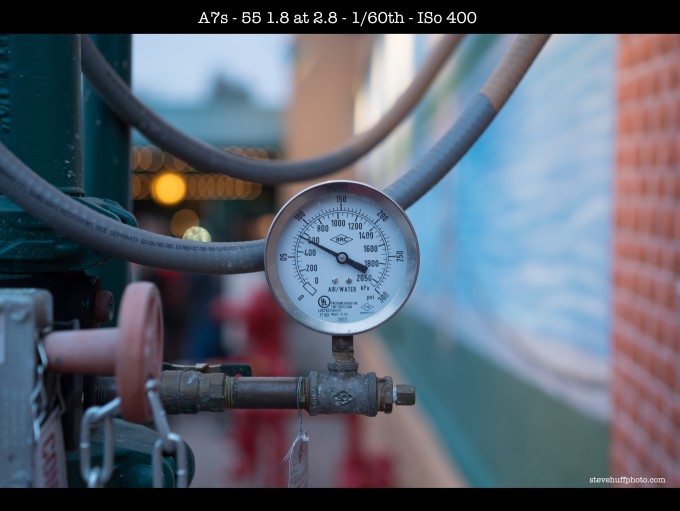
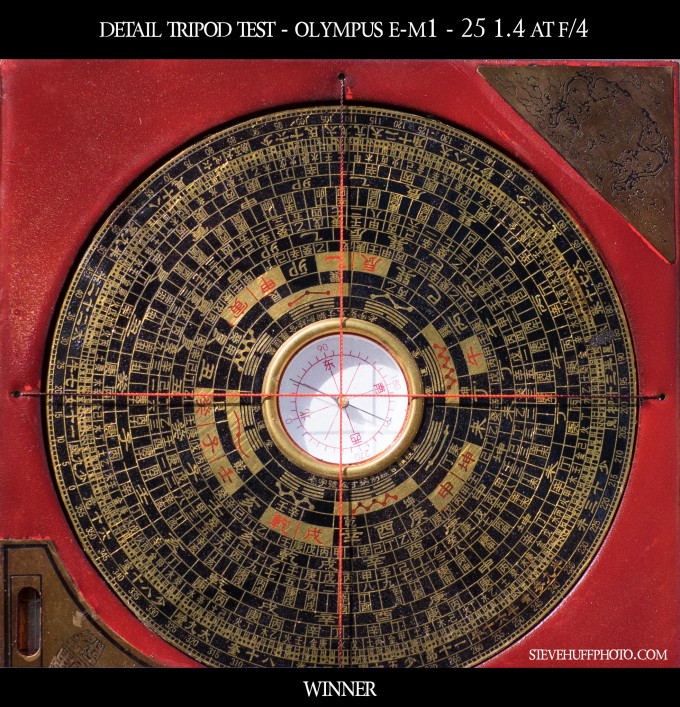
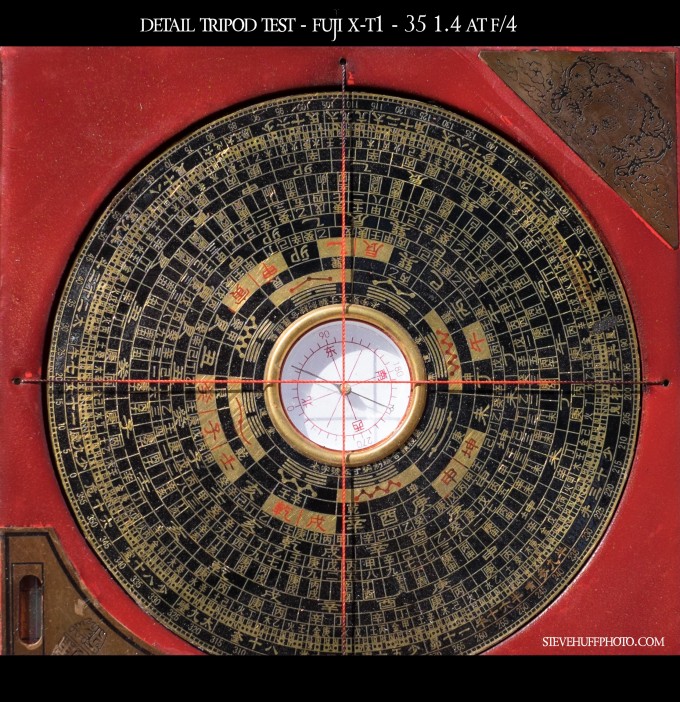
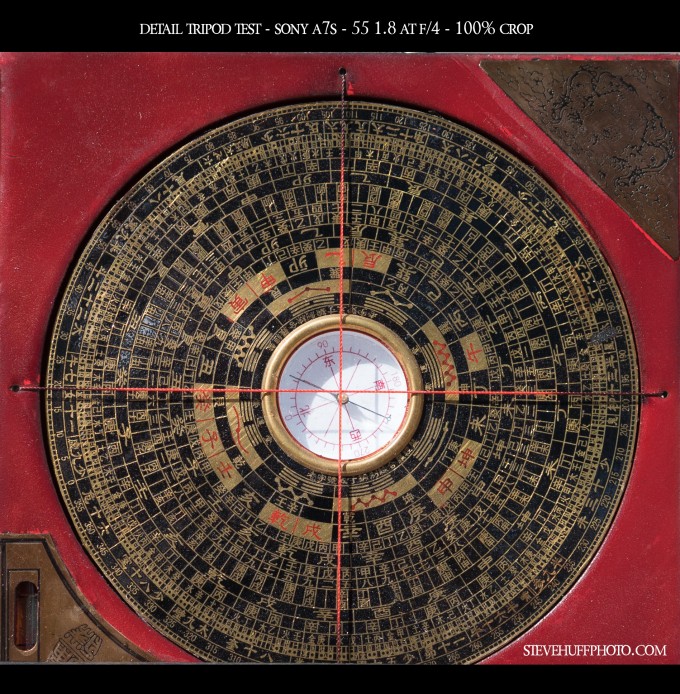


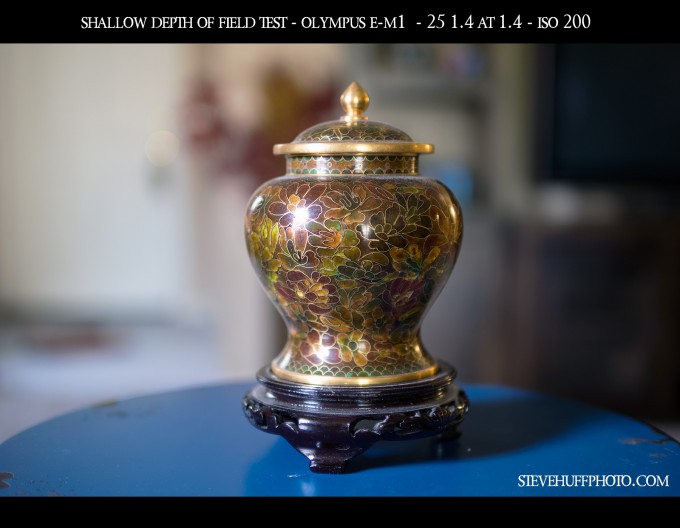
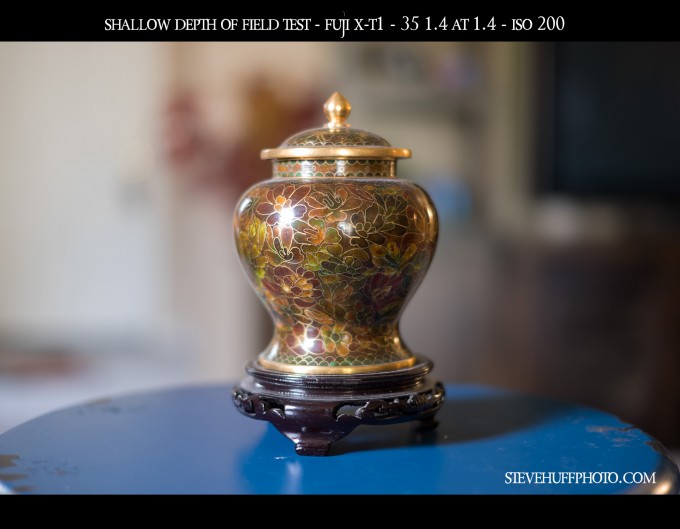
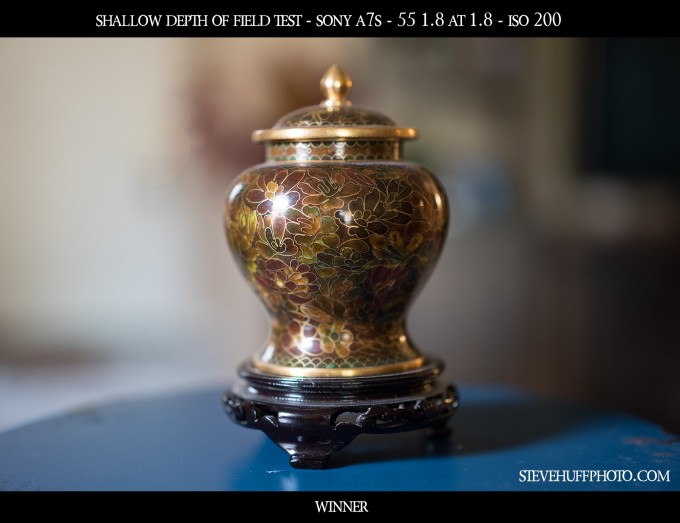
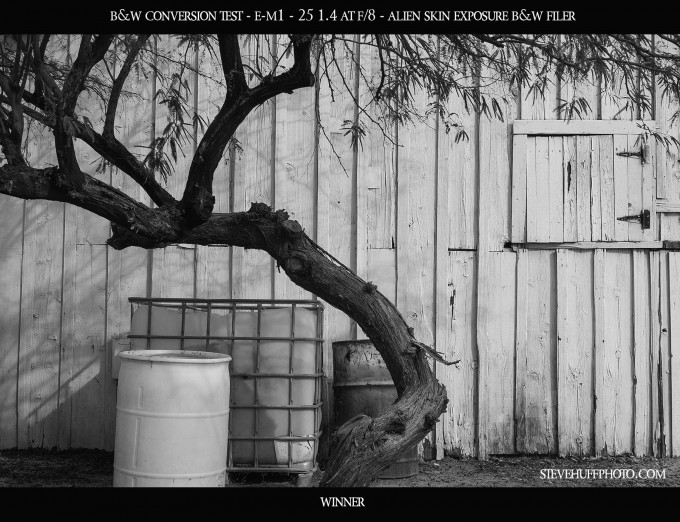
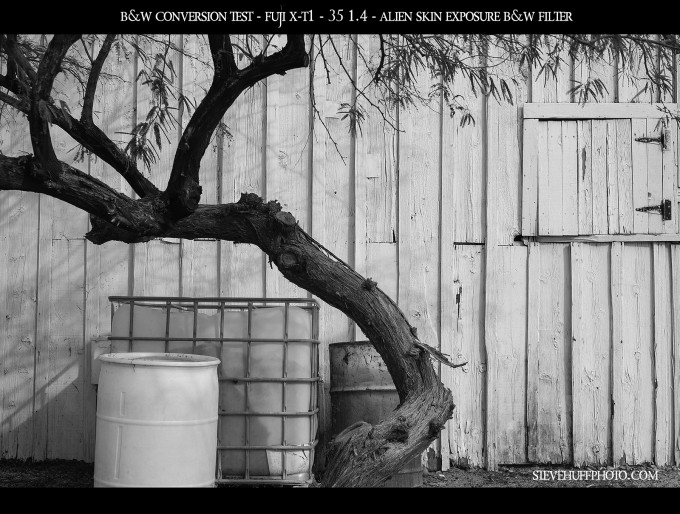
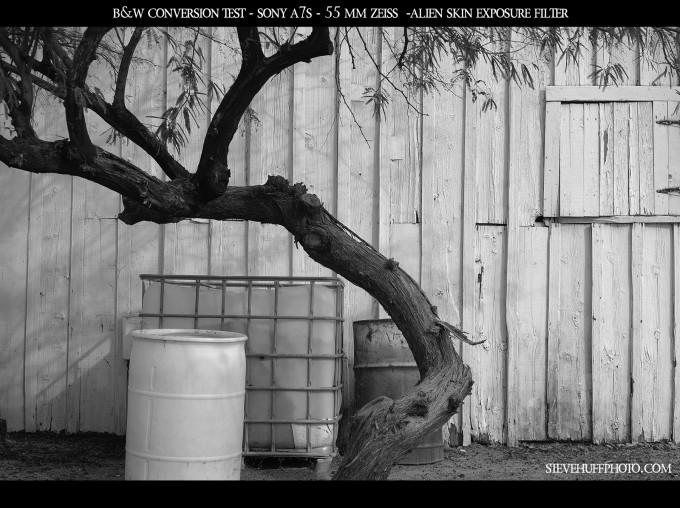
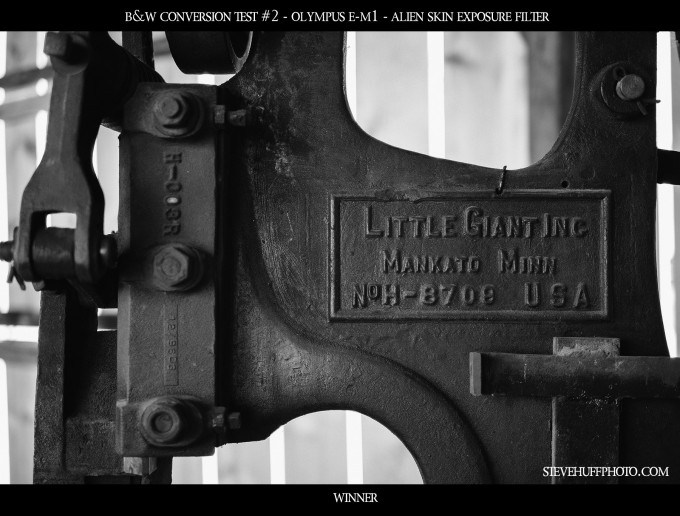
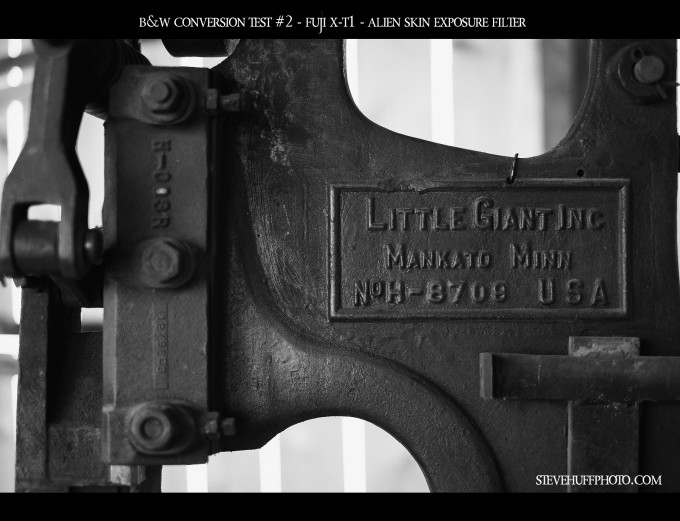
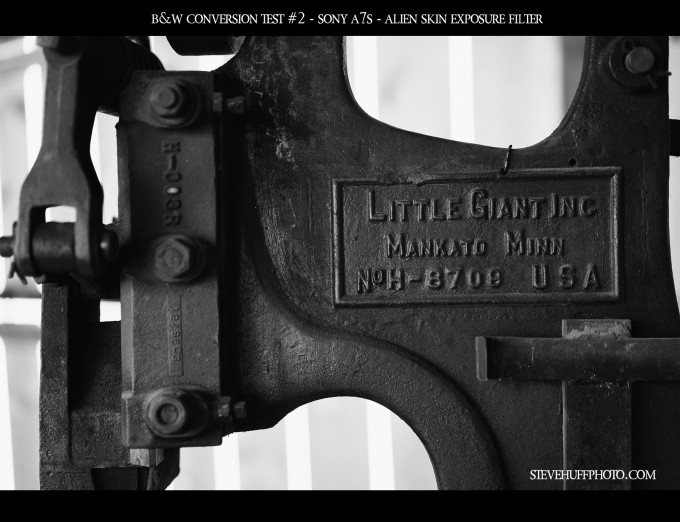
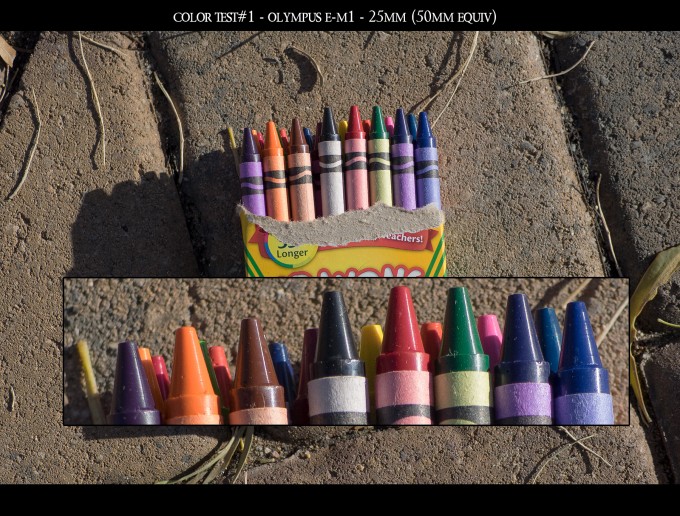
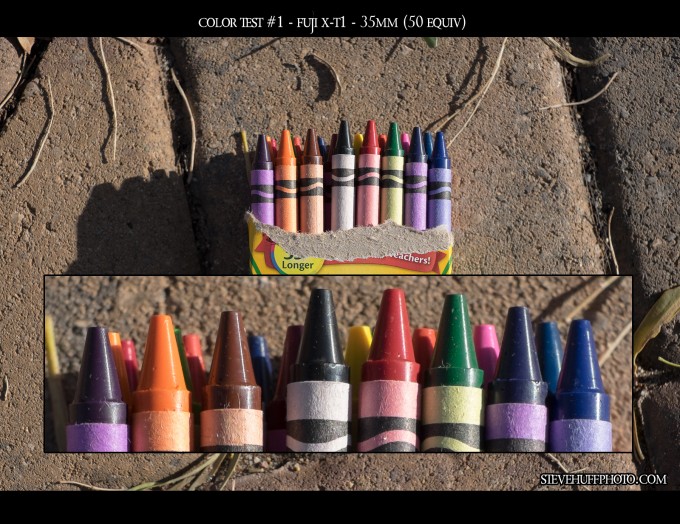
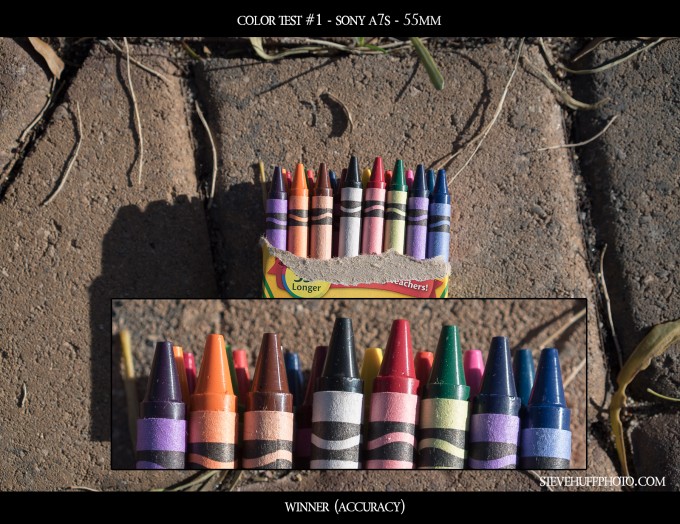
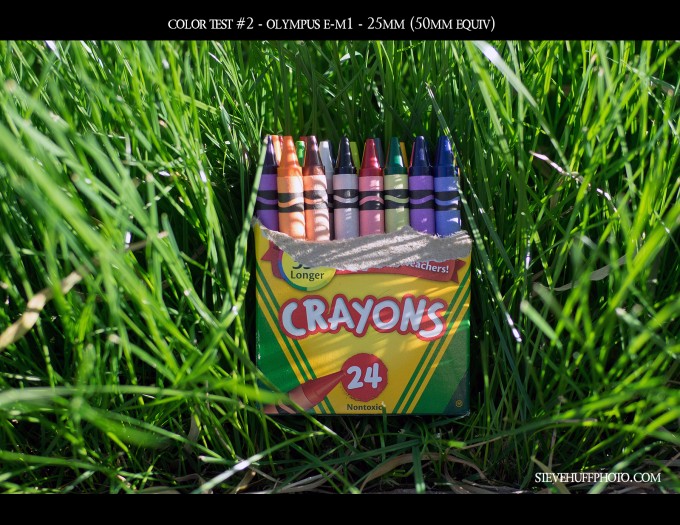
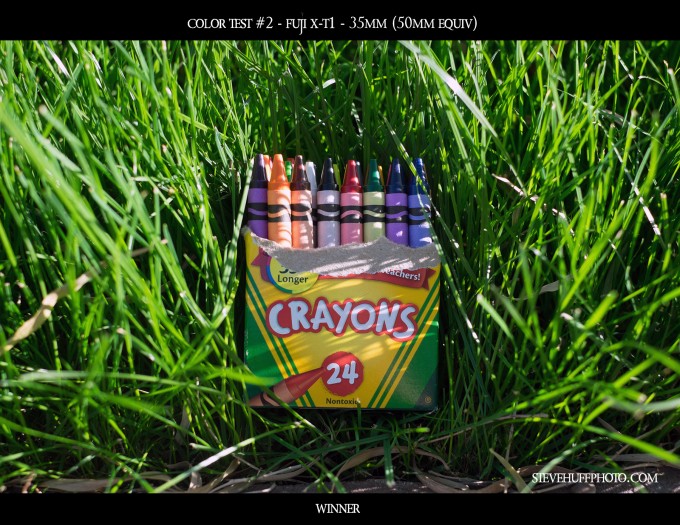
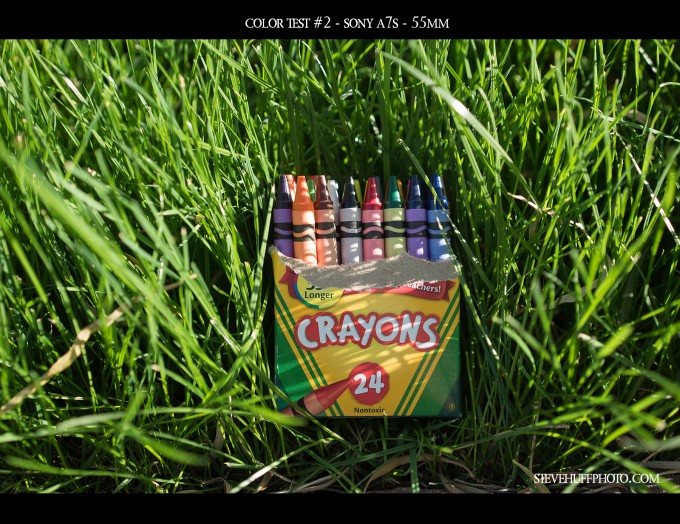
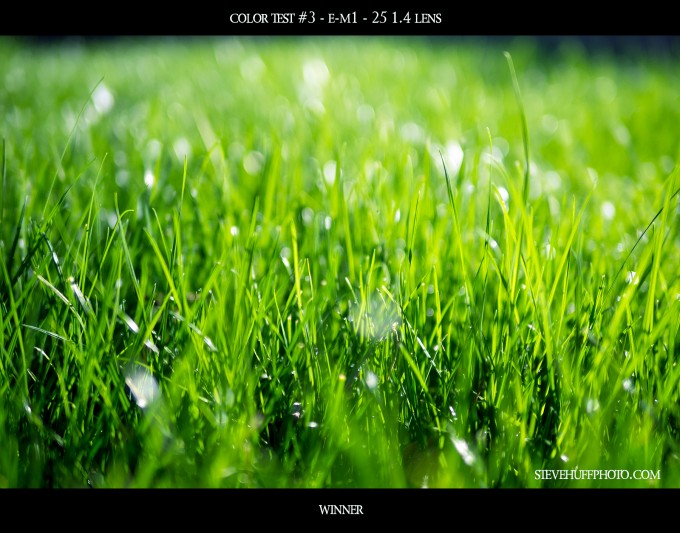
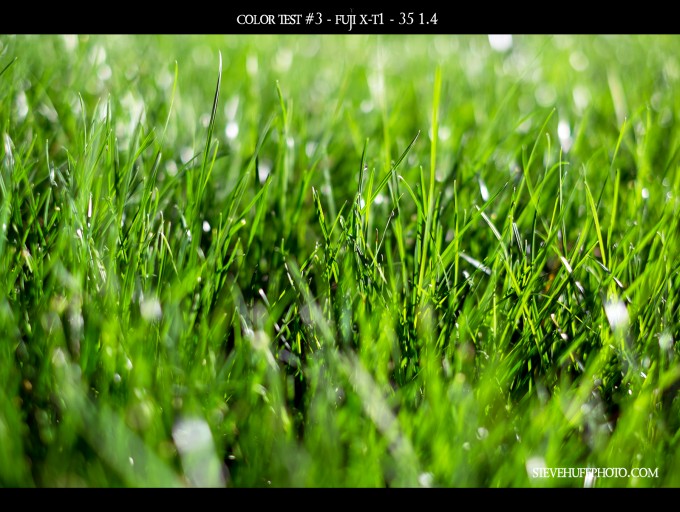
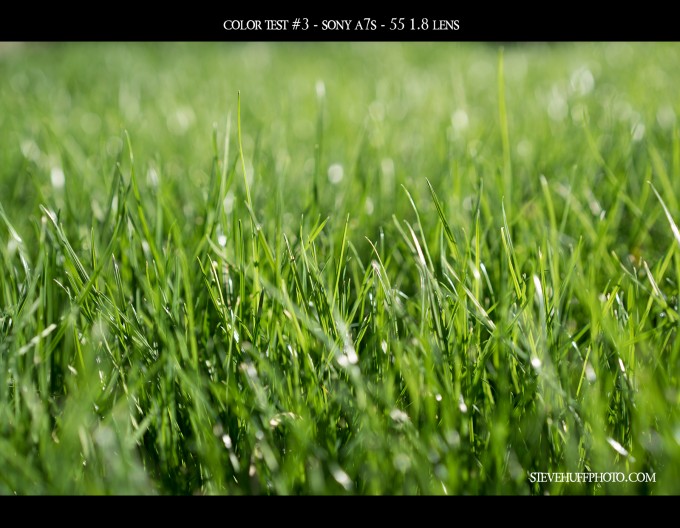
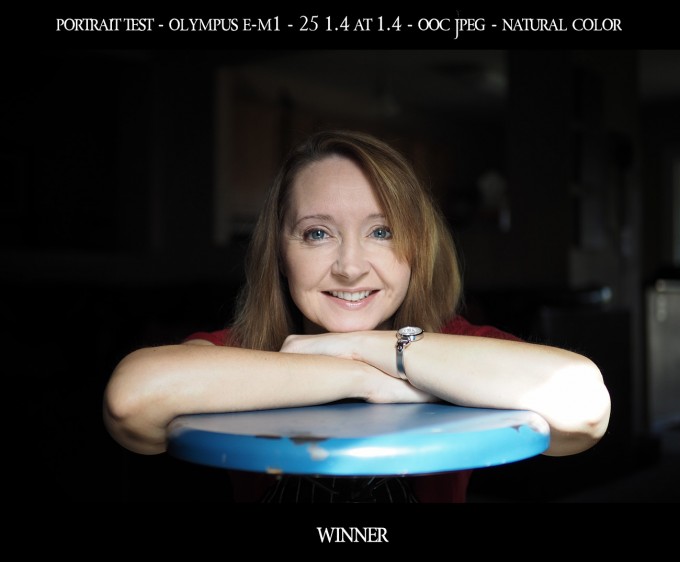
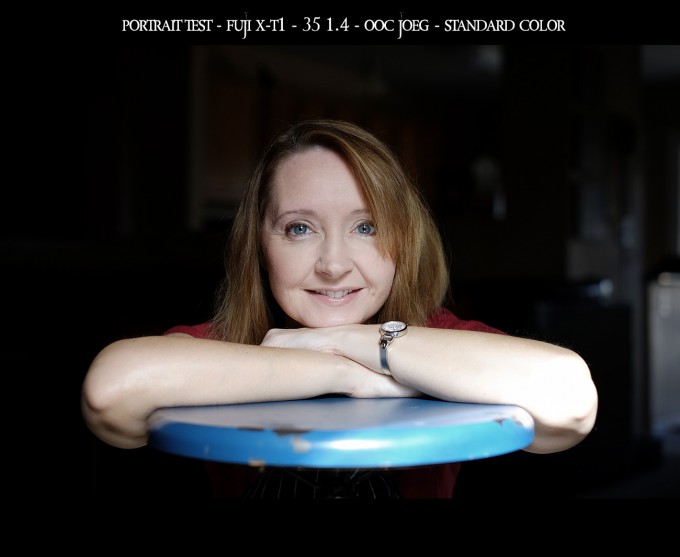
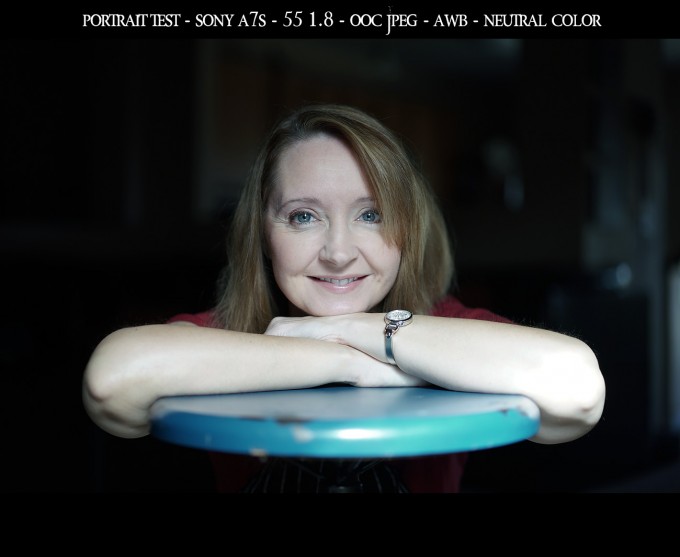
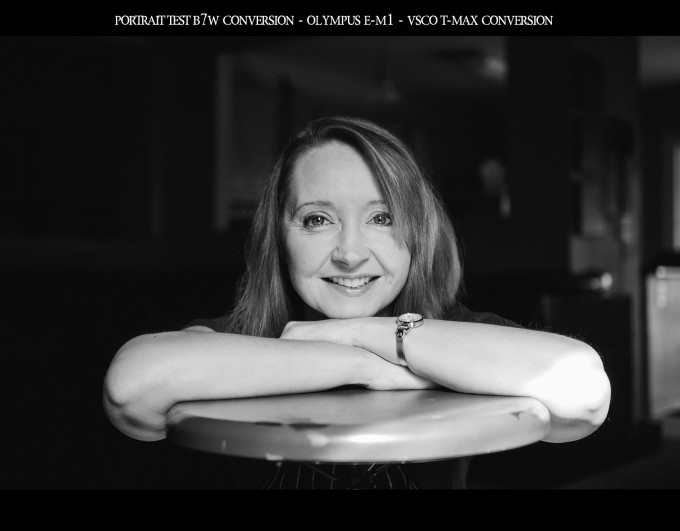
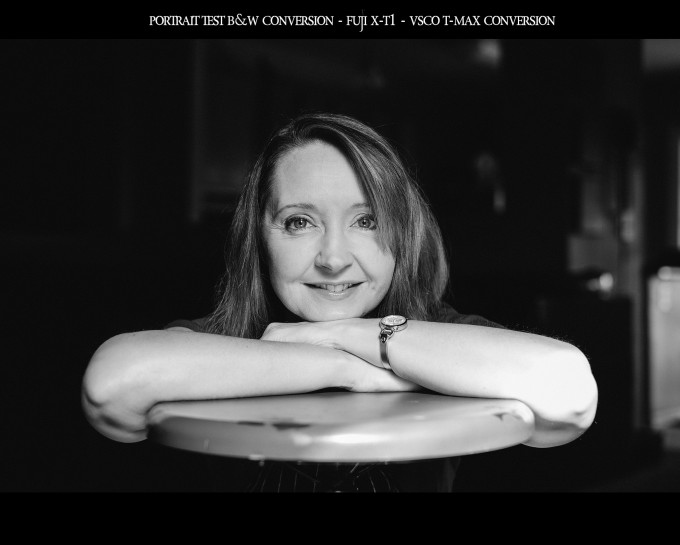
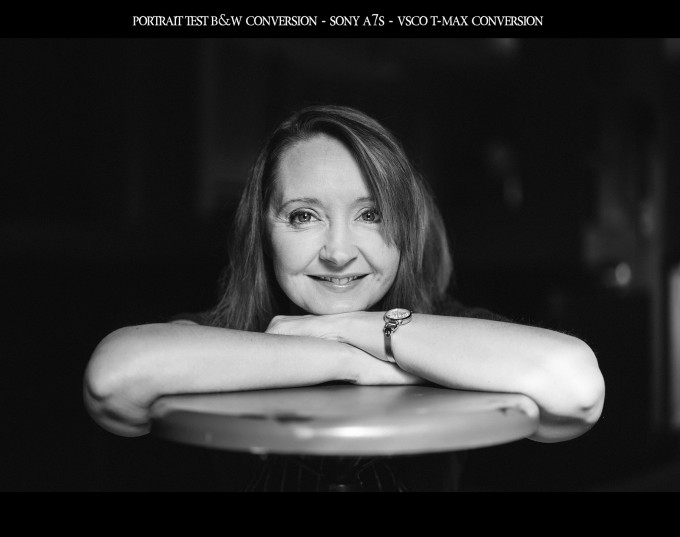
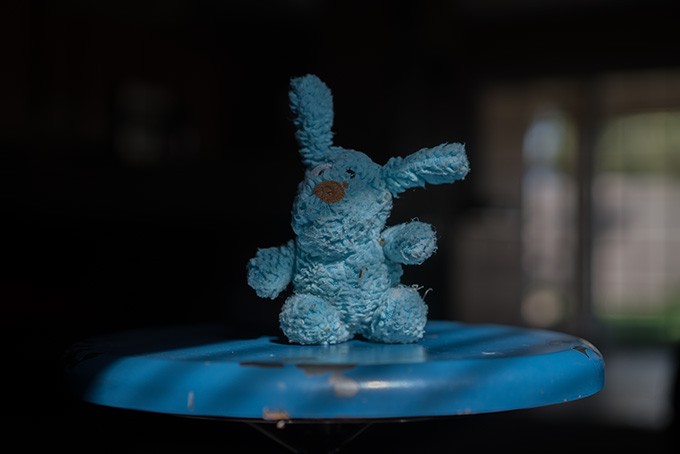
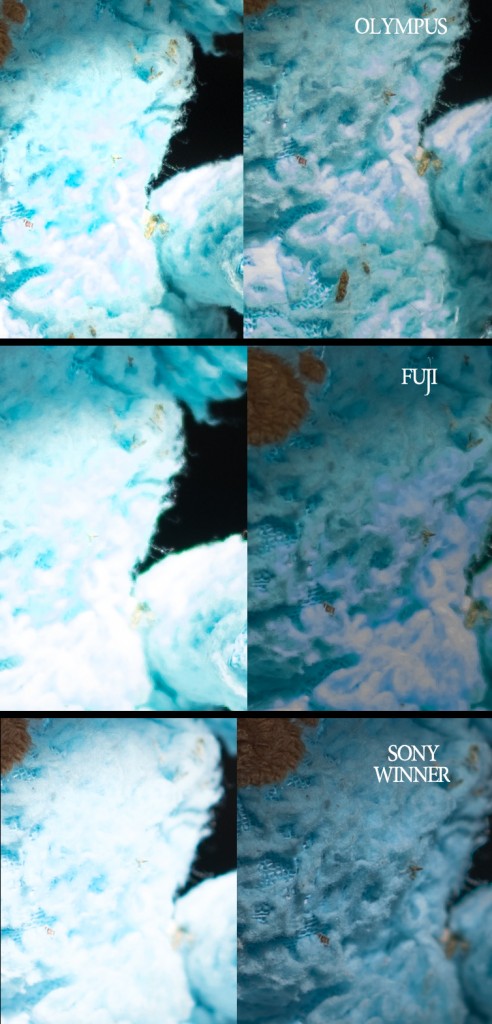
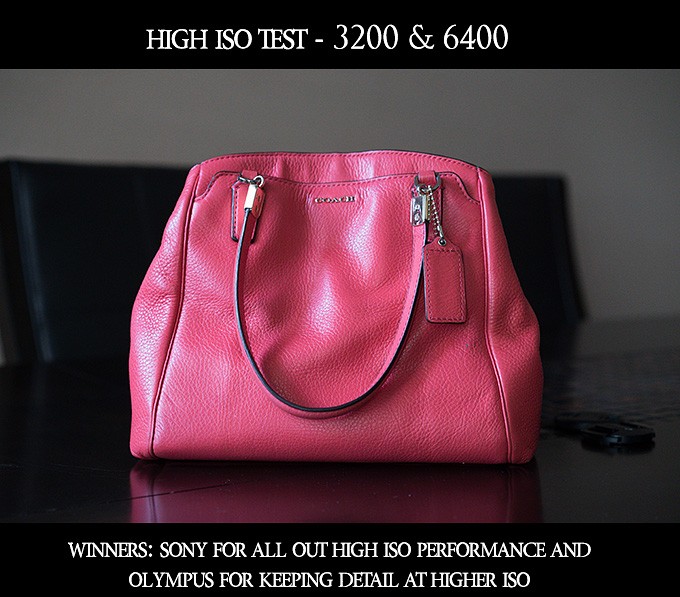
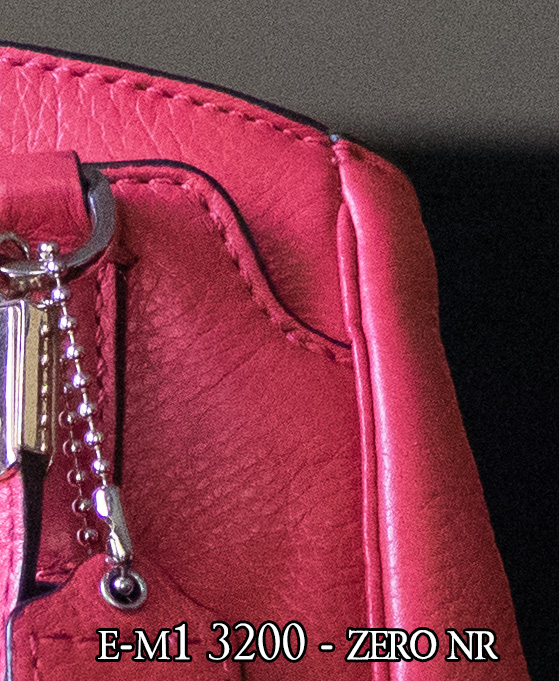
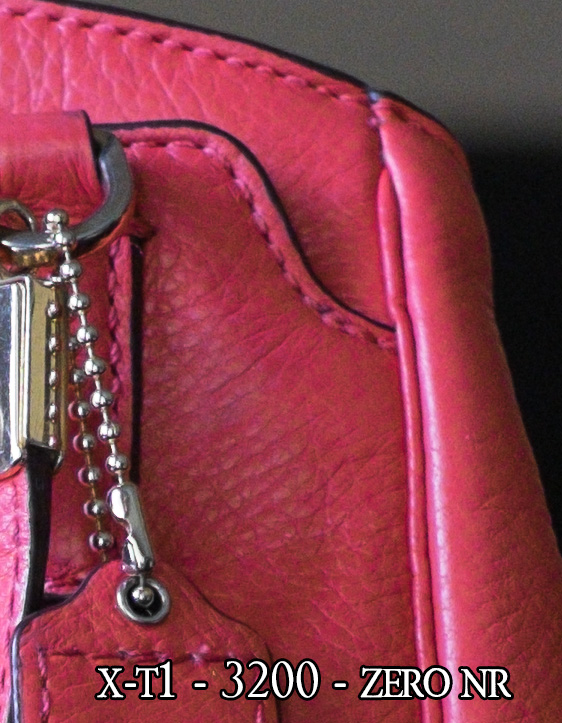
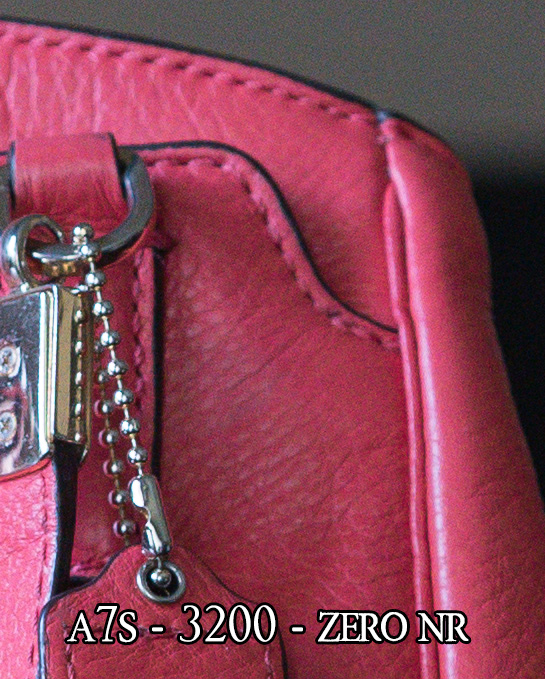
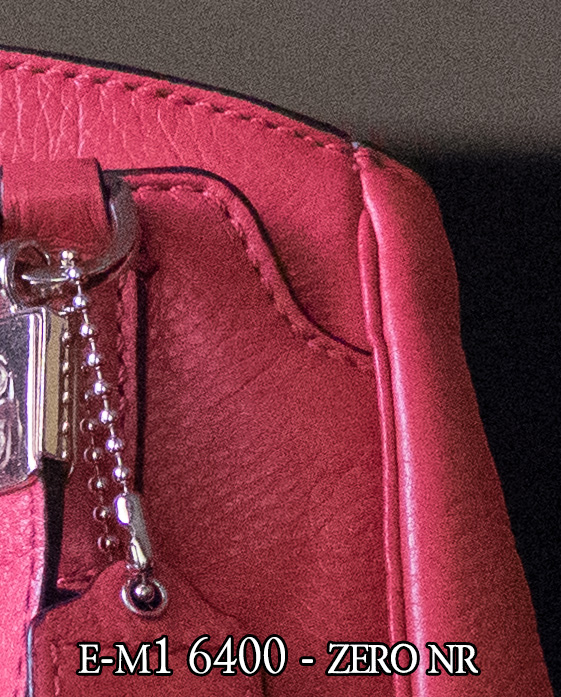
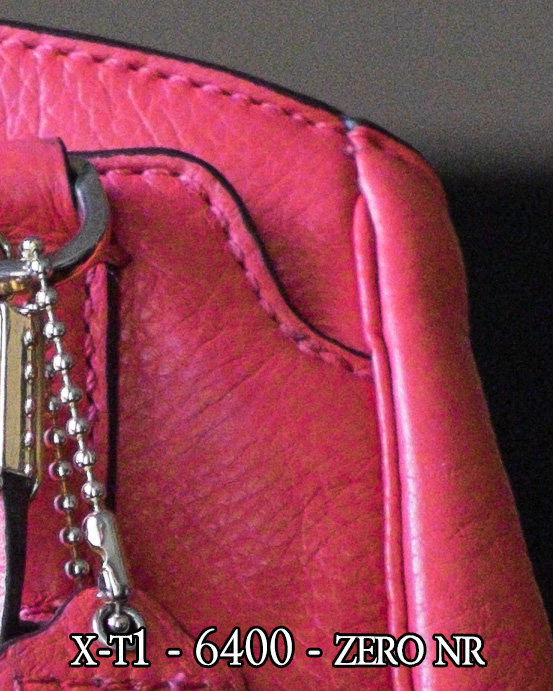
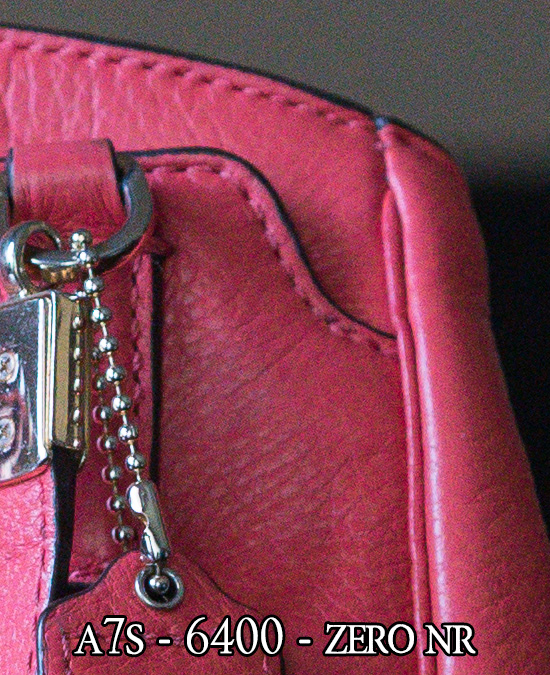
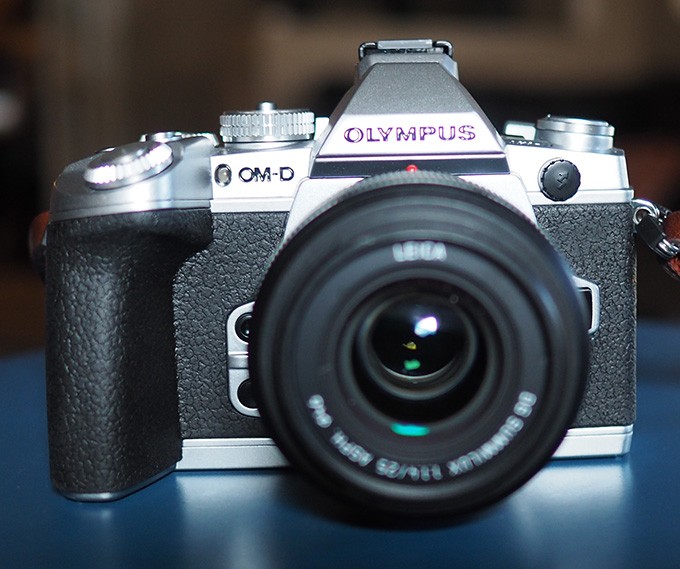
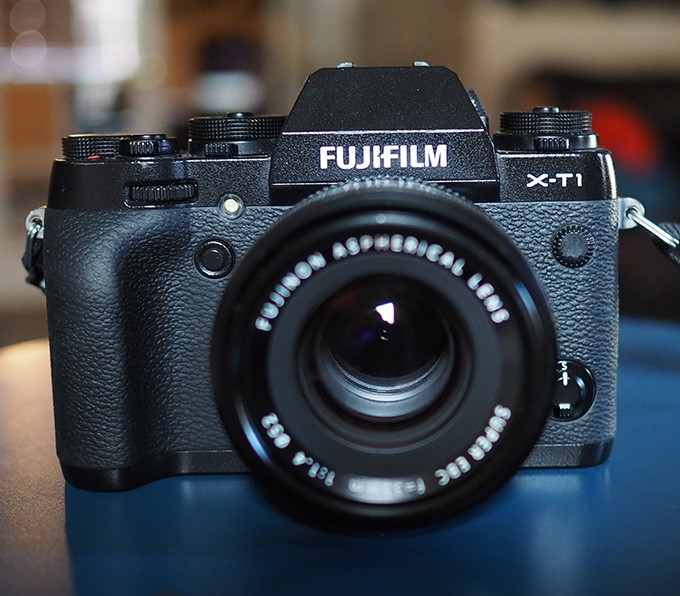
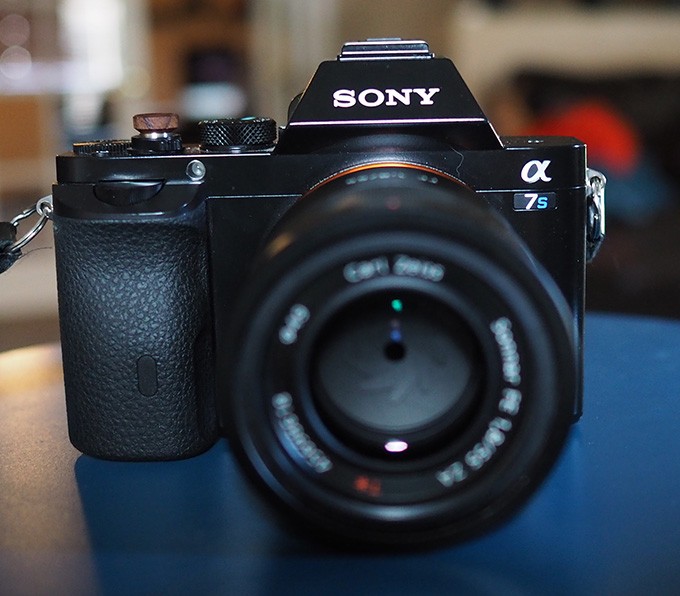
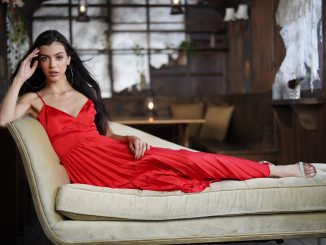
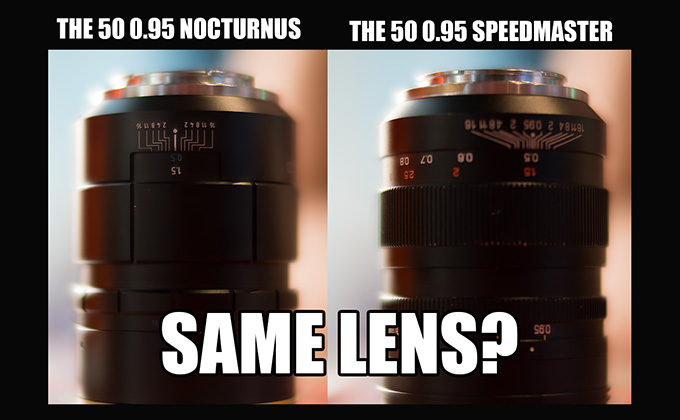

Well… well.. well…
Its January 31, 2017 and i was looking for a validation if i made the right choice.
I’ve had the Sony a6000 since it came out about 2 years ago and recently just sold all that i have over the course of 2 years of having it, i’ve gotten pretty good prints from it 16×20 and that’s what i am going to miss the most.. what i wont miss is the limited amount of lens available and if there is one that i want, it will cost me a fortune, and the menu system to change something is just not as friendly so i’ve messed up a few shots that i was going for.
So i gave myself 2 weeks to do my research and at this point what i wanted in my new camera is weather sealed, stabilized body, will produce great pictures that i can print as i decorate my house with pictures i take, cost effective investment. I was torn between sony a6500 ($1400 way too expensive) body only, Panasonic g85 ( great price $1000 with a weatherprooof 12-60mm lens) 4k is only 8mp on stills, and i wasn’t sold the way it looks, it felt like, if i was going to dslr look, i might as well buy a full frame and im not too familiar with Lumix at all. So i decided to purchase EM5 mark ii with the 12-40 f2.8, based on this comparison even tho this model of olympus is almost 2 years old.
I really hope i made the right decision. Any thoughts guys?
right now I’m at a point to upgrade my 5 yr old EM5. and im quite torn between the panasonic g85 and em5 mk2… can someone share their opinions between these two? still not sure which to pick.
I have both a Sony A7ii and a Pen F with a few lenses for both systems. They are both great cameras that can produce fantastic results. What I can’t figure out is why DxOMark give such higher marks to the Sony lenses…the somewhat maligned 24-70 F.4 gets a DxO of 31 and 24 for sharpness… the highly praised Olympus Pro 12-40 2.8 pro is a DxO score of 20 and 9 for sharpness. Other than depth of field at the same f-stop, I can’t tell a material qualitative difference in image quality and sharpness. Can anyone shed light on DxOMark’s criteria.
i left the ranks of 4/3 back 2013, haven’t looked back a single time since i got my Nikon d-800 which suits me perfectly.
Funny I went the other way D800 to Oly and do not miss Nikon one bit
I did the opposite D800 to E-M1 don’t miss the Nikon one bit and my shoulder sure appreciates it!
I personally went the extra mile. I went from Sony, Panasonic, Olympus, Fuji, Canon and Nikon to the now ‘dead system’ Samsung NX1. The best hybrid mirrorless camera ever made, even better now with 1.41 firmware and video hack, coupled with the Samyang 12mm f2 and Samsung’s 85 f1.4, 16-50 f2-2.8 + 50-150 F2.8. I will sleep soundly until about 2020 😉
I used an M10 and moved to D240.. great. great but . so slow to react…. Then I take a OLY EM1, only happiness, But, but I wanted to make a weding gift to my wife; one body for her and one for me, only 2.8 Nikkor lenses. , Since that, I love the D810 but but my EM1 I still cry for it, despite D810 is an extraordinay camera, sometimes I do not carry it , to light and easy to walk all day without broking my back. as I do live in Thailand, i do prefer tropicalized body and lenses.
OUPS some words are missing :
I used an M10 and moved to D240.. great. great but . so slow to react…. Then I take a OLY EM1, only happiness, But, but I wanted to make a weding gift to my wife; one body for her and one for me, only 2.8 Nikkor lenses. , Since that, I love the D810 but but my EM1 I still cry for it, despite D810 is an extraordinay camera, sometimes I do not carry it , The EM1 is really light and easy to walk with all day without broking my back. As I do live in Thailand, i do prefer tropicalized body and lenses.
Great comparison Steve. I’m very close to adding the Olympus Pen F and a few prime lenses to my equipment due to its small size (compared to my Canon 5D III), performance and yes, style. Looking forward to your long term review of the Pen F.
I’m wanting to get into photography and have chosen Olympus.
Do you or anyone else think getting the M1 at this point is still good value as the camera is 3 years old technology and being sold for $899? I ask because it seems evident a newer M1 Mii is being talked about.
Thoughts on this?
I have an e-m1 and will be doing my comparison with a Canon XT in a few days. That will be interesting!
This comparison is extremely useful and informative. Thank you Steve for posting it. It’s impressive that the Olympus can compete very favorably with other cameras that have larger sensors. You have convinced me to buy the EM-1. Seems like a good time to purchase a great camera at a discount. I’ll probably pair it with the 25 1.8.
Hello Steve,
There is a factor in your beautiful and enjoyable test which breaks down the objectivity in some aspects.
Adobe Camera Raw is a non-professional – but handy and popular – raw converter which applies a lot of noise reductions and arbitrary preprocessing the user cannot switch off.
More specifically:
The raw files produced by Fujifilm cameras are real unaltered raw datas with NO noise reduction. But Adobe Camera Raw tries to mimic the agressive and tricky noise reduction of the jpeg engine of Fujifilm cameras.
If we open the Fujifilm raw files with a complex, professional raw converter like RawTherapee (http://rawtherapee.com/downloads) we can immediately observe the original, non-altered noise of the Fujifilm raw data which is hidden(!) by Adobe Camera Raw. Even if we turn off the noise reduction in Adobe Camera Raw, it still applies some noise reduction.
So in my humble opinion the best method would be:
• 1) open the raw files in RawTherapee,
• 2) apply the “Neutral” processing profile which turns off every processing additive: no noise reduction, no sharpening, no even base tone curve(!) (Adobe Camera Raw forces various base tone curves of their DNG profiles) etc…
• 3) create (draw) a tone curve to obtain a non-flat, enjoyable picture,
• 4) apply this setting exactly on every raw file.
Adobe Camera Raw aggresively preprocesses the raw datas according to its arbitrary taste (style), and this preprocessing algorithm varies by camera models.
However RawTherapee – with „Neutral” processing profile – gives us a truely unprocessed, unaltered raw data.
If we look at the „Raw” settings tab under RawTherapee (Alt+R) we can see a lot of adjustable demosaicing settings which is hidden and arbitrary decided by Adobe Camera Raw.
I would repeat the raw files processed in RawTherapee to obtain objective results about the noise and detail of the Fujifilm raw datas.
Thank you.
Thanks for the tip on Raw Therapee. I’ll have to investigate this product further.
Great website Steve.
I joined the growing ranks of m4/3 shooter back in November 2015. I made the decision to sell all my Nikon DSLR kit after I realised I just couldn’t be bothered to lug a big heavy camera and lens around with me, fully agree with Richards comment, the best camera in the world is the one you have with you.
Bought and OMD , 14-42mm, 25mm, 40-150mm lens and haven’t looked back! I can pack the whole kit into a small shoulder bag, it’s so light and portable. Not only that, the change has given me a new enthusiasm to go out and take pictures, never a bad thing.
I was worried the image quality would not be a good a the Nikon, WRONG, it absolutely great!
Its good to see people like yourself proving the perception of a supposedly ‘lower’ image quality m4/3 sensor to be incorrect.
To anyone thinking of buying into m4/3 I would wholeheartedly recommend them.
keep up the good work with the website.
I have the Panasonic ‘kit’ lenses – which are way better than they should be – and the oly 25 and 45. None of this was expensive in comparison to almost anything else you can get and I am pleased with the results.
Just to add to what I posted before, I need to take gear on a plane soon on hols but somewhere where I hope to do some wildlife photography. I decided to take my D750 because I do want the low light capability that FF gives you. I was also wanting to take something with a bit of reach – like 400 – 600 mm equivalent. I am not loaded so I don’t possess any big glass but I have a 70-300 Tamron and a 150-600 Tamron. The latter is pretty good but, at 2 kg, too big to take. The former will only just take a Kenko TC pro 14 TC – it works (just) but the results are not good to my eyes.
I picked up the ‘consumer’ Lumix 100-300 some time ago used and cheap and I just compared it to the 150-600 and a Nikkor 300mm f4 AF + TC. I think it holds up very well – even at max range. So – I’m taking the em5 and this lens plus a 25/1.8 which is also a backup if the Nikon falls over. The weight of a em5 body and the 100300 is 1 kg. I can’t get to this reach with this IQ and weight with a FF DSLR – except, maybe the Nikkor 300 pf + TC14e – which again is 5X the cost of the Lumix. There are mixed reviews on the HS100300 on the net but I think its a steal at 200 GBP used when the alternatives are about 2.5 X more in cost and weight.
I still prefer the heft and stability of DSLR + lenses to use but the teles ( apart from the 300 pf ) are not really practical in these days of limited baggage allowance.
I am holding off getting any more m43 stuff until I see a body with good enough AF.
Hello,
I currently switched from Canon to the Fuji x-e2 just to see if I liked it. I do love the controls and the glass but I found the images are as tac sharp as what i am use to. Maybe I just need to upgrade to the Pro 2 or X-t2 but…..I think I may switch again to Oly.. I really like the IBIS and I am just wondering if anyone uses the Oly OMD – EM1 or M5II for events, weddings? Anything that would require low light? How does it work for you and what glass do you use?
Cheers
I’ve used the em5 for some time now with a variety of olympus and panasonic lenses ( and MF lenses with an adaptor ) for some time now and found the system to be both very portable and give great results – apart from in low light or for situations where one needs the AF system of the DSLR’s. If you’re going for the m43 system then the (weather sealed ) em1 looks very good to me also – I haven’t owned one only tried one out in store – when I got my em5 they were just too pricey. The ergonomics are very good and I found that the grip and hold is the nearest to the feel of my D750. The contrast AF/on chip PDAF is supposed to be very good also. The prices in UK are starting to fall now in advance of a Mark 2 version maybe ??? later this year down to £450 on the grey market and £850 EU stock. The Panasonics e.g. the GH4 are even lighter but then you haven’t got in body stabilistaion – and I also liked the look of the Fuji X series e.g. the XT1 – again very light and some of the ( zoom ) lenses are optically excellent and have good IS/VR.
Since you’re a photographer then you know its you that makes the image – provided the gear you’ve got is usable for you. I’ve taken as many photos with my phone or old powershot that I am pleased with as with the expensive stuff. Its no use having cameras if they’re just going to sit at home.
I just found this discussion on sensor size. What a great article Steve. Really practical and “real” and just what I need.
I am in agony trying to take the plunge of selling my Nikon D810 and lenses to switch to one of the Olympus models (probably the em1 because of better focusing). The Nikon is a wonderful camera but too much of a beast for me. It’s so heavy and bulky I don’t take it anywhere so I tend not to get very good shots with it.
I’m 72 yrs old and still love photography but need something lighter.
The thread is old but I don’t see many people talking about the test itself. Steve did a great job with a real world test my only problem is when talking about detail and DOF because this review like camera manufacturers don’t add crop factor to the f number as well as the focal length meaning a 25mm 0.95 works out to a about a 50mm 1.8 in 35mm terms because of the 2x crop factor
I know this thread is old, but this might still be one of the best and most informative online reviews between formats- period. It’s really frustrating for me as I shoot both Olympus and Sony A mount. I’ve been meaning to move over to an A7II but the cost is the issue. I have the glass per se, but when I look at my pictures coming off the EP5 I get the same impression as this review. That is- the differences aren’t all that dramatic. There are a few caveats to the Olympus system however:
1) The 25 and 45 1.8 are beyond bargains at this point. The build isn’t exactly stellar though and if you want smoother bokeh or that pro grade glass- the cost impedes on Sony FE territory.
2) You don’t have the specialty availability of cameras for your Olympus glass. Not sure I really care though forget about choosing between a high MP body or a low light king.
I can’t really fault the system in any other way. I’d put the touch screen implementation up their with the invention of the tilt screen. It’s that good and probably makes the Olympus system worth it alone.
My best shots are off the Olympus. I have plenty of Zeiss glass but what can I say. Olympus just makes nailing a shot too easy. Oh man, decisions decisions decisions.
In my view, there is more detail in the first set of images depicting the gauge with the Fuji camera. Look at the metal mount beneath the gauge. It’s considerably softer on the other two cameras. Beyond detail, there’s also color. And the Fuji camera renders better there too.
I own Fuji, Olympus 4/3 and m4/3 and Nikon cameras (P&S and dSLR). I have no dog in the “brand wars”. Menu systems, button placement — those are all things you can acclimate to. But if IQ is lackluster, all else is a moot point.
IMHO, to call this a comparison between camera sensors is a bit misleading. With the exception of low light performance, it comes down to the quality of the optics more so than anything else. If another person were to line up the same tests using the same subjects and a different set of cameras (same models) they would get different results. The real question is how much those results would differ. Could they differ enough to change the outcome?
With the latest fuji´s firmwares and lightroom updates, i think fuji improved alot more in terms of raw conversion. Lightroom was very poor in manipulating fuji´s raws, but the new adobe câmera raw just pushed it alot further in quality!
I never shot OM-D, but i can say with property: Detail preservation and exposure compensation of the Fuji system with lightroom improved ALOT in the last 2 months!
Hi Steve, having viewed the pictures and your comments several times i mostly agree with your conclusion with this test set up. Fuji has some work to do before they can claim to be in the lead.
I wonder if the NR will be ever to be switched off. Sometimes AF lacks. Technicallly its not ripe.
I choose the X-E2 because of the EVF.
I use ooc jpeg cause i like the colour and i am to lazy for doing real conversion work with raw files.
It suits my needs but as a professional i would definitely not choose Fuji.
Hi Steve. Great comparison. I shoot an Oly EM5, and it is fun to see the comparison of systems. My only concern: are you sure about the Sony color portrait. That much gray in the skin tone? That is literally to kiss of death both for the subject and the photographer who takes the photo. I guess my question is: really? No operator error there? If so, Sony’s got a great camera — as long as you don’t put a person in the shot.
A very interesting comparo, steve. Makes for good viewing and reading. As someone who just bought an original Em-5 as my first step into mirrorless interchangeables,, im curious to know if the tonality of the Em1 in the monochrome conversions is substantially better than what i can get from the 5 (once i figure out the best processing for my new camera). In other words, does the Em1 get you closer to the “leica tones” than the 5 can?
No, I think they are very similar. Use the internal filters for Monochrom 😉
am sorry is that a7s sony ff is a spesific camera for video??
Thanks, Steve for your this and your many other really brilliant reviews which I only came across recently. I am still temped by the Sonys esp the FF A7’s but I sort of morphed into the 4/3 after many years just using point and shoot cameras – after leaving film and my old contax 167 to gather dust. Just seemed like an obvious route to recycle my planar 50/1.7 and sonnar 135/2.8 and misc adaptall stuff. Started with a pan G5 then found that the M5 bodies were being heavily discounted. Great camera to use and has a good solid feel – rather like the 167 which I guess was Olympus’s retro aim. The Nikon DSLR’s look great but just too big for me to bother with whereas I just pick up the M5 whenever I go walkabout. Would give my eye teeth for an M240/summicron but I will have to save my pennies – just love rangefinders – had a Russian one ages ago.
BTW – for those across the pond – I would use your link to Amazon ( for everything ) if it could get me to the UK site.
Thanks this is a great comparison. These are three cameras I’ve looked at and considered. I’m impressed with the OMD’s performance…especially since it’s much smaller 4/3-rds sensor. I went with the Fuji X-T1 because I think as you showed it struck a balance between the Oly and the Sony’s strengths…it’s not as noisy in low light and has a nicer bokeh DOF than the E-M1, it has more affordable lens options and better jpeg color SOOC than the A7. To my taste, it was a draw on a couple of these tests like dynamic range and b/w—I didn’t see a lot of difference in those shots to make me choose one camera over another…for example I would be happy with any of the B/W tests…to me the difference in the portraits was that they didn’t have the same kind of smile for all the cameras 😉
This is a very informative review where opinion will vary. I am a Canon 5D full frame user and looking at mirrorless but also want better portability, where Oly wins with the smaller lenses. I am torn between the Oly and Fuji with sensor size being the a consideration and associated IQ. It strikes me that both of these are great cameras with marginal differences and lead the crop sensor mirrorless market with Oly feeling better in the hand (IMHO). Might look at the Oly 5II for now or wait for the Oly 1II to come out, it must be due an update.
There is some emotion in this as an ex OM1 / OM2 user of course!
Can’t say I agree with your results. I would give the first two tests to the Fuji. I agree on the rest. That would give the Fuji 3 “wins”
so how about some pics, you know, those things are soooooooo made for shoooooting
I used extensively all these cameras and now staying put with XT1 due to EVF and loads of physical controls allow me to shoot quicker as I can see my settings. IMO, best ever IQ is from RX1, there is nothing quite like it. Lack of built-in EVF pushed me to let it go and I have regretted it since. All the photos taken here don’t make much of a difference to me, they are all the same IMO. After going through so many cameras I realise I have been focusing on all the wrong things, it’s all about which camera you enjoy using most. That’s all. The Ricoh GR is my favourite take everywhere cam, loads of of joy as there and ready. Lack of EVF is a bummer on sunny days. I know many dislike dSLRs but I am beginning to get tired of mirrorless generally. It’s too fragile, breaks apart with proper use, focus is hopeless, battery life is terrible. I remember the good old days with my dSLR, so well builts and rugged that it hardly needed a bag and casing. It’s just there and ready, always next to me. Battery life last forever and I didn’t need to carry extra batteries or charger…my XT1 needs 4 batteries and a charger and all that needed a bag and the body needs a casing…all adding to the weight. I am beginning to not see the benefits of mirrorless until they get their act together. The only reason why mirrorless are selling much faster than dlsrs I guess is due to people buying and selling them as they could never be happy with it. I had my dslrs for many many years and it was all about photography, until I moved to mirrorless and it became about the gear and money. I don’t know why we all suddenly got so impressed on cameras that focus much slower, breaks and fall apart so easily, require constant charging and batteries, require lots of protections and casing, cameras that make us think twice if a subject can be shot or not. I just can’t see the real benefits of mirrorless anymore, so never mind who have the best sensors..when you shoot raw everything is the same to me. So it’s which body and lens give you the most joy and worry-free shooting experience. Sorry guys…just ranting and no disrespect meant to the work Steve has put in.
I’ve own the EM-1… and man i miss it…. i sold it to trade it for the A7II, while i think the A&ii is awesome… i really miss my OMD EM-1, even thinking of going back! The Snap Focus speeds are good for street, sports, everything…. Sony falls short in forcus speeds but that large sensor is beautiful….
Try a Zeiss Loxia on the A7Ii…sooooooo gooooodddd…
Hi Steve
I am not a Fuji Fanboy, I had a GH1 with amongst other lens the PanLieca 25mm 1.4 which is still my favorite lens to date and I miss it, so please take this as constructive comment not fanboy-ism.
I know you say this is real world test, but I think it would be interesting if you had done the test using another software as opposed to Lightroom. I hear what you are saying and that you don’t want to flatter one camera with a software that works better with it.
But in all fairness to Fuji lightroom just does not handle its files well, in the real world scenario I bought a Fuji, I noticed some of the issues above, namely NR bluring and general sharpness issues and also some weirdness with colours (better now since LIghtroom introduced the Fuji film simulations) so I did some research into other alternatives and tried Capture one on a trial ( I have subsequently bought it)
I guarantee you some of the comments made above about the Fuji files would not be as severe or in fact would be non-existent, the difference is night and day. I A/B tons of shots between the two and Capture one just has a better conversion.
Interestingly because I still have files from my GH1 that I still I want to work on (it was stolen, so it was not a prepared for decision) I also tested files from my GH1 and THEY also looked better and sharper and I preferred the colour rendition.
Again i have no affiliation with Capture One and am not a fan boy, they are a lot of other great software solutions out there that work well with Fuji (and other cameras, eg photo ninja etc) but I chose Capture one because it was the most similar to Lightroom in terms of having catelogue functions and other things I knew I would miss from Lightroom, believe me it was not a light decision (scuse the pun) to move software and I get its not for everyone.
However I do now question whether LIghtroom should be the de-facto standard for testing as I am not sure its industry leader anymore (although i reserve judgment until they have time to respond with LR6)
I think that a re-test or more realistically the next time you do a test such as this (hell it does not even have to feature a Fuji, I generally don’t care about proving whos camera is best because bottom line its subjective) but I genuinely think it would be very interesting to use Capture One (or Another software) in comparison to LR, hell you could use just one camera, maybe the EM-1 and do an AB between software’s as the article, I think you might be pleasantly surprised. Everyone only ever talks about Capture One(and other software mentioned above) in relation to Fuji and I get it as it probably only Fuji users who feel spured to try an alternative as there are genuine issues which Oly and Sony users will not experience in LR ( or will they, perhaps the sony’s yellow cast will disappear in Capture One or Iridient developer) However given my experience with the GH1 files maybe more people should do a quick sanity check as to whether LR is the right tool. Most of the alternative softwares have trial periods so you can experiment at no cost.
Love your site, and it has been invaluable in my mirroless journey from inspiring me to buy the GH1 in the first place, giving me great advice on lenses (your Lieca 25mm review had a lot to do with me buying that lens) my wife thanks you (not)
So keep up the good work 🙂
Gordon, I agree with muchof what you said. It can be dangerous to proclaim LR as the de-facto standard. LR is a third party tool and giving it all the focus will just turn it from a standard to a monopoly. And I guess nobody wants that (besides Adobe).
I do not agree however that Fuji users would be the only ones wanting an alternative to LR. I’ve been a Nikon shooter since almost the beginning (D100) and I feel Nikon colors got worse and worse over time, especially for skin tones and under mixed light. The D800 is the worst (D750 and D810 are fortunately better). Since LR emulates Nikon’s colors, that’s what you get. I find Capture One the way better solution for Nikon.
For my Olympus files however it’s a draw IMO. Olympus’ colors are awesome and LR is emulating them well. C1 does a good job too, but I’d give the nod to LR’s detail, noise and sharpening.
Thomas
Fair enough. I did not realize the issue with Nikon as I have never owned a Nikon camera. My impression came from mainly reading Mirrroless articles and in the vast majority of cases people are talking about alternatives to LR more in Fuji world than other systems. But its very interesting to hear that in Nikon world your experience is similar.
Interesting that the Oly files look better in LR, that’s very useful feedback. I am contemplating picking up the Oly OMD-E-M5 this year as while I love my Fuji its not great for video and I think the E-M5 with stabilization on Video will be a really great solution for me. I know the Sony A7ii also has stabilization but I think for my needs the Oly has the best combination of features and a more attractive lens line up. So good to know that I may still get use out of LR for still files generated in the Oly. In addition for Video I mainly use the Pany 14mm pancake and the OMD with that lens on will be a very compact solution I won’t mind slipping in my bag along with the Fuji.
See really not a fanboy, its all about the best tool for the specific job based on our own subjective opinion 🙂
All good cameras, but one noticeable thing is that Sony still cannot produce decent skin tones.
Holy cow, 110 comments! I hope you still read and reply after all this. I was wondering what camera profiles you used in Lightroom. The Adobe Standard or camera specific profiles? If the latter, which ones?
I also wanted to mention that I feel Olympus’ in-camera B&W is absolutely superb! I use it all the time (especially with the red filter on) and the results I get are hard to reproduce in post. Olympus B&W just rocks.
(I have a feeling that Olympus uses variable color-to-graytone conversion similar to Lightroom’s Auto B&W that sets the sliders based on image content.)
Okay I don’t have much experience with mirrorless cameras or these premium models but I have to ask is there something im missing. The EM-1 has image stabilisation and the A7S the massive ISO but the Fuji has absolutely nothing to blow you away. And while the Olympus and the Sony have other tricks up their sleeves such as full frame or long exposure times there is nothing there that makes me say Wow!!! Even looking at your image samples as good as they are i feel that you as a accomplished photographer could have made each image look just as good (if u were trying to get the best shots not just a comparison). So for so much more are these cameras so much better than lets say the a6000 esprcially when you consider how much more they are priced at! Everyones telling me that the full frame A7s + A7ii are so much better than it or that the Olympus is a god send but looking online the sample images and specs of these cameras are better but i feel that its not so much better to justify the price increase. Lookwise i really like the A7m2 but i really like the look of all these camera however I do worry that the lack of the prominent grip with the shutter on the Fuji an EM1 wont be as good. Anyway is there something im missing, why are these cameras so much better
Also on a unrelated note I have had trouble with Samsung devices in the past but looking at the specs of their new cameras I wanna know what you think there.
Now that I have used my OMD EM5 MKII for two days in day and at night, with the Olympus F1.8 25mm here’s what I can say-
– high ISO is surprisingly decent. Better than I expected.
– DR vs the Fuji X-E1 seems definitively less, but I have not done a rigorous test yet. This should not read “it’s bad” – but that the Fuji does pull ahead
– Color & tonality are definitively better on the Fuji X-E1
– Fuji seems to have a more clear “AA-less look” than the OMD EM5 MKII. Note that such thing has been noted before by Kai of Digital Rev with the OMD E-M1- that though the Olympus’s with no AA filter don’t have it, the increase in resolution seems nominal. I would think this may have to do with the algorithm Olympus is using to avoid color moire (one Xtrans advantage, that it is much more resilient to color moire and one key reason Fuji did it).
The Fuji X-T1 would do a bit better than my X-E1 as it does 14-bit RAW and has a refined processing / sensor pipeline.
As far as handling goes, the OMD EM5 MKII is a speed demon and makes my X-E1 in AF/response speed look positively archaic. The X-T1 is improved here, but would have to try one in same situations.
The OMD EM5 MKII was able to lock focus in pretty low light which is one of the things I am looking for.
I have not made up my mind completely yet on keeping, but looks like that’s the way I am leaning. I know I will be giving up better richness of color, and DR over the Fuji, but I value small and fast- and there’s the “good enough bar.”
The GRASS!!! This is my only complaint with Olympus- literally. I much prefer what Sony does with it’s greens. I find Oly un-natural in this respect and almost adds a neon like ting. It drives me nuts..absolutely nuts! I prefer the “flat” warmer green out of the Sony everytime.
Don’t get me wrong, I own both and shoot the oly more. But those greens are just pure crazy!
Yeah I prefer Canon and Sony’s renderings of busy greens the best. I love my Fuji and use it for just about everything…but if I have a bunch of foliage in my shot I put the Fuji away because I can’t stand the “high clarity” green rendering it puts out which looks overly sharp and busy. Here is an example I have in my lib…I like the image OK but I really hate the rendering: https://www.flickr.com/photos/sniffen/9122112912/
Another great article Steve. I converted from Canon EOS 5D to Four Thirds about 9 years ago. I moved to the E-M5 when it came out and loved it. I upgraded to th e E-M1 when it came out and find it a delight to use. However, I missed the compactness of the E-M5 so bought an E-M10 as a second body. Now, when my trips are dedicated to photography I use the E-M1, mostly with the wonderful 12-40 zoom. For lighter trips I take the E-M10 with 17 and 45 primes, and I have to say I have more fun using the smaller camera. My dream lens for the E-M10 would be an extremely high quality compact zoom – such as 12 or 14 to 40 with modest aperture, but quality close to that of the much bulkier 12-40. Even a compact “tri-elmar” solution such as 14-25-45 would be good. Such a compact combination would be a wonderful all purpose rig. I’d sacrifice high speed for compactness given the way higher sensor speed quality is improving. Norm Thomas.
My girlfriend tells me that when she takes a picture of me on her fuji x-t1, I look so handsome and flawless. When my niece takes my pictures using her sony A7 I look terrible because my acne scars were so obvious. I just bought sony A7II and I think I’ll get em5 II as well. Thanks Steve for your review.
As a former Oly user, current Fuji user, and (probably) future Sony user, I really appreciate your efforts here. The most objective message I can take from this (and you already said it), is that the Olympus can hold its own when compared to bigger sensors. I kinda wish I had stuck with M4/3, but I switched before the E-M5 came out.
I started to feel some GAS coming on while reading this article, but I took my X100S outside for a walk to relieve myself 🙂
Thanks for the nice comparison!
Have you ever tried using the Oly Color Creator in cam for b/w?
If first setting a color, then totally desaturate, it will apply the chosen color as
a filter on the resulting b/w picture. I.e setting yellow as the color and desaturate,
will work as a yellow filter. I wonder how this will turn out compared to the
filter methods you apply in PP?
I also note how how much chroma noise the 7s has on high ISO,
compared to the luminance noise only in the E-M1.
Overall I concde w/ your conclusion here!
It is fascinating that you prefer the Oly’s images over the Fuji’s. I am just the opposite!
I guess it is like that picture of the gold/white OR black/blue dress that is floating around…our brains really do see color dramatically different. I think the Oly’s images are too saturated and Fuji’s have the right amount of color.
I do own an X-T1 and X-E1 and I am NOT a fan of the cameras. But I do think they are as well built as my A7ii. I think Olympus has the coolest features and best body ergonomics. But looking at the images…man I just think the Fuji clearly produces the files I like best.
You can change the color in the camera to “muted +1 for contrast”. The Oly color is less saturated and more neutral/fat at this setting. That’s what I use on my E-PL5. What Oly calls “natural” really isn’t. I also prefer the “neutral” to “standard” on Nikon. Most cameras in default color settings produce color that is somewhat punchier than real life. The only brand I’ve been able to develop a liking for, in terms of SOOC color, is Fuji.
Sorry but… you put a 55mm lens on a FF , 35mm on the APC and and 25mm on the M43 sensor all at F4 and then say its not about DOF … yet of course it is… the 25mm had a equiv DOF of F8 while the Sony as at a true F4…. of course is was less sharp in the corners…. and in the middle…
great comment
Hey Steve. Having used a X-T1 but did not keep it ’cause 56mm manual focus ring is terrible, I thought nevertheless that you were pushing it regarding the flatness of the image. BUT I looked at my pix recently and thought you are not so wrong after all. 😉
Olympus is my way to go now, but please tell us about the black vs silver! Does silver look like cheap paint that won’t look good after some time? Or does is/is it metal, as in solid metal. You know what you get with black, but silver…. Please help! 🙂
Id go Silver 100% but that is just me. If you like silver and black, its the way to go. If you prefer a more stealthy camera, black. But when I was with other shooters and journalists testing these, 95% preferred the silver. It looks nicer IMO.
Steve,
Great review. How do you think the Sony A7ii would compare to the E-M1 in the first two tests of IQ and Detail since the A7ii has IS and more MP? Thanks
I think the A7II would be smoother, very detailed and the winner overall.
What size prints would the 100% crops of each size represent? Sorry if this has been answered but my eyes do not like to spend too much time looking at computer sceens and I have not read all of the replies.
Hi Steve love your reviews, all the way from Northern Canada. I sure miss my days living in Arizona. Because of people like you and Darren Mills I have switched to the micro 4/3rds format. I currently have the silver EM1 with the 17mm,45mm, and the 12-40mm f2.8. Saving up for the 40-150 f2.8. I also own a Canon 6D which I never seen to pick up anymore. Great camera but to be honest I feel like I take more pictures with the EM1 because of the portability of these cameras and small lenses. Not every one needs a full frame camera and micro 4/3rds is good enough for 90% of camera users. I wish I had never purchased my Canon 6D because I hardly use it and now if I sell it I will lose quite a bit. Thank you again for the great reviews and keep up the good work. From now on if I ever make a purchase either from B&H or Amazon I will surely make sure I buy from your links.
Skipper, hoping you can answer a few questions for me. I’m a Canon FF shooter but sold off my body as I just wasn’t using except for dedicated shooting session. Never carried the camera and lenses. So have tried the Fuji XPro 1 and Sony Nex 7 and found them to be good in the IQ dept, but both focus terribly especially in low light and with moving subjects. Considering the EM1 with a 12-40 and 40-150, but need low light focusing, good ISO performance IQ up to 6400. How would you compare the EM1 to your 6D in the areas I just mentioned. Your input would be very helpful! Thanks!
Dear Zeus:
Thank you for asking me a question. To be honest I am no professional just an amateur. To be honest the Em1 is very fast at focusing, really fast, and faster than my Canon 6D. I am not sure the Em1 is as good as the 6D in IQ especially at 6400 but its close and good enough for me. I think I have only really used it up to 3200. In low light the 12-40mm has been great.
I tried using my 12-40mm f2.8 for northern lights a few nights ago and I was impressed. As much as I love my Canon 6D I still enjoy my Em1 better. It’s amazing how technology is advancing so fast. I know Sony has the new A7II a full frame and its a great camera but I still prefer the compactness of the EM1 and the size of the lenses. Even with a small compact Sony A7II to get a fast lens they will always be huge and it defeats the purpose of mirrorless. I am not sure this helped much but I know you would enjoy the Olympus system.
Zeus, if you have had the benefit of a full frame sensor, it’s doubtful you will be happy with low light performance below the APS-C sensor size. I have a Nikon dSLR and it blows the low-light performance of my micro 4/3 camera out of the water even using similarly “slow” glass. Micro 4/3 cameras by Olympus and Panasonic will focus very fast even in low light but the IQ at high ISO isn’t up to APS-C standards under those conditions.
If you’re going to make m4/3 work in low light you’re going to need to buy a much faster lens, whereas with an APS-C sensor camera you can get away with using a kit lens under those same conditions because high ISO images are still a stronger point in APS-C (and FF) as compared to m4/3. Yesterday, I used my Olympus E-PL5 with kit lens in a low light situation, whereas my spouse was shooting the same scenes right alongside me with an APS-C dSLR equipped with a similarly slow kit lens. I could not make any use of the m4/3 images. I’m somewhat of a pixel peeper so I pretty much find the images at 1600 ISO unusable on m4/3 whereas they’re acceptable at that ISO coming off my dSLR.
In good light with a decent lens just about any camera will do but the smaller-sensor drawbacks become all too apparent in low light. I like my small m4/3 for the fact that it focuses extremely fast and performs better than a P&S but I’m not about to ditch my dSLR.
I own a Canon 6D and have only 2 lenses after selling off my 7D and EF-S lenses – an EF 40mm f/2.8 pancake and the EF 70-200 f/2.8 L IS II (which is gorgeous but very heavy/bulky).
I am looking at purchasing a lighter camera for travel and everyday type shooting.
If going with an OMD EM-5 II – what lenses do you recommend for travel? Olympus is having a sale which ends tomorrow – if you purchase a qualifying body, you get anywhere from $100 to $200 off each lens. Would the 12-40 f/2.8 end up being too bulky? I do like shallow DOF for some shots and am worried about higher ISO’s if going with a camera like the OMD.
I was initially thinking about the Panasonic GM5 and a couple of primes for a more “jacket pocket” friendly solution but for usability, the EM5II may be better. I could add the GM5 later and therefore I’m really having a tough time about lens selection. I’m conflicted whether to go with OLY lenses or the Panasonic and which focal lengths to choose.
I like the images I’ve seen from the Oly 45 f/1.8 but now Panny just announced the 42.5 f/1.7 OIS which would be better on the GM5 that lacks IBIS but is not needed.
There is an upcoming tour offered by my college to travel to Cuba for 10-days (Havana and outlying cities). If taking a trip like this, which lenses would you want? I can’t afford an entire collection. Any help would be greatly appreciated. Thank you for the awesome comparison!
rbyvr, nice to see a fellow 6D owner on here. I find the 6D with a prime (I have the 40mm pancake, 28mm f/1.8, and 50mm f/1.4) plenty small for travel. When I want a little more flexibility, I put on the 24-105mm f/4 and leave it on, as it is more than enough lens coupled with the 6D’s insane low light abilities.
But I digress. For my everyday type shooting, I love using my compact Sony RX100. I contributed a review of it here on Steve’s site, along with a long term review of the 6D. Obviously, the RX100 doesn’t have the low light and shallow DoF capability of the 6D, but as long as you shoot within the RX100’s limitations, it makes an excellent street and travel camera. It’s the best camera for getting candid shots of people because it looks like a regular compact camera and people just don’t think you’re a serious photographer. I’ve shot with it at night time and was able to get good shots. Just be realistic about your expectations and embrace the limitations of a small sensor camera. It really forces you to be creative, thus improving your eye.
The 6D is one of the best “IQ” cameras I reviewed last year and the RX100 is a jewel. Two fantastic cameras.
Thank you for the reply Jonathan! I love the image quality of my 6D – there is no doubt. High ISO is wonderful and I HAD read your post on the 6D last month I think! Great image of the two kids under the tree! So cute.
Here is a photo I captured in a few second window at the Museum of Anthropology in Vancouver, BC when all the tourists got out of the way. That little 40mm pancake can take some sharp images!
https://www.flickr.com/photos/ricobarone/14776921618/
I have been stressing over what to do with my gear for a while because of the fact I sold all my EF-S stuff and had not purchased any EF lenses to replace them yet. Unlike you who had invested in EF lenses from the onset which was probably smarter! I have read great reviews about the 24-105mm and I was thinking perhaps complimenting it with a prime such as the 35mm f/2 IS but then came the question about whether I would still leave my camera at home??
I looked at the Sony RX100 M3. I was attracted by the EVF because seeing a screen in the sun is very difficult and I am become farsighted as I get older and I do not want to hold the camera away from my face 12″ to see my composition. The camera is really tiny – which is by design – but I read many reviews about the lens cap/blades failing (not opening or getting stuck) and the camera being damaged by moisture so I was worried about longevity.
Yesterday was the last day of the Olympus “build your system” sale where if you purchase an OMD body, you get discounts on lenses. I didn’t know what to do and Steve and everyone has spoken so highly about this system that I ended up ordering the new EM5 II with 12-40 Pro lens and the 25mm f/1.8. I thought it wouldn’t hurt to try some test shots in my home to see what the camera feels like and the images produced. If I love it, may sell the 6D and my 2 lenses. If not, I can always return it and may once again look at a couple EF lenses and a compact for walk-around.
All the best!
“Great shots either way but could have been better with a different sensor pushing out the files.” Yup, your opinion, and we’re agreeing to disagree. I find Zack’s photography inspiring, he has a great eye for composition and for visual puns. I just think it’s a shame so many photographers nowadays let technicalities and equipment get in the way of their enjoyment of photography. It really holds them back from developing their eye. I’d rather look at a great composition with great emotional content than a boring but technically perfect shot, and that’s MY opinion.
I agree with you 100%, and I say this all the time.
Steve, Thanks for the great comps. In reviewing the specs for the Oly EM-1 and the EM-5m2, i noticed that Olympus has a specified humidity range of only 30%-90%. Very interesting in their temperature range is actually wider than most. I would think that would be a significant issue in the SW where you and I live, and where humidity is rarely above 30% and often below 20%. Have you had any problems or do you have any concerns with this. I think a mistake on Oly’s part as drier climates are a big market.
I have used the OM-D -M5 and E-M1 since they were released and never one issue. An Olympus trailblazer lives not so far from me and he has been using them since the original E-1 4/3 camera. No issues.
Nice to see m43 win! 🙂
how do you get so nice colours straight from raw ?
I have EM10 and P25 f/1.4 is glued to it but I somehow strugle with raws
when I import them to LR5 I get washed out colours (far from your collour test) ..the jpegs are nice but in order I match the raw to jpg I must each raw in LR …
…I must try the Adobe Camera raw as you did in this test
They use the same processing pipeline, so you won’t gain anything.
As good as the camera test was Steve i really enjoy the discussion after.I have used the Fuji and Olympus systems and agree with your conclusions completely but the way some peeps get bent out of shape is just priceless.
Fuji has the best skin tone.
Kádár, I am not sure of that. I have had both X100 so as X100S and I much prefer the skin tone from the X100 chip. The trans sensor produce sort of waxy appearance to my eye that needs more tweaking with the files in PP.
I am looking forward to my new Oly 5 mark II 🙂
my 2 cents from someone looking to buy a new camera in the next year or so..
1. the Olympus files look nice at first glance, but when you look at them closely they just look really sharp and contrasty, but in a bad way. Like a really bad over-sharpening in photoshop. It looks crunchy, and not natural. Edges especially look bad.
2. The Fuji just looks bad…..but obviously that is mostly because the x-trans files need more work in post.
3. the Sony files look OK, but one certainly notices the low M-pix count.
If you want to really do a fair test between sensor sizes, the aps-c should have not been x-trans, and the full frame should not have been the a7S.
I do not recognize the “Fuji look” of my S3Pro in the Fuji mirrorless lineup…
Hi Steve,
thanks a lot for this great review. I´m a big fan of the Olympus µ4/3-System and I use the beautiful small OM-D cams for all my photographic works. Especially by travelling, it is a pleasure to have a small and lightweight photographic equipment there. And this with the same ore even better quality than with large heavy full-frame cameras. Your fest once again confirmed to have made the right decision.
Best regards
Mike
Hi Steve, i really did like your review, but to get a fair comparison between the three different cameras with different sensor size you have to take into account all three factors that have to be multiplied with the crop factor:
1) The focal length multiplied by crop factor
2) The aperture multiplied by crop factor
3) The ISO multiplied by (crop factor)²
So that you get closer to an equal result.
Keep doing your excellent job.
I did , but ISO is not multiplied. I have proved this many times. ISO may be different on each camera as different companies rate their ISO differently but the crop has no effect on ISO. If I shot the E-M1 at ISO 400, A7s at 400 and Fuji at 400 they would all give the same exposure as long as the aperture was the same. But I did indeed do what you say here. Aperture is aperture, period. A 25 1.4 M 4/3 lens is a true f/1.4 – period. It will give you the same DOF as a full frame 25 1.4 lens but the magnification will give you the FOV of 50mm.
I think ISO (International Organization for Standardization) has lost its meaning. Back in the day of film ISO testing was a simple one lumen test over a 2 second exposure to see the “bleed” of light over a frame. I’d also like to see, for instance, the 75mm Olympus called a 150mm, 23mm Fuji called a 35mm as this is what they actually are for the sensor types. It’s so much easier to teach, so much easier to explain depth of field etc.
I liked your review, I think with Olympus have defined who they are, good range of lenses, compact etc. I believe Fuji should dump the XPro-1 and come out with an M-mount FF to go head to head with Leica if patents allow. Forget autofocus, the EVF technology makes focussing a breeze.
Keep up the good work!
Why in the world would you ever want to call a 75mm lens 150mm and a 23mm lens 35mm when they are, in fact, 75mm, and 23mm?
“Full frame” is an arbitrary standard, and while people will quote field-of-view equivalents, they do so for convenience’s sake.
Focal Length != Field of View
Focal Length + Sensor size == Field of View
Focal Length is a optical measurement. It doesn’t change no matter what size sensor you have behind optics.
Aperture is physical iris that opens and closes and aperture value is a ratio of Focal Length divided by aperture physical opening diameter. Example:
100mm focal length that has iris opening diameter 28.57mm means the ratio is calculated 100 / 28.57 = 3.5 and now you can see, why such lens is called as 100mm f/3.5.
When you set your 50mm lens to f/1.8 and you remove it from camera, it is all the time 50mm f/1.8. Now if you mount it to camera, it is still 50mm f/1.8. No matter of the sensor behind, it is 50mm f/1.8.
The difference is, that each lens is designed for specific format. Like Canon and Nikon designs almost all their lenses for 135 format, they just design then the lens to project a image circle to either format sensor size, a 35mm or APS-C. Otherwise there is no difference optically. If you use lens designed for larger sensor on smaller sensor, the sensor captures just the smaller proportion of the image circle, exactly as you would just use crop tool in photoshop.
You can even get Sony A7 and enable the APS-C compatibility mode that electronically disables pixels around the APS-C sensor size.
You can place such photos above each other and you don’t see a difference at all anywhere, other than the 35mm version has wider field of view.
Which means that 25mm 1.4 lens set 1.4 on a four thirds sensor will have more depth of field than a 50mm 1.4 lens at 1.4 on a full frame camera, but with equal FOV.
The 25mm f/1.4 lens on 4/3 sensor gives same depth of field as 25mm f/1.4 gives on FF, but again narrower field of view.
The narrower field of view requires to move further to get subject magnification same, and the two times longer distance causes m4/3 to have two times longer depth of field. This because the 25mm f/1.4 has aperture smaller than 50mm f/1.4 has, but both gives same amount light because shorter focal length pass more light than longer focal length (hence aperture is ratio, not value).
How can you keep ISO at 400 and same aperture to get the same exposure? Do you compensate with Shutter? I just did a test and my A7 at 2000ISO at f2.8 1/30 = X100s at 4000 ISO at f2.8 1/30. I also get A7 ISO4000 at f2.8 at 1/60 and X100s at ISO4000 at f2.8 at 1/30.
I can’t keep the same setting and exposure.
Steve I admire your hard work and enjoy your website but I get a kick out of how you love to hate Fuji like they wronged you in another life. I have owned the em5 since day one and it’s fast and always works. A year later I bought an x pro 1 it has its quirks (but so much improved via firmware) but the end result is always more striking then my em5 and I have the 45 1.8 panny 20 1.7 so I am using legendary m43 lenses. Yes the em5 is more headache free but my fuji has so much character. I guess my point is I would think that Fuji would be your style camera company and am very surprised at your impression of them. Anyway keep it up we all love your hard work (just not the craping on Fuji parts 😉
It is my opinion that the XTrans sensor lacks in so many ways, and the X Pro 1..that camera was the clunkiest, slowest camera of the past 10 years (at launch before FW updates). It was awful for usability and focus. I love Fuji, have owned MANY of their cameras from S2, S3, S5, X100, etc. I just dislike their choice of sensor these days. It is not very good in low light (smudgy, wonky colors, etc) and it’s just the least enjoying system I have shot with when it comes to usability, speed, focus accuracy, build, video, etc. I’m sure they will make something one day that brings them back to the days of gorgeous color, great feel, etc. I just do not feel it today, but I get to use EVERYTHING, so this is my personal choice after using everything. Sure, I could have jumped on the bandwagon and praised them to no end and made $100k from sales but I tell the truth, how I really feel. I do not care about politics or any Fuji fan boys attacking me, at all.
Hello Steve
Is there a great difference between pictures Jpeg and Raw for E-M1 ?
I have a E-M1 i take all pictures in Jpeg, i take many pictures in Black and white
which soft do you use to edit raw ?
Thx for your test and for your top blog
Eric
I use ACR or Lightroom. I shoot RAW and JPEG, every now and then I prefer the JPEG and just use it but with RAW I have control over color (without having to use a preset, which does not affect the RAW)
Hello
thx for your answer
in BW is there more dynamic with Raw ?
in colour is there more dynamic with Raw ?
Eric
I see it as common knowledge that Steve is not a fan of the Fuji look in general, and would not expect any other result. I disagree completely with his conclusions, but I am a fan of the fuji look. I do agree that his choice of processing software more or less assured the ending order.
I enjoy the controls and dials on the x-t1, makes for easy changes on the fly. In my eyes the Olympus seem more like overgrown iphones than real cameras, but that is just me.
yup, that is just you.
I think Steve is a fan of original X100 though.
I love the X100!
You were the one that got me to get an M9 though….
… except auto-focus in low light was abysmal. I sold my X100 because of this.
Hey.
Great comparison and lots of heated debate here! I’ve read the article but I didn’t get all the way through the comments (I gotta work!) so sorry if any of this is repetition…
First up I’m a Fuji shooter, got the XT-1 and love it. Feels right in my hand, the control layout for me is the best I’ve had since the Pentax ME Super I learned to shoot on – I understand it’s not for everyone but it works for me, and I don’t have any of the probs you mentioned with dials changing in my bag etc, and the build plenty good enough for me. I was using an Olympus EP-l3 before this, and while I miss my small primes (oly 45mm in particular) neither the EM-5 or the EM-1 felt right in my hand or spoke to me, but that’s me! Each to their own!
Second, I totally agree with Brandon that this show’s all these camera rock. Comparing these to the Pentax ist that was my first digital and it’s unbelievable how far things have come so quickly.
Third, I read and understood how you processed these RAWs in LR, and can see your thinking for this comparison, but as someone fairly new to Fuji I do think think it’s worth comparing the standard Adobe camera profiles to the Fuji ones in LR. The standard Adobe profiles render the Fuji raws as flat, lifeless and generally grey. Horrible. The Fuji profiles bring the pics to life, and give something a lot more like what I see when I shoot. I assume Adobe put these in as the consensus was LR just didn’t do a good job with xtrans files. The camera profiles make a huge difference, and props to adobe for listening to the feedback and working with Fuji to give a decent processing option in LR. I have the the Provia, Velvia and Astia profiles set up as user profiles I can apply on import (took about two minutes to set up) and until I worked out how to do this I was disappointed with the results from the XT-1. Once I did this I was in love… I think to really see what the Fuji is capable of you have to use these as a starting point. That isn’t a dig at your testing methodology, just my experience, and really important for comparing Fuji raws to other raws. This is obviously an extra step to take to get the best out of Fuji compared to the Sony or Oly, but not a big one.
Forth, I do think there is one flaw with the testing methodology – the fact that we can see which camera each pic is from affects how we feel about the pic. This comment thread clearly shows people have an emotional attachment to the systems they use – I love my Fuji, and I love Olympus (I wish I could afford to have and EM5 MkII and the 12/25/45 as well as my Fuji kit but not right now… Hell I wish I could afford an M240 too!). There’s a ton of examples from many different areas of Psychology which show your expectations influence your perceptions. I love Fuji and Olympus (still use my XA-1!) so these pics look great to me. Other people prefer other pics, but I’m petty sure emotional feelings about these cameras affect how they perceive the pics (not that crazy when you consider we use these cameras to capture the things we love and our lives flying by). It would be super interesting to set this up so people had to choose the favourite pics blind, without knowing what they were shot on… Especially if you asked them which system they preferred first!
Anyway, great post I really enjoyed. One of these days I’m going to get up the guts to send in a daily inspiration. Keep up the good work guys!
Best,
Luke
(PS Here’s a link to my Flickr so you can see what I shoot, and how much I loved my Pen before I sold it! https://www.flickr.com/photos/hermanvonlukeman/ )
Hi Steve! Thank you very much for nice real life camera comparison. It shows that the m4/3 is really capable to fight against FF What I didn’t believed before. But I’m still not convinced to buy an Oly ☺
Really enjoy your site and was excited to read this comparison. Ready to dive into a new camera system after selling my Nikon DSLR and all its glass. Been waiting months to see what Olympus and Sony were going to release and now my decision has been narrowed down to the Sony a7II or the Olympus EM-1. Love Olympus color but also love the creamy bokeh of the Sony. Please do a comparison between these two cameras. Also, do you think Olympus is going to release an EM-1II in 2015.
Thank you very much for this excellent review.
I’m about to buy the A7II. And I’m also waiting for a E-M1 Mk II. Don’t know which one will the backup camera 😉
But in my opinion this review miss one contender : the Sigma merrill/quattro.
Would you please add it to the tests ? Please, please, please !
I pick the Sony A7. The Olympus does beat it in terms of outright resolution, and its color on the portrait is better than the Sony’s. It’s worth noting that both the Olympus and the Fuji have sensors that have 33% higher resolution than the Sony’s. That difference will become apparent when comparing 100% crops. But some of the snappiness apparent in the E-M1 I think can be chalked up to its more constrained DR, resulting in brighter edge highlights in fine detail. This effect can be reproduced in post with the Sony’s RAW files, but the reverse can’t be said for the E-M1’s, because the Sony holds detail better in the low and high values than either the E-M1 or the XT-1. I’m also seeing richer detail overall in the Sony’s images, particularly in the B&W conversions.
Exactly!
After four years using different Fuji cameras (from the X-Pro1, X-E1 to the X-T1) with most of the Fuji XF lenses I have now switched to the Olympus E-M1 and must say that the overall package is better than the Fuji. And I have been one of those Fuji Fanboys. I still like them and the image quality is very good. I still love those Fuji colors but I must admit that the Olympus E-M1 with the 12-40 2.8 is an awesome camera.
It is so much faster than the Fuji and even the high ISO is not really worse than on the Fuji (and yes the Fujis are a bit optimistic with there ISO´s) Again, I have been a Fuji Fanboy for some time.
So Steve, I can fully go along with this test of yours. It is just what I have seen as well. I also have used the Sony A7 with the Loxia lenses and the Olympus does come close.
Thanks for this great test as it really is real world.
You should accept donations in bitcoins too (just download a Wallet in your smartphone, and a Bitcoin address to your page)! No intermediaries, no fees.
I have to say, I find it disappointing to compare just jpegs and not RAWs with the Fuji- or even change some JPEG settings – like for example, the Fuji has the FujiFilm well known Astia/Soft- which is precisely for portraits and makes skin color come out very much alive. But this is ignored.
If you are going to spend over $1,000 USD for a camera and not choose to its potential, then I don’t know what to say. For some reason Zack Arias does not have any of the issues with Fuji color you seem to consistently have here.
It’s cool you did this shooting, I just feel like as usual, the Fuji is being short changed. At least you mention the Fuji can now get as much as 13 stops, which before, it would have been all “less DR than the Em1.”
Iridient Digital, Capture One, or even Lightroom well used can be more friendly to Xtrans than shown here.
Disclosure: I have an X-E1. I pre-ordered an EM5 MKII which I will receive hopefully by Thursday. There are preferences in how brands do certain things that I have, but I care fare more about my photography, not brands. I just feel the Fuji is being a bit shortchanged here.
#1 – These are from RAW
#2 – Comparing a real world every day test to pro photo shoots with pro lighting and someone who is sponsored by Fuji is not even right.
#3 – Everyone always said the E-M1 can not even get close to the DR of the Fuji, that was NEVER true.
#4 – Of course other software will work better but I do real world, and in the real world the huge majority owns adobe products. If you have to run through hoops to get good images its not worth it when other cameras do it without the extra steps.
Thank you. It is what it is, no shortchanging at all. I can repeat this all day long in different light and subjects, results would be the same.
#1 – RAWs- I stand corrected. But reading more it seems pretty obvious these seem out of opening defaults. Fuji has in collaboration with Adobe Fujifilm profiles built in now. And you can set the slider to detail near to 100% which as mentioned earlier does not affect X-trans as much as a Bayer sensor.
Here is a link from a landscape photographer explaining this:
http://www.google.com/url?sa=t&rct=j&q=&esrc=s&source=web&cd=1&ved=0CCAQFjAA&url=http%3A%2F%2Fpetebridgwood.com%2Fwp%2F2014%2F10%2Fx-trans-sharpening%2F&ei=aO7rVJL8OMa1ggSrwoOQDw&usg=AFQjCNENBTNwtlU3DH5aRJrKZAltHLJATg&sig2=a-BOlIkLRLFXYQKq9jtA4g&bvm=bv.86475890,d.eXY
General RAW note: You mention bringing Capture One is an excuse. I can understand such commentary from mentioning Iridient since it’s much more rare and on Mac only, but Capture One is a well known Pro RAW converter.
#2 While it’s true that Zack Arias is sponsored by Fuji, you could also say that having a trip paid to Bermuda (was it Bermuda? Forgot) by Olympus constitutes a form of payment. There’s a reason why Consumer Reports accepts zero gifts, money, freebies. The point here is, Zack Arias shows what you can do without having to set studio light also, but you can also look at the many photographers that do not seem to have a problem with the Fuji color.
#3. We will see on the DR when I get my camera, but if the Fuji is using the Famous 16 MP Sony sensor as its base, then it should be no surprise the Fuji does have a significant difference in DR vs the E-M1. You also keep mentioning that in Jpegs the Fuji lacks DR, yet Fuji has different settings precisely to control, as a photographer, how much DR you want in them. I personally find them fantastic.
#4. You don’t have to run through hoops to get good images. Using Capture One is not going through hoops. But if you prefer LR, choose the Fuji film profiles (use the Pro Neg profiles if you want more neutral color) and get that detail slider to at least 75%. This can be even a simple preset.
I have to disagree on the shortchanging. Someone spending over $1,000 shouldn’t expect to get the best of it by using defaults. That goes for the three cameras.
Disclosure: I pre-ordered and should have by Thursday or Friday the new Olympus OMD EM5 MKII. I use for my current street work a Nikon 1 J4 (your site contributed to this decision in a positive way actually), and the Fuji for paid work.
I will put the OMD through 5 particular tests, and if it passes, I am selling the rest. I see several advantages of the Olympus over the Fuji, but I also see advantages of the Fuji over the Olympus. We are living in an era where all cameras are good. Maybe we can agree on the advantages I see of the Olympus and the corroboration of those when I try it.
If I am wrong about the DR vs the Fuji, I will come back and admit it.
steve wont reply back here either…
? No idea what you are talking about, I replied to many comments here.
I believe he is talking specifically about my last reply. Steve- you may want to check the detail & Fuji profiles in Lightroom. I believe more people with these cameras use Lightroom over a Photoshop/ACR combo.
The OMD EM5 MKII is not at the moment supported in LR, that should change soon.
Great test Steve – I love the ‘guttsyness’ of squaring these cameras off against one another, and your courage in offering a ‘real’ opinion. So many reviewers (particularly magazines and big publications/sites) are afraid to do this – and that’s why their reviews are becoming less relevant, and yours (and those like you) more relevant. Well done!
The one point I wanted to make is that, for someone like me who always shoots RAW, there is a distinction to be made between things that can be easily adjusted in post (such as colour, and, to a limited degree, sharpness and noise) and things that cannot (DoF, Dynamic Range). For this reason, I wouldn’t weigh all factors equally, some being much more highly valued that others. Of course YMMV depending on your shooting preferences, but I thought it was a point worth making.
Again, great article. Take care!
Steve, I know you dislike DSLR’s and such but would you make an exception one time and review one. I was at B&h this sunday and I was really impressed with the Nikon 750. I actually went to check out the Sony A7ii and left impressed with the Nikon minus the size a tiny bit. I also took a look at some of the files and they were great it had color, detail in spades, Just once my friend.
P.s. the grip and speed (sorta) reminded me of my Em1
Ive reviewed quite a few DSLR’s…D800, Canon 6D, Canon 7D, etc. I am not against it, just have to find one I would actually like and use which rules out most. I will take a look. I loved the 6D.
Awesome! Steve please do my friend. I was very impressed it was kind of an bigger Em1 on steroids with the low light of the A7s (not exactly but it was more than good). I was impressed really.
rg, just remember that Steve will probably repeat the same complaints that are common nowadays with DSLR reviews: big size, big lenses, OVF isn’t as good as EVF, only lenses worth getting are the top of the lines lenses, etc., etc. Mirrorless cameras are all the rage nowadays, so naturally reviewers gravitate towards what gets more readers. I submitted my long term review of the 6D to try to bring balance to the force, but I’m sure it didn’t get nearly as many views as the newest Sony/Olympus/Fuji/Panasonic/insert any company other than Canon or Nikon. What I would really curious about is if Steve reviewed the Canon M3, which won’t be released in the US, but it’s Canon’s 3rd iteration of their mirrorless camera line. If Canon and Nikon weren’t so afraid of cannibalizing their DSLRs, they could no doubt make a mirrorless camera that would put the other mirrorless camera makers to shame. And no, the Nikon 1 series doesn’t count, as it only has a 1″ sensor.
I only review DSLR’s if I enjoy them. Last year that happened with the Canon 6D. It was fantastic but still had slower AF than my Olympus, was so heavy it gave e a backache after 7 hours in NYC (it really did, the camera and three lenses were huge). The IQ was stellar though, love those fast L primes like the 85 1.2, etc. Canon and Nikon mirrorless? They refuse to make one that will compete with their DSLR’s and never will as if they do, that means all new lenses and that means losing DSLR and DSLR lens sales which is their bread and butter.
Those Fuji files are smudgy can’t wait until they give up on that noise reduction and get back into nicer files like they had perfectly on the Fuji X100 (original).
If you use LR have you tried this: http://petebridgwood.com/wp/2014/10/x-trans-sharpening/
You can set the main one as a default so it is a starting point rather than destination.
You have provided a very good test here. As mentioned above, for the masses these results matter and should be an excellent starting point if trying to choose their new camera system. For me though, I shoot RAW & JPEG and in 90% of the cases, massage the RAW file to my taste. I also shoot Fuji’s and have gotten everything out of them that I want. I travel a lot, and shoot a lot of streetphotography and love my X-Pro1 and X100S for this purpose mostly because of the rangefinder feel and operation when composing my shots. I think though, for the majority user, the Olympus would be and excellent system and as shown in your tests, would give them great results.
Hey Steve, thanks for your great work. Really impressive how well the Oly does against these two. I’m not biased to any of the 3 yet, but i’m a little surprised about how hard you are about this it must go through LR. I still use LR but Capture One just has a so much better engine and it is pretty much the same amount of work, so purposly getting down the Fujis potential is not too fair 😉
I agree about all the other things you mention like no exposure comp, that’s fair for me.
Keep up the great work and let’s see which mirrorless camera will land in my hands soon, i just need something lighter than my D800 though i really love the image quality!
Hello Steve , very interesting comparison, opinions and personal taste is endless. I don’t use Fuji anymore in advance of FF cameras BUT from all excuses that for your opinion shows that is not yet a mature system ( and I agree with some of them) there is one to consider seriously. LR was and still is a bad choice for some reasons. Just do a check for your self with C1 and Iridient in the same Fuji files.
So, if someone is serious with Fuji will use whatever make the best conversion to RAW Fuji files
BTW, try also for your self C1 with M240 or even better … Monochrom. I’m not sure you will go back to LR again 🙂
Many has already found that LR got better to handle Fuji files that there is no reason to use others.
Sorry, but the benefit for doubt to say LR isn’t good isn’t there anymore. It was, but not anymore. Even people at Fuji forum at dpreview agree that LR is great these days!
http://Www.nathan-jay.com
Have a look at my photography portfolio, every photo was taken with an Olympus em5, a super camera that proves micro 4/3 is definitely a viable option to apsc and ff
Hey Nathan – this post has got me quite interested in 4/3.. i would love to see a few shots in lowlight and see how well it handles
Thanks Steve to bring it To the point! Most of the comparisons / Reviews are unclear without any final conclusion. You are a worrier!
Steve, your rules…WYSIWYG, letting the camera choose the exposure…is this really how 95% of your readers use their camera? Why even bother using RAW at all if you are not going to take the time to massage the files? Using Adobe for Fuji is fair, since it’s not realistic to expect someone to switch their workflow, but to not adjust metering? I adjust the exposure to suit for pretty much every shot I take. This is the opposite of real world shooting to me.
You are in the minority, believe me. Over the years I have spoken with, met and talked on the phone with THOUSANDS of users and readers of my site. I’d say that 98% of them use these cameras in Aperture priority or full auto. Im myself always use Aperture priority, Auto ISO and let the camera meter as I do not have time t o spend 5 minutes on a shot when walking the street or shooting something quick. So yes, believe it or not, you are in the minority here. If this was a niche site for hardcore manual shooters, then yes..but it is not. It is a site for EVERYONE and the masses do not sit there and massage files 🙂
I’m not a manual shooter. I shoot aperture priority, but I do generally take the 2 seconds to check the histogram before I press the shutter. If someone doesn’t have time, on the street, to do that, then I can’t imagine there is much thought going into the photo. But then again, we also disagree on the point of whether using a camera should be work. It shouldn’t be a struggle, but it should take some thought and effort.
I respect the opinion here, unfortunately it’s not that black and white .. a considerable majority do spend time massaging the files – ok, maybe just oiling 🙂 – at least in LR.. also, a fair deal of shooting is in Manual – definitely not as much as Aperture, but yes – a fair deal
I think the majority of users use Aperture Priority (myself included), I read this in a Poll on DPReview a year or two ago. That said, I would think that MOST people who use AP mode are still adjusting exposure shot to shot with the Exposure Compensation dial…that is in fact why they put it right on top of most cameras:)
So far I can only agree that as well. The automatic exposure is so huge thing for cameras among professionals etc. Very few really use M mode. I could maybe even say that only creative people use M that use flashes or use filters etc for long exposure etc etc.
Like jump to sports arena and ask from photographers what they use in camera, S or A mode. Depending do they need to freeze the moment or get subject in focus.
Then they rely heavily on AF that detects the moving subject, focus on it and tracks it trough the frame. All what they want to do is to just keep subject inside frame and keep shutter firing.
Thats why RAW is so heavily wanted because they don’t even want to care about white balance, they want just to get the moment and then let AD worry about WB or do it at computer themself.
As I wrote above, I use M mode 85% of the time. That I have been doing since OM-1. Mamya RB67 didn’t have A, S etc modes. Sinar large format camera doesn’t have anything. Those are pleasure to use cameras. And it feels like the A and S modes have ruined so many photographer ways as they demand cameras to have specific functions based their heavy use of automatic functions. They want that engineer does decision for them and all they would need to do is to guide it little bit with exposure compensation dial now and then.
I think mainly in shutter speeds and aperture. Before I have raised my hand to get camera on my eye, I already know the shutter speed I need to freeze the motion, aperture to get subject separated and in focus. I spot situation if I need to change ISO first to meet those two.
And since E-M1 I have moved from RAW only to RAW+JPEG and mostly in AWB because E-M1 hits 99% of the time perfect white balance. RAW+JPEG because most of the time the JPEG is what I want and if there is more heavily required editing to pull shadows or highlights I have the RAW.
One reason why so many DSLR user trust to A, S or P modes is because they don’t see what they get. After taking the shot they lower camera and check the rear screen how it looks, wonder the histogram and then work forward from that. They just adjust +- EV dial as they think histogram tells them and be happy.
That’s something totally history to me and I am glad because E-M1 with the EVF is just amazing.
Some people wish to get zebra, but I don’t care what is the area of good exposure. I want to know what is clipping area. And there the Olympus Red for overexposed and Blue for underexposed is awesome, as that is just in 255 scale, a 8-bit and for JPEG. Knowing that I know that with 12-bit RAW I don’t have at all the same limits as I get even warning.
What I see is what I get is far faster than using any auto mode. Because I can visually confirm result and use either finger that is on the dial to make required adjustment, see directly the affect and then get the shot.
Steve, I appreciate that you’re trying to do the real world thing, but these tests are quite flawed making it difficult to draw meaningful conclusions. Take the first test, for example. Shooting at 1/60s on all three disadvantages the larger sensors. The EM1 is shot with a 25mm lens, so 1/60s is two times the focal length which will limit shake/blur (with or without IS). The A7S has been shot with a 55mm lens, so 1/60s is 1x focal length and places it a severe disadvantage.
Since you we’re trying to be scientific by forcing each camera to choose shutter speed, you should have shot all three a 2x focal length. This is fair and appropriate.
Sharpness aside, the purple fringing and blown highlights in the EM1 shot absolutely kills it for me. Any lack of sharpness is easy to fix in the A7S by bumping the shutter speed up to 2x focal length (as you’ve done with the EM1). But the blown highlights and purple fringing (which is an issue in many of the EM1 images) is a PITA to sort out.
And laying my cards on the table I shoot all three formats (4/3rds, APS and FF).
You have mistaken the rule of thumb about shutter speed to focal length.
The rule is there for field of view! The focal length has nothing to do with it. It is the field of view size related to subject speed on the image plane.
25mm focal length on m4/3 gives equal field of view as 50mm gives on 35mm. The field of view is actually little narrower with m4/3 because 4:3 ratio instead 3:2. Why 55mm on Sony gives about same field of view.
Sony is not at all in disadvantage.
Example check this table for field of view http://www.bhphotovideo.com/images/Angles-02z.jpg
The rule of thumb with m4/3 is that if not using IS, then shutter speed needs to be two times the focal length. On medium format it is half of the focal length.
As Steve said, the CA is about lens, not about E-M1!
And if you want to pump the shutter speed 2x of focal length, you are 2 stops higher ISO or 2 stops wider aperture. Still E-M1 is winning because it has 5-9 stop benefit (depending shooter skills) to keep camera steady.
You shoot just two formats. m4/3 and 35mm. The 135 format covers both, Full-Frame (Double-Frame) and Half-Frame size image circle. You get to use same mount on both sizes hence the “crop format” is. m4/3 is totally new format that never existed and you can’t natively use any 135 lenses on it because they were never designed to be used other than 135 format. Why the problem was that when APS (Half-Frame like Olympus PEN) was there, Canon and Nikon used same mount. Photographers were confused because they could use same format lenses but they didn’t get same field of view as they thought.
Hi Steve.A good read.
For me sensor size is not just about a little more or less DOF, its also about the transition between focus plane and background. IMO…when having comparable lenses, the smaller the sensor the more abrupt is the transition. Not only for sharpness but the same seems ture for color transition.
So my take:
-EM1-nicest body, very good color, sometimes IQ is a little harsh, sharp but not smooth
-Fuji, In your test I liked many of the images but my own experience with X-trans sensor I prefer other sensor in regards of color and highlight rll off
-Sony- out of the three IMO best overall IQ even though Color lacks sometimes the fidelity of the EM1. And of course a limited lens selection (not a problem for me). I prefer color from A7II over A7s.
-IMO Leica M with right lens in right light beats all three and IMO any MF camera including the Leica S beats all three and the Leica M.
Transition from Focus to OOF areas is a lens quality only – the Aperture, it has nothing to do with the sensor.
Exactly.
I dont agree here. If you shoot 25mm f 1.4 on m43, 50/2.8 on ff or 70/80/4.0 on medium format the dof should be the same but the transition ismore abrupt the smaller the sensor.
Here I go again with some mythbusting. Ready?
-Take a 50mm set at f/2.8, and hypothetically, let’s put it on m4/3, APS-C, FF, and MF cameras. Shoot a photo of someone with each camera, same lens, WITHOUT moving. Assuming each sensor has an infinite resolution, you’ll get EXACTLY the same DoF and the same “compression.” You’ll also get the exact same OOF transition and OOF quality. The ONLY difference would be the cropping of the view area due to the size of the sensor.
-Since we live in the real world, where lens quality varies significantly along with sensor resolution, people tend to think sensor size affects DoF. In truth, what affects DoF is subject to lens distance and resolution of the sensor. Focal length DOES NOT affect DoF the way people think. The reason FF has less depth of field than m4/3 and APS-C is because the view angle is wider for a given focal length, which means you have to STAND CLOSER to a subject, resulting in less DoF, and that’s just assuming the resolutions of the sensors are the same. But the higher the resolution, the more DoF you get, assuming your lens has infinite resolution power.
I think that’s enough for now.
Exactly what I have said for YEARS.
Sure you are correct. But in real world you will use the 25mm lens on m43 for the same occasion when you will use a 50mm lens on FF for the same occasion you will use a 80mm lens on medium format.
And even if I can not explain physically I see that images from medium format have a much smoother rolloff from the focus plain to the background than what I can see on smaller sensors. Dont know if it is from larger sensor/more pixels or different lens design. I am not alone seeing this.
Maybe it is indeed the fact than one uses longer focal length on larger sensor for getting the same FOV, meaning 25mm as a normal lens on m43 and 70/80mm on medium format and 50mm on a FF camera.
Its the longer focal length. That is all. Also, each lens has a different character, and have different characteristics in DOF, focus, rolloff, etc. Its all the lenses, not the sensors.
But the focal length people choose is dependent on the sensor size. For same application people will allways use longer focal lengths on larger sensor to achieve the same FOV.
Anyways, we dont have to agree. IMO an image 25mm/1.4 on m43 vs 50mm/2.8 on FF vs 80mm/4.0 on MF will have comparable DOF and comparable FOV but still look different.
Tom, my point was that the rule of thumb about lens and aperture equivalences isn’t really accurate, which is why crop factors are approximations at best. 25mm/1.4 on m43 vs 50mm/2.8 on FF vs 80mm/4.0 on MF would only be “comparable” if the sensors all had the same resolution, the quality of the lenses were identical, distance to subject is exactly the same, etc. Even in the real world, you can see differences. I have compared my shots with “equivalent” focal lengths and apertures between my FF, APS-C, and 1″ sensor cameras and there are definitely noticeable differences in DOF, OOF transition, etc.
Another factor no one seems to bring up is the resolution and quality of the screen you use to look at your photos. A 20 megapixel photo will look like it has less DOF on a 1920×1080 screen compared to if you looked at it on one of Apple’s insane retina screens. And printing the photo on paper will affect the perception of DOF too.
Man, these reviews really make me smile!
What a joy to read this site.
I hardly ever post, but I thought I’d throw in my .02 cents today.
All three cameras are amazing pieces of machinery. Everyone has their tastes, and that’s their opinion and that’s a good thing. Steve tends to lean towards an image with more contrast, so naturally Olympus would be high on his list. Myself, I love a more classic look. Fuji, in that respect is the leader in my eyes for my purposes. But that’s the great thing about having multiple systems to use. Everyone gets to make their own choices. Do I agree with Steve’s test choices? Not in the slightest. But I respect him for them. I love that I can come here every day and read an article and see beautiful images; both of which will improve my knowledge of camera equipment and uses. I am here to keep learning, no matter how much I already know.
They only thing I will say about the tests, Steve. I understand that you used Adobe for the conversion and I understand that was your measuring stick. I just feel as though Fuji is getting the blame for Adobe’s inability to make a good way to process the files. I don’t think it should be a slight on the sensor, as there are other companies that have proven that the sensor can make amazing files.
Thank you Steve, for finally giving me a post that I can judge files for myself from three of the greatest cameras that have ever been made.
Olympus can do the low contrast look just as well as Fuji 🙂 I do not prefer high contrast at all, I prefer LOW contrast. Not sure where you heard that bit of info! Thanks for looking, and giving me your 2 cents. For example, this E-M1 image is medium contrast, yet the rendering is silky smooth and beautiful. I did this shot back then with a Fuji as well and it was no contest, at all.
http://i0.wp.com/www.stevehuffphoto.com/wp-content/uploads/2015/02/smallsizedebby17alt.jpg
There is a reason I love the E-M1 so much..because for me, it is as good as it gets for a “system” camera. It ticks all the right boxes from bottom to the top with no real weaknesses. Most other cameras have loads of weaknesses and few solid strengths, which is where I classify Fuji. Sony is up there as well – many strengths, few weaknesses.
Beautiful shot of your girlfriend/fiancé (I can’t remember which right now, lol). I do love the rendering of the image, but I also know that post processing has a lot to do with it there.
To me, I guess what you see as weaknesses in the Fuji system I do not. Says a lot about the way people shoot as well.
Fuji can do low contrast easily. You can pick Pro Neg STD. Also you can set the JPEG engine to be software in highlights and shadows independently. I am not even talking about shooting RAW.
One thing you can try is get a shot in RAW, and develop it in-camera with its JPEG engine to different settings.
God, you are really a fuji hater! 🙂
You proved your point. I agree with you: Olympus results are in level with the results of cameras with bigger sensors. But god, you’re really a fuji hater! 🙂 And not just in this post 🙂
I don’t agree with your conclusions in most of the comparisons.
The pictures clearly not show what you conclude in many of them.
And since you decided to consider aspects other than the IQ, like the build construction, why didn’t you talked, for example, about the view finder of X-T1 or the continuous support of fuji.
I also find the fuji fan talk a bit annoying, but there is not need to be a fuji hater 🙂
Disclaimer: I do not own any mirrorless camera (besides my iPhone 🙂 ). And I do see that happening in the near future. But who knows if someday I won’t try these three cameras… or theirs successors 🙂
I am in no way a Fuji hater, just a realist. I have the amazing opportunities to use EVERYTHING and I can buy the ones that really are the best for me. I chose Olympus, Sony and Leica after using EVERYTHING there is to use. I am not a Fuji fan because their cameras lack in so many areas and most are clunky in use. The X-T1 is their best but still lacks in many areas. So for my own money to be spent a camera has to offer more pros than cons. Has to give me great results in all situations and has to allow me to get my images without jumping through silly hoops (that you must do with Fuji as stated by all of the Fuji fans). For me, Fuji would be almost last on my list today, yet that may change if they ever get rid of that X Trans sensor, which is what limits them in many ways. But my experience with ALL cameras is VAST. Best I have used in 10 years will be Olympus E-M1, Sony A7II and of of course the Leica M. This is in regards to MIRRORLESS only. Not DSLR’s.
Zack Arias takes amazing photos with Fujis. He’s a better photographer than 90% of us here. As Steve keeps saying, these reviews are in the end just his opinions, so don’t invest too much in his conclusions. The best thing to do is to learn photography, not faux-tography, or worse yet, photoshopography. Equipment is only as good as your eye.
Remember though Zak uses pro lighting and gets everything perfect for his pro work. AND he is sponsored by Fuji. Any camera in studio or perfect light situations will do amazingly well. AND YES, these are my conclusions and opinions but the images are here for you all to make YOUR choice. I am like, as someone said “A Roger Ebert” of camera reviews. I state what I like, why and show my images. Take it for what it is.
Oops, pasted the wrong link in my comment, here is where Zack’s street photography is: http://beam.zackarias.com/#!/index/G0000d6rczdaBCK4
..and 80% of those have the drab X Trans look I dislike. Not a knock against him, but the SENSOR and how it renders. Those images are fully processed and finsihed and the ones with perfect lighting are gorgeous. The ones in less than stellar light have that Fuji X-Trans look about them. Great shots either way but could have been better with a different sensor pushing out the files. Again, MY opinion for MY tastes. Not yours or anyone else’s.
Well as he is a professional who’s images are loved all over the world, I think even you would admit his opinion regarding what looks good and what doesn’t are more in tune with the vast majority of photo lovers.
That doesn’t make your opinion any less valid, but it does make your opinion very unusual which also explains why you attract so much debate (it seems to surprise you) I wouldn’t really call anyone a Fuji Fanboy for defending the Fuji, it’s more common sense (emphasis on the word common) and generally an accepted opinion amongst unbiased camera reviewers that in terms of IQ the Fuji is streets ahead of any m43 sensor.
This can be measured scientifically – so there really isn’t anything to argue about. You may prefer the output of course, but in terms of detail and resolution we all know the X-Trans beats m43, that much has been proven and physics alone should explain this (though I am guessing you are not one for science…).
I mean come on, for anyone not familiar with both systems, look at this comparison.
http://i.imgur.com/CErFdkN.jpg
Anyone can see the clear difference.
I have om-d e-m5, e-m1, GX7, X-E2, X-T1, X100 – so I know what to expect from each system. No doubt the Olympus and Panasonic cameras have the better features and video – and for ME that makes m43 a better system.
But for pure image quality they don’t touch the Fuji’s, ESPECIALLY in low light, to say otherwise is pure craziness.
But the sign of craziness is not knowing your crazy, so perhaps that explains it 🙂
Like the blog, hope no offence is taken as none intended!
Smithz
I had both and way preferred the Olympus Em1 to the Xt1 and I really tried to like it. I think it might not even be the Xtran but just the noise reduction applied that ruins the feel of the images. I wish they would address that.
The Xtrans sensor has been lauded overall to get great detail, and I can corroborate it so with my own work and pictures. The main issue has been that Adobe support originally was really bad, and at defaults it’s still bad.
The Solution in LightRoom- use the Fuji presets for their film simulations + crank the detail slider up 75%-100%. The Xtrans sensor does not get the Bayer grainy artifacts when doing this due to the nature of the operations in decoding it and gets back a lot of detail.
One thing that I find interesting Fuji mentioned is that a Bayer sensor does not sample all the colors in a row or column, but Xtrans does. There’s a lot of spatial gaps in between at times but it does hit all the colors which may explain perhaps how it captures some tonalities when decoded well.
But Steve, if all you are doing is opening the file with an Adobe software default- yes, I can’t fault you for finding the Fuji files drab and flat. Adobe is not known to do a stellar job on Xtrans by default.
Try Lightroom with the Fuji film presets. Set to Astia/Soft for portraits. (I generally use Astia in general, looks so great). The sensor does well actually, it’s the raw converters that have been knocked down hard to catch up. But there are options now and LightRoom is certainly now one of them- no need to go to Capture One or Iridient, though those two may still give best detail.
Said with respect. I find the color and richness of the Fuji outstanding. Set the JPEG engine right and looks pretty amazing.
I don’t get the praise Fuji get from their “support” to their cameras.
Example with Fuji X-T1. The camera was released with firmware that didn’t even include some buttons to be working at all. You just had button in body or mode that did nothing. Then later they released firmware that added functions to those and people praised how “Fuji keeps improving their camera”.
The difference between Fuji and Olympus, is that Olympus brings camera out that is thought trough and polished. They do add something later like E-M1 got Live Composite from E-M10, it got 0-shutter lag for those minor owners who suffered from the shutter shock (none of my bodies suffer from it) and now they have raised 6.5 -> 9-10 fps the continues shooting possibility by disabling CDAF in H mode with C-AF!
At the time X-T1 was released, it didn’t have half of the features E-M1 got. And now it has got closer, like how it should have been released in the first place!
It feels great when manufacturer improve your product that you paid already. But there is a line that you should not cross and it is that praising a manufacturer that delivers half-baked product out because they can always fix it later with firmware! Or that they don’t improve anything because it would cut their more expensive models features, while product is more clearly more capable (Panasonic GH2, Magiclantern for Canon etc). Instead we know that Olympus is in position where it needs to buy sensors from sony or panasonic, make a agreements to not add some features because otherwise it would cut to manufacturer own game sales (E-M1 video 30fps limit because GH4 video, said that deal was for 2 years!).
I wanted to love Fuji as I heard so much price from its support etc. But quickly you can just see that its half-baked, as couple different camera store salesperson told me with examples, as that costs them money as buyers returns Fuji cameras because there are missing features that might be fixed in future.
Now there is Samsung, improving heavily NX1. So far looks like they released half-filled promised product and need to fix things. Like the rumored new 15fps C-AF algorithm that should leave any other camera behind in accuracy and tracking speed. We see… bold claims.
Great reviews, and very timely. I currently have a GH3 and am trying to decide on an upgrade to the E-M5II, which is essentially the E-M1 with a couple extras. I enjoy star photography and would love to see if anyone has done any test shots with the E-M1 comparatively to the Sony. I know the sony will do better, but how much better?
I’ve pretty much made my decision already(i have tons of lenses for 4/3), but looking for anything extra to give me the warm fuzzies that I am making the right decision.
To my eyes, A7S is the hands down winner on all test, except the color test, which Sony is the worst.
You might want think upgrading your monitor soon.
LOL
+1
somebody got grrrr and had to make a proof.
sorry that proof only shows the over-pop-up colouring of the OM-1, while the T1 has a better structure and more controlled colours. no isse, both need a little post to my taste. Sony näh!
As a natural light photographer often working with models sometimes my lighting is suboptimal. I love the DR and high ISO of my FF sensor. Contrasty environments and evening scenes usually aren’t an issue anymore. Pulling shadows and highlights to find clean detail still surprises me when working with raw files from my D610. Only complaint from my FF nikon is AWB, is it because nikon uses sony sensors? AWB is just off sometimes especially with skin under artificial lighting, creating a noticeably cool image. Because I shoot raw I can fix in post, but Canon from experience has great AWB and skin tones.
I have an E-M10. And I am frankly, shocked by the images that come out of it and the 12-40 f2.8 PRO lens. I came from a Canon 5D Mk 1, and then a NEX-5N that I used for “fun”. The NEX got me into mirrorless, but the system was just lacking. Nice sensor, terrible system (and funky ergonomics).
I learned a valuable lesson after getting the E-M10. A camera can be greater (or lessor) than its spec sheet. The E-M10 is fun to shoot, it is lightning fast in response time, and can be suited however I like it (even this, the base body in the OMD lineup has programmable FN buttons!).
It is clear that someone who loved photography was involved with the creation of the OMD line. The lenses are superb, and the system feels like something an enthusiast would use. My Canons (because I never had range-toppers) always felt like a deliberate compromise by some bean-counter who wanted you to upgrade to the next highest model. Each model felt nerfed in some way. Not this little Olympus.
Now, I want an E-M1, not because I feel forced to get one because of lack of features, but because I think the ergonomics would be even better (and I want that big viewfinder).
The images that I get out of the E-M10 with the humble 3-axis IBIS are extraordinary. The WB is almost always spot-on (something the Sony and the Canons were horrible at).
I can carry this body everywhere! I put on a small prime on it, or even the kit-lens if I want to be incognito and it is incredible. When you have kids, you don’t have the luxury of carrying 15lbs of gear. I did that with my 5D, and I am so done with that.
I love the OMD lineup. I’ve never been so passionate about photography! Great review, Steve. Love your writeups. Your passion for photography always shines through your articles. Whether or not I agree with your conclusions, I know that you really are passionate about what you are doing.
Firstly, thank you Steve. I have been following your site for years. Love it.
I own the Oly E-P2, and I use the PanLeica 25 1.4 as my go-to lens (probably on my camera 80% of the time). I shoot wide open and manual focus probably more than i should . . . but it seems to be what I like best.
2 questions.
a. Is it time to upgrade to the E-M1?
b. What lens should be my next investment? (In addition to the 25 1.4, I have the Panasonic 20 1.7, the Oly 45 1.8 [this one I use 20% of the time when i want a little further reach].
Well, that is up to you 🙂 Sounds like you need a wider lens or a tele. Options would be:
15 1.7 Panasonic
12mm f/2 Olympus
12-40 Pro Zoom Olympus
or
42.5 Nocticron
75 1.8 Olympus
40-150 2.8 Olympus
I own the E-M1 and although I love it, it strikes me as a little big for what I need a camera for. (I have never owned a DSLR and this is the first real serious camera I have ever owned.) That being said if you are coming from a Pen you might come to the same conclusion as I have and realize the E-M1 is just a little too big. I am seriously considering trading it in for the E-M5 Mark ii. I was considering the Pen EP-5 but with the better video and improved stabilization on the Mark ii I am leaning towards that camera.
As far as lenses go I have the Panasonic Leica 42.5 Nocticron and it is by far my favorite lens and I have it on my camera 95% of the time. In fact whenever it is off I get lens remorse with any pictures I take because I wonder what they would have looked like with the Nocticron. The Bokah is incredible. I know it is expensive but well worth every penny.
The other lens I do like is the Panasonic 35-100 2.8. To me that is a great lens for a nice range of medium telephoto. I have owned the Pro 12-40 which is a great lens in itself but could not justify keeping it with the Nocticron on my camera most of the time. Very sharp lens.
Good luck in your decision.
David, thanks very much for your thougts. Firstly, i’m going to seriously consider that Nocticron.
But now you raised the idea of the e-M5 mark ii . . . what would YOU say are the major comparison points between that camera and the e-m1?? Size you note . . . what else?
Best I have found from online commentary is that people give the two a “tie” . . . Thoughts?
Thanks much!!
M
I’ll throw in my 2 cents again. I have both here and still slightly prefer the E-M1 but the E-M5Ii is more advanced and just as capable. I just like the feel, size and design of the E-M1 more, for me. But if buying new today it would be the E-M5II. Can’t go wrong with either. Also, if you are thinking of the Nocticron, you can rent one at lensrentals.com.
I always go with what ever Steve says and would say the same thing. I thought Steve’s review on the EM-5II was great and that is why I am strongly considering trading in my E-M1 for the EM-5II based solely on size and video capability. Steve felt the speed of the AF was a little better with the EM-1 and the EM-1 gave his pictures slightly better IQ with slightly more detail and sharpness. If I wanted a chunkier camera I would take the EM-I if I want more sleek camera I would take the MarkII. But that Nocticron lens Steve is right rent it if you can and see what you think.
Regarding using the A7s vs. the A7ii. At base ISO, doesn’t a 16mp M4/3 sensor have higher resolution than a 16mp APS-C and much higher than a 12mp FF sensor? More pixels on a smaller sensor theory.
The A7s is such a different type of tool than almost any other camera. I would have loved to see how the A7ii would have compared as a more “all around” camera with similar “pixel density” and Sony’s version of 5axis vs. Olympus.
Other than that; Thanks for the thought provoking comparison!
Nice comparison, thank you.
I would warn the potential buyer that this is a lens-to-sensor ooc judgement, so I would say it’s a 20-30% of the story.
In street photography (target group of these cameras?) we are mostly interested in AF speed and accuracy, discretion, weight (incl.lens), high ISO, bright,big and noLag EVF, high DR, fast lens system, flash, batteries, grip etc not to mention handheld videographers who are intersted in crisp image, stabilisation, digital zoom, bitrate, jello, resolution etc.
I was pulled from the hair and been convinced that XT-1 was a dream camera, when I gave it a shot and then a 2nd chance and a 3rd, but never suit me. Finally I got my a7s which I love for a number of reasons.
moral: Never judge from what you see, put your hands on her !
If you let me post here on this forum yet …..
The test was quite interesting and the outcome was expected but still there are some observations I wish to bring here (again if given the chance).
Yes, I own Fuji, I took it over the E-M1 (and I REALLY like both) so can be accused of being a fan boy but I will try to be really objective here….that is …..subjective with a dose of objectivity coming from the observations of these samples.
I was hoping the review will really uncover the real Fuji problem as a “high ISO camera” which is the waxy skin issue observed at ISO higher than ~2500. It would be great for the customers to show it up in as many well kept forums like this to build awareness about the annoying issue at the Fuji HQ.
It is for JPEG shooters only but we (Fuji color fans) would like to take advantage of the jpegs coming out directly from the camera. But it was not just tested…a pity.
Going to the results, my votes with some clarifications:
1 st test…..not sure what was the point of this test but ….
1. Oly
2. Fuji
3. Sony
2nd test:
1. Oly (look nice but overdone as in many cases with Oly cameras)
2. Fuji
3. Sony
3rd test:
1. Sony
2. Fuji
3. Oly
4 th test – BW conversion
1. Sony (or maybe Fuji…I am not sure, both rendered great)
2. Fuji (see above)
3. Oly (do not like at all…..it is about BW conversion, the light wall and then the dark tree, all is just “grey”
5 th test (another BW conversion) …..this time it is difficult…all are just good so let me put them al at 1st place 🙂
1. Sony
1. Fuji
1. Oly
6 th test (Color test 1) ……I did not see the real so will score it per my perception of the pictures:
In fact they all look just great.
1. Fuji
2. Oly
3. Sony
7 th test (Colot test 2)
again……I did not see the real so will score it per my perception of the pictures:
In fact they all look just great.
1. Sony (I like more pastel -like color for this shot)
2. Fuji ( it is well balanced)
3. Oly (it is over-done but really no so much)
8 th test (the grass)
1. Sony (I like the mood and non-saturated color)
2. Fuji (Would be maybe 1st but it is slightly shifted so the nice reflections of the Oly picture are not there)
3. Oly ( reflections are nice but the rendering and the color….is it an instagram picture?)
9th test (portrait in color)
I know why Sony lost but why Oly won?!
1. Fuji (great detail, super skin color, nice rendering from light to dark areas)
2. Oly (color so-so, ugly rendering…look at the right side, left hand)
3. Sony (WB….!)
9th test (portrait in BW)
1. Fuji (great BW conversion, nice rendering from light to dark areas)
2. Sony (good BW conversion, nice rendering from light to dark areas)
3. Oly (ugly rendering…look at the right side, left hand)
10 test,( the DR) :
I am not sure…..I would chose a better subject for this exercise but still…
1. Sony
2. Oly
3. Fuji
11 test (the high ISO)
Will cover both the ISO 3200 and the ISO 6400:
This was most confusing to me…if I could see the whole bag for each camera, not just 100% magnification which does not tell real perception of an image viewed realistically.
The Oly is noisy, over-sharpened but lots of detailed are left.
The Fuji is under-sharpened with a lot of potential and zero noise but also little detail left (but I know its potential in RAW)
Quite similar comment for the Sony (but I know its potential and it is really something 🙂 )
So for the crops:
1. Oly
2. Fuji
3. Sony
Trying to imagine (educated guess) what I would see for the whole bag shown on screen at a normal look:
1. Sony
2. Fuji
3. Oly
The last comment in the review about the cameras ….the hollow….seen both the Fuji and Oly, kept them in hands …..both feel (feel is not even a barely good way to evaluate the build of the cameras) just great…different but great.
Not mentioned viewfinder: Fuji wins hands down, it is pure pleasure to work with it but the Oly is not bad either …cannot comment on the Sony though.
Menus….subjective but I like the Fuji one better than the Oly and never ever liked the Sony’s but would make improvements in some places for all of them.
Thanks for the joy!
How is it that DXOMARK has the sensor of the Oly. at 71 and the sony at 87 and we cannot see the difference?? do you know why?
DX0 markpoints can not be compared between sensor sizes or formats. Only to same sensor size and format you can do the evaluation.
DX0 is there to sell ads, software, services and consultation. It is their money to get more people to visit at their sites and manufacturers to get their products up on the rankings.
Business as usual, just do your own tests and don’t care what DX0 claims.
Because DXO has nothing to do with photography, at all, it’s just useless measureporn for measurebators. If you want to know what these cameras are capable of then go outside and shoot real world pictures, not brick walls or lab tests.
Very interesting.
The M4/3 more than holds it’s own against the APS, in fact I’d go as far as to say that the only advantage APS has over M4/3 is the fact that the lenses are a touch wider (all things being equal) and that’s it!
The Sony here, apart from the shallower DoF and the better DR – is pretty much 3rd best on most accounts – the colours are horrid, the noise is really old skool ugly Digital. Yuk!
I cannot understand why Fuji didn’t contribute to the 4/3 alliance which they allegedly are a part of as APS is pretty much in limbo – why get APS when it gives no worthwhile advantages over M4/3 ? – with APS you get all the disadvantages of 35mm sized cameras – heavy bulky lenses and bodies.
Why do you thing the Oly is the winner in the portrait? The skin color looks is a little yellow to me, and both the eyes and hair is not a detailled as the Fuji portrait
The Fuji is nasty in color and looks very overdone..look at the hair. The color is way off from reality, it looks awful. The most pleasing to my eye is the Olympus, without questions. But no need to argue as I stated here that everyones has different tastes, which is why there are 100 cameras to choose from today. These were MY choices, just as if you did this on your website you would post YOUR choices. No big deal.
Thanks for all Your hard work in putting these reviews together. Very useful. I went from E-M5 to X-T1, but now tempted to go back to Olympus E-M5 II. Decisions, decisions.
nice stuff, and I would say that all cameras are pretty close together. as I would expect. If you like this and that better, yes you have the free choise, go use it.
But there are some topics I would like to mention.
first part the detail test: you are comparing a special FF camera here, with the lowest resolution. I don’t think that this a fair comparission. I don’t think that makes a difference in the print at the end, but if you compare on pixelpeeping level the results would look complete different if you would use the regular A7. Secondly in this case is one part the RAW converter. LR is maybe better for the olympus files than for the sony files. If you open the A7 file in C1, the details will improve a lot. without any resharpening.
C1 is also my recomendation for portraits or realistic colors. the skintones are so much better in C1 than in LR. Go out and test it, C1 is free for sony users 🙂
And the part with the handbag where you came to the result that the Olympus would have the most details, it seem that you have focused on different parts of the bag, on the sony picture the name tag has better detail then on the olympus and for the main part of the bag it is the other way around.
So that seems to be a litte bit unclear if olympus is the winner in the detail here.
I would leave the result open and I would not see the Olympus as a clear winner in these tests. As I said in the beginning all three camera are giving great results. If you do some post processing and print them, you could not see a difference in between the prints cause there is no majic no mojo nor pop or what else. The color problems are no issue if you use raw. And some results are just physics. that the A7 has the shallowest DOF was clear without the test.
If you need it or not, that is up to you. I bought the Mitakon to do portraits at .95 🙂
Same with the High Iso results ans with the details between 16 mpix and 12 mpix. so nothing really new.
sorry for not being so positive with my arguments 🙂
I know this is an image quality test, but you mention “build” so I will say it here again. The ONLY camera here that let’s you know what its settings are before you pick it up or turn it on is the Fuji. For me that’s a slam dunk win that the Oly and Sony could learn a lesson from. Sure, the Oly has knobs and Fn buttons but if they’re not labeled then they fail this test.
I always know what setting my Olympus is on yet the Fuji dials would turn constantly while in my bag, CHANGING my settigs from what I had them on. Exposure comp dial was the worst offender and even the mode dial changed 3 times while in my bag. That to me is a fail in design and usability. So to be real, the Olympus and Sony always kept my settings, the Fuji did not. So I never knew what to expect with it and always had to recheck it.
Steve, did we use the same model Fuji X-T1? I can see how the exposure comp dial can turn, but the ISO and shutter speed dial have lock buttons and there is no “mode” dial on an X-T1. Are you referring to the shutter mode (S-Cl-Ch) switch?
How do you know what your Olympus is set to when it’s turned off? Is it that you’re simply remembering how you left it last time? The dials are unmarked. What if you want to dial in the settings before you go out to shoot, or confirm they weren’t changed?
Yep, same model, lol. I WAS referring to the shutter mode, that does not lock and it does switch around on body I was shooting with, when I did not want it to. 5 times out of 10, taking it out of my bag had the Exposure comp dial moved and the shutter mode dial moved. The Olympus stays on the same settings 100% of the time, I RARELY change them, so when the camera is off, the same settings remain when on. If I want to change the aperture, that is all I do and that is as easy as turning the aperture dial. Easy as it gets really.
After X-T1 I can’t praise enough E-M1 settings.
By first thought I loved the idea to have physical dials for ISO etc. But it just happened that it was slowing down, it was requiring me to look the camera, twiddle around its dials and locks and think more what I do.
While with E-M1 I could just raise camera first time, see the result and adjust as needed. After that I could just keep camera in hand and adjust settings in the time I raised the camera up without at all looking the settings. Usually I need just 1/3 EV change if even that once the camera has raised to eye level.
This speeds up a lot the process as the E-M1 is like a mind reader, I see a moment, raise camera and snap.
85% of time I shoot in M mode. 5% I shoot in Video mode and 10% I shoot in MySet modes stored to dial places after Video mode. In Fast – Landscape – Art – Web order. So when I am in M mode and something fast happens like rabbit or deer rush from bush 10m of me, I already have rolled the mode dial from M by two notches to fast mode, where I have a shutter priority, C-AF, 9-grid lining, 6.5fps (now 9fps), ISO 800, RAW only, 9-area AF center area that is possible to switch to small center focus point with a button. EVF only, rear display disabled. And it takes the time of raising camera on eye from lowered hand (camera always in hand) as thumb and index finger has already rotate the mode dial from M or Video position. Then it is just pointing and pressing shutter.
For landscape I have RAW+JPEG in 16:9 ratio, colors, guidelines, contrast etc pre-set and for full M mode.
For art I have 1:1 ratio in greyscale, low fps, JPEG only and rear LCD without EVF. Sometimes I switch greyscale to olympus vintage color modes.
If spending longer time somewhere, I sometimes rebind MySets and re-program some of those behind front buttons. So it is just index or middle finger to change mode from M and back.
The M mode is the thing, as it is just so fast to operate camera. I find A, P and S modes totally useless on E-M1. On DSLR those are very much required as it takes lots of time to adjust settings, it takes time to confirm the settings are correct from rear display by reading histogram etc. With DSLR you are more trusting the engineer who programmed the camera than yourself!
I would buy Fuji X-T1 for beginners, as it is slow and it requires photographer to learn to use those dials and estimate more about situation. But soon I would give them then E-M1 as it makes photography fun and very fast process as the layout isn’t holding you back.
The differences can sound small between any camera. But E-M1 is totally faster than any Nikon, Canon, Sony or Fuji camera. Reason why I didn’t get E-M5 but waited couple days to get E-M1 ordered what was way more expensive.
E-M1 is reason why I laugh in sports events or even weddings for DSLR shooters as you see the same thing happen all the time, they raise camera, adjust setting if needed and take a shot or two, then they lower camera and look rear screen to confirm did they get the shot. If they didn’t they make adjustment and raise camera and take a new shot, if the moment isn’t over already.
Like on last horse race where I was photographing, there were four of us on that position and others had 70-200mm f/4 or f/2.8 on monopod. I had 40-150mm f/4-5.6 R as 40-150mm was not yet released. And as every 5 minutes there were new start, each race lasted 3 minutes so there was 2 minutes between, and at that time there were horses warming up etc.
And after few starts one asked that don’t I use my monopod, that I had slapped to camera bag side, and other questioned the lens size, as that is so tiny and small. I said that I don’t need monopod as I use it only for special situations and they will see it later. They had not heard about E-M1 5-axis while camera was out for 9 months.
After couple starts the other just ask that don’t I look my shots what I have taken. And I said I don’t need to, as I see what I get and I get automatically last frame for review as long I keep shutter released and I can quickly go last burst trough with rear dial.
They were amazed how I could just keep getting shots, move around to get different camera angle as I didn’t have monopod holding back. I got 80-90% rate for keepers while zooming out when horses raced diagonally just 2-3 meters of our location. After couple hours on 1 hour pause in race we talked and compared the photos and they were amazed about sharpness, focusing and even possibility to get panned long exposure shots handheld and with so small light combo. And I laughed that if I would have came to place with any other camera, I would be there having a monopod or even tripod, much less keepers and I would have been checking rear screen as well because I would have required to use A or S mode too.
Now with 40-150mm f/2.8 Pro the combo is even more amazing. And the firmware 3.0 update added 9-10fps C-AF with PDAF only has made huge difference already and push keeper rate in many my tests in rally, dogs and low-light outdoor sports (skiing under lights etc) over 90%.
I still need to use f/5.6-8 to get horse and the jockey sharp, but for that I can keep low ISO, faster shutter speed and no monopod because IBIS. And I get damn impressive video (as long I don’t have 50Hz lights flickering) with press of a button.
It is a game changer. It frees me to move and get better camera angles.
Next summer I am going to shoot rally again, and when you have cars coming at you, jumping behind hill over 200km/h you are more afraid keeping your life than missing the shot. Friend invited years back to one event and it is such a adrenaline rush that must say audience are as lunatic as drivers.
The speeds, situations and others are just crazy fast:
https://www.youtube.com/watch?v=lMQEY6Gv48k
And how it is inside rally car in the fastest special?
https://www.youtube.com/watch?v=hhJEqlzRxdU
https://www.youtube.com/watch?v=A0MANBDX4Ag
If you want to test camera autofocus speed, american football, football, ice hockey, alpine skiing etc are nothing compared to rally. Only the alpine skiing comes closer to the requirements when subject comes behind the hill.
And you really would prefer pre-focusing as your reaction time is the problem.
Steve, you have done your readers a service in posting this test. Well done. My conclusions don’t match yours, but the thing that was most surprising in the test was how well a m4/3 sensor can compare to a full frame sensor. It would have been interesting to put the M420 with a 50mm lens in the test, but there are only so many minutes in the day.
I own a Sony RX1R and have my ‘Heart set on a7s’.. but I see more reasons to say the Olympus may be a better buy – an awesome selection of affordable lenses which do great.. the Sony alpha lens roadmap seems to lag (the Fuji lens roadmap looks better than Sony’s)..
The reason I might still go with the a7s is its compatibility with SO MANY of the Leica M lenses and other old lenses / manual lenses
Well, I gues it all personal feeling. I left my d800 at home and visited B&H three times comparing the oly, the xt1 and the sony. It was tough decision but I loved the solid build of the fuji, the quick outofucus of the oly and the minimal look of the sony. Decided eventualy on the Fuji because of the built an the picture colors.
Hi Steve,
Many many thanks. Your comparison shocked me as I thought olympus cam cannot beat FF in IQ but you demo it to us.
I bought my E-M10 because of you; you keep saying that OMD cam is wonderful so I tried.
But now I sold the E-M10 because I bought E-M5II ^^. I am really happy about it. Much more capable than the E-M10 and the cost is only US$1100 (handgrip with battery is a free grip here in HK ^^)
The E-M5II is so much fun with all functions and features (not just IQ) and there are lots of lens. I am thinking of buying 40-150mm F2.8 but need to save first.
YOU ARE WONDERFUL and I always follow your site.
Raymond.
Steve,
A well written great review of real world use. I currently carry around a D800 with older Nikon primes and zooms and am very pleased in every regard except for the weight. Considering a much lighter and smaller travel system, Your review is a help. Would you have concern printing 20″ X 30″ from the Oly files and being satisfied with them compared to using FF files?
After a year of shooting with my X-T1, I leave my exposure comp to -1/3 for neutral shots. I wish Fuji would allow an exposure comp shift in a firmware update. It seems -1/3 is more what 0 should be.
Good comparison.
I’ve leave all my cameras at -1/3 for neutral shots, going all the way back to my Canon 20D.
Hello Steve,
I do like the B&W tree photograph a lot. I think it is an excellent composition. I do not care about the cameras, I do like all the three photos. I find your comparative work of high level. I tend to believe that Olympus is the best of three as a camera, as I personally use full frame cameras and neither of them discussed here. As it happenned to shoot with Sony A7s I do find the camera convenient. The X trans sensor as, per XE-1 definetely needs the Capture One, or the Iridient which because of lack of a Library module is a pain, for somebody that wishes to use it for the Fuji.
Best regards,
Dimitris V. Georgopoulos
Photographer at Large
Athens, Greece
I have been reading your blog for many years, but this time i have comment.
My gear up to now has been Nikon,Pentax and Olympus , but I have just got one Fujifilm X-T1. On your opening statment (–used Adobe Camera Raw–, no jumping trough hoops to help any brand.
Lightroom is the only Raw editor that still messes up Fuji X-Trans files, a 28 Billion dollar company with 11.000 employees.
Irident Developer (made by one man), Photo Ninja, Light Zone, Capture One, Silky Pix, Raw Therapee and Aperture all produce much better results and Leave Lightroom and Adobe very under par.
No, it was no help to X-T1.
Your hand held test at 1/60th and overall IQ.
I think the white balance is wrong on Olympus, the pressure scale have a blue cast and Sony a green one. The pressure scale on X-T1 is white, sharp and the rest of the color is (as I can judge it on my monitor) just right. I think that is the winner.
Sincerely,
Ole Hilde
I see a color cast on the Fuji files, all of them. Sony as well, and to some extent on some Olympus. ALL cameras will have a color cast or sway to the left or right. None will EVER get you accuracy, ever. But my tastes are with Olympus colors over Fuji by a large margin. But Fuji color has many fans. I used to be one with the S5 Pro, which was much different than the X-Pro 1 or X-T1. Thank you.
Steve, can you please do the comparison test base on jpeg shoot OOC with the image parameter setting all standard? I think most of camera user are shoot in jpeg, not raw so it will represent more real world use.
With the jpeg shoot comparison, we can also compare the quality of the sensors and image processors from each camera.
Btw, E-M10 compare to E-M1 on image quality wise, do you think they have the same IQ or E-M1 is better?
Actually something like 78% shoot RAW. RAW is the format most of us shoot who own cameras of this caliber. OOC JPEG..will try to do this before I have to send the Fuji back (today).
When you said this about the Fuji
I found the Fuji’s build quality to be the lowest of the three from body to dials and switches to the D-Pad, etc.
i do own a Fuji XT1 ant is simply not true !!!
i have read your site for a few years now and i understand why you like Olympus so much …………..
But you do not own a Fuji and an E-M1, where you can actually use both side by side and then notice how lacking the Fuji is in build. I DO. Fuji’s are always hollow feeling, which is known across all internet land. The buttons, dials and switches are ALL much cheaper feeling than those on the Olympus. THIS IS TRUE, 100% FACT.
This is actually an area where I DO agree with you Steve. I remember unboxing my X-Pro1 and being VERY surpised at how light and hollow feeling the camera was. A lot of people equate ‘lightness’ to being ‘cheap’ but I think maybe Fuji intentionally was trying to keep the weight down. Just because something is ‘light’ doesn’t necessarily mean it will break easier.
That said, I LOVE the heft from a Leica M, for me I love the dense feeling to the camera and the Fuji’s just don’t have it.
I’ve always wondered if the Fujis feel hollow and light for their size since they tend to be a certain size just for the sake of looking like some other retro camera. To me the X100S always seemed to be bigger than it needed to be except that it needs to look just like a Leica.
Well done as usual. I saw as the results as you did-As I wait for the X ProII, I always remember my rental of the Oly EM5 which was a little too small/tight for my hand that the EM1 fixed… tempting depending on what XProII looks like- I never should warm up to the interaction of the Sony
This was really a fun one! The results kind of remind me of car racing: the best-developed car usually beats the most powerful car.
Adding your opinions to my own thoughts, my conclusion is that I should keep my Olympus system but dump my Fuji stuff (since the results are so similar, and I don’t really like the way the Fuji works) and instead get a Sony A7-series for legacy lenses and super-thin DOF. Not happening until Sony has a medium tele lens, though…
An interesting read. I would like to see the A7ii used in some future comparison. Thanks.
Yes, Steve, I agree with bgood. I read your preface and understand why you used the A7S, but this seems to be much more of a specialty/niche camera to me. I think that most considering these cameras for purchase, as I am, would be looking at the A7II, which along with the EM-1 and Samsung NX-1 are on my shortlist.
The A7II is fantastic and if you do not mind the huge size, the NX1 is also spectacular.
We do have such a wealth of choices these days. Often times when I get a new camera or lens I believe I’m going to do such a carefully considered evaluation. But then I get bogged down in the details and usually don’t go as far as I thought I would. Bravo for your extensive efforts.
What I have done with my little panasonic M4/3 while on vacation here in Mexico is a real eye opener.
Thanks Steve. I own the Fuji X-T1 and have struggled with RAW processing to such a degree that I’m selling the system. My question to you is in your experience does it make sense to own both the A7II (not the A7S) and the E-M1?
Well, I could be happy with just an A7Ii or just an E-M1. But I keep both because I enjoy shooting Leica glass on the Sony which I am not a fan of on micro 4/3 due to the crop factor.
Was considering the same thing Mack. A7II for 70mm and below. EM-1 for 80mm and above, since the Sony FF zooms get heavy at 70-200, and they don’t have an FE mount lens over 200mm.
Would be curious how the GH4 and GX7 would stack up against the EM-1.
E-M1 beats the GX7 in nearly every area from build, speed, features, IS, EVF, fun factor, and for me, IQ. The GX7 is nice, I used to own one, but when side by side with an E-M1, I enjoy the E-M1 much more.
Read/saw your review regarding the GX7 and EM-1. I think I was actually a bit more curious about a comparison between the GH4 and the EM-1.
Ill see what I can do. Thanks.
I would be interested as well. As I, like you, praise the E-M1 layout, dials, switches position and programmability etc.
While I have found that GH4 is nice to hold, it is still little too big for me (8½ size gloves on me) and I really don’t like the DSLR like body.
But so many say that GH4 is better because the three shortcuts on above camera + Fn1.
While I dislike that I really have just two fingers to use all those buttons and I always need to move finger away from shutter button to adjust the front dial. And both dials has very small rotation possibility while with E-M1 I can rotate front dial around with finger tip (gloves in hand) or do very large and accurate movement with rear dial.
ps. One of my E-M1 just went to Olympus service, it went to another country (3200km distance), got services and returned in two days. In TWO days. Monday morning the camera left hour after calling to support, Tuesday evening it was returned as serviced in new box with couple gifts and personal letter.
I say I could not say anything bad about Olympus service at all. As to get similar service domestically to any product it takes days if not week when any customer service or repair service waste times or act like ¤#¤”#%&¤# in phone. Only domestic service that is good is when you need to call to taxman or police. 😀
When your gear breaks up and you get it back less than 48 hours I say only way to get it better is that you would get replacement unit in change on-site. And if you are not in near-by the store or service or in big event where those manufacturers has on-site services, you are not getting anything like that. No one is flying helicopter at your location on wilderness to pickup your camera and give a replacement and return the new one to another site.
When I got first E-M1, store was trying to sell a 3 years extended warranty with replacement possibility. No deal for 60€ per camera because it would have required that the camera goes first to the store that does the evaluation and sends replacement if there is something about warranty related. It would always take at least 1 day to get camera to store and 1 day to evaluate and 1 day to get replacement back. Now I have from Olympus 3½ years warranty, on-site pick-up and guaranteed 3 day service time (excluding carrier time).
Nice work, Steve! My apologies if you have already done something similar, but I’d love to see a “real world” (i.e.- handheld) low-light comparison including the Olympus E-M5II and the Sony A7s. One offers modest high-ISO capabilities but best-in-class IS, while the other offers best-in-class high-ISO but no IS. It would be interesting to see how the two relative strengths balance each other, and the pros and cons of each.
Hmmm. That could be done. Thanks for recommending it. Problem with that though is the 5 Axis works if you subject is not moving. If shooting say a performer in a dimly lit club, the 5 Axis would be useless there as the subject would be moving, therefore, blurred.
That is about photographer skills as well. As the motion blur is in the end just about the subject speed on the image plane based the magnification. Why with same motion wide angle lens gets less blur than longer lens.
If the photographer is shooting in a bar and has taken few shots too much, the hand shake is just addition to the subject motion (or can be reverse, relax the muscles so the camera is steadier).
While at that point anyways the 5-Axis IBIS is always minimizing the subject motion blur to pure subject motion, excluding the camera movement from the equation and hence requiring lower ISO.
If both are steady enough relative to magnification and subject speed, the one who gets faster shutter speed wins. But both can shoot with same shutter speed if other allows to pull details more from lower ISO. So testing example E-M1 with ISO 800 and 1/60 underexposed by 2-3 stops, and then A7s with ISO 3200-6400 and 1/60 with correct exposure and then check what results are when pulling up from shadows.
Could be interesting to see as you know very well E-M1 allows easily to recover many difficult underexposured shots 😉
Then make B/W shots from those 😉
ps. remember, first shots without alcohol, toward end of the test you need to have someone with you to get you to home, otherwise it ain’t fair test! 😉
Since Steve used Lightroom/ACR for the raw conversions, he put the Fuji at a major disadvantage right from the start, as Camera Raw does a poor job with X-Trans sensors. This is well known and is the reason that many Fuji shooters use other raw convertors. Try Photo Ninja for all three cameras, and you may get very different results. Also, it is worth noting that the A7s was developed mainly for videography rather than still photography, so who really cares if it underperforms the Oly in that department? Now if you were to compare the E-M1 and the A7 or A7ii, whose primary purpose is still photography, it would be no contest.
Wrong….
The A7s is just as capable of a still camera as the A7II or E-M1 or Fuji. Once you add PP to the equation all are fantastic in their own ways for IQ. And I guess you did not read what I wrote here…
“Even though this test is what it is, and is clear as day..some owners will come here to defend their choices, which is fine. But it doesn’t change reality. Also, no need to say ‘Fuji needs Capture 1, Fuji needs EV comp set at -1, Fuji needs sharpening, Fuji is light and hollow feeling because of weight, Fuji needs a special technique for AF, etc etc”. To me, these are all excuses and we should not have to fly through hoops to get the best quality from our cameras. It should NEVER be “work”. All cameras were tested the same with no special treatment to any of them.”
I accept your concept, but I guess the problem here is that if you want decent results from the Fuji you probably need to either not use an ACR based processor or have your settings ready for the file type on import (film type, Detail slider in Sharpness etc).
I don’t think that is something you can pin as a Fuji fault, it is more that Adobe have yet to crack the processing.
The main reason to shoot Raw is for the possibilities, so to reject the need to process is slightly odd.
Anyway I have shot Olympus and liked the camera, but sold for the Fuji X-T1 and also like it. They are both great in slightly different ways.
Overall mirrorless rocks and we can all agree on that 🙂
I`m not here to defend “my own camera” as I had the A7s, Fuji X-T1 and E-M1. Technically I still own all three but they are all up to sale. The mft sensor is good but no match for FF and in terms of DR (puling up shadow detail), rendering tonal transitions, high so (look at noise in blue sky at iso 400 already) inferior to the Fuji sensor. The latter I do not like, though, because of watercoloring issues under certain conditions and the headache with having to use different software. The A7s is great but a specialty tool and it switched to A7II which is the better all round shooter for my needs.
Good stuff. Always enjoy the comparisons. Gives me extra info if / when I go to make a purchase. I’d be doing the same thing in my head anyway–“should I get this one vs. that one, and what kind of photos do I want to take”…etc.
All of them are nice and truthfully (in my case) the greatest limitation is the guy behind the lens anyway. Thanks!
have got a FF Canon and the EM1 . Finding fewer and fewer opportunities to pull the Canon out of the bag. At the moment it’s only being used in action scenarios. For every other scenario I am getting just tremedous results with this camera and it’s range of lens.
I enjoyed my Olympus M1 for about a year and made over 5,000 images with it with about 6 different Olympus and Lumix lenses. Then I went on a cruise with a guy with Fuji equipment, and when I got back I immediately bought a Fuji system with a like number of lenses. I’ve never looked back and I’d rate the Fuji — especially for travel photography where I’ve again produced at least 5,000 images– at least 20% higher based on image quality and ergonomics. I’ve used the Fuji in several shoot-offs in camera stores where I shot my Fuji against the 7s. I found the Fuji lighter and much better handling. So, for the foreseeable future (which might be as short as a year) I think Fuji is the only game in town.
For your tastes 😉
I believe that you got that 20% better image quality because you were happier, having less doubts that your gear would hold you back.
I went to cruise with a woman, had a great time but once we got back to shore, we didn’t have anymore great time because it wasn’t the cruise anymore, it was the daily life.
Should I have swapped her to another woman just because there was fun? No…..
Hello Mr Steve
I appreciate your efforts in this tests.
I notest in the high ISO tests that the Olympus had the cleanest colour free noise.
Not any sign of colour speckling or colour mottling.
Does this hold ture for the other Olympus’s as well? Particularly the new E-M5 Mark II ?
Thank You for your time.
Jim
The new Mark II is the same as the E-M1 when it comes to ISO.
That is the reason why I like Olympus bodies at high ISO far more than any other because there is no noise, there is only the grain.
It is the opinion based the history of shooting with film cameras for decades. The film didn’t have a noise, it had grain, correct colors and not disruptive unless you wanted more details to be visible in huge enlargements (cropping).
When digital sensors came out, we are stuck with same pixels in same order in the silicone die. The pixels are build by sub-pixels of R, G or B photo sensitive sensors that are ordered same manner trough the sensor surface. And in different order or size based sensor design or technology.
The word “noise” comes from that there are bright R, G or B colored pixels where there should be grain or same color.
The noise comes from the sensor technology where every sensor collects photons in same sensitivity all the time, no matter of the sensor or pixel sizes.
And there comes to play the word “Signal to Noise ratio” (SNR) that is from electronics. It is a pure electronic metering how many photons can a individual sub-pixel collect before it it is “full” and how many photons it can convert to electrons (a signal) and hold that electronic charge before it is read out (flushed). The signal-to-noise ratio is exactly same thing as is “dynamic range”. In photography the correct word for that is “exposure range”, as “dynamic range” is wrong in photography and correct is “signal-to-noise” what is mouthful, and complex because it requires the person knows the electronics and digital processing and differences between components that are metered and it goes very technical that point. In photography the exposure range meters what is the darkest and brightest scale in stops that can be captured without clipping in single exposure.
Example: Olympus E-M1 exposure range is 12.7 stops. That means it can capture in single exposure almost 13 stops scenery. There is no dynamic range, there is exposure range. Dynamic range is SNR but in different manner still as it is combination of other technics.
The ISO with digital sensors is electronically or digitally made. Where with film it was just purely about silver halide crystals dispersed in gelatin and the size of those crystals was main element in the film light sensitivity, others were the chemicals, emulsion and finally temperature etc. All kind chemical reactions. You couldn’t know what kind details you really got because those crystal sizes were random, their placement was random and many other random features when it came to photons and chemicals in different environmental situations (time, temperature, colors etc).
With digital sensors we have always the exact pixel layout, exact pixel size etc.
Basically it goes that sensor is in dark, as empty in DSLR or collecting photons all the time but just passing trough when comes to Live View (mirrorless etc).
The electrons the pixel collects, is passed to ADC, that is “Analog-Digital Conversion” processor. A digitalizer component that reads the electronic current and translates it to digital 1’s and 0’s, based wanted mathematical algorithm.
If we want to raise the sensitivity to collect more light, meaning we want to raise ISO, we do not change the pixel size like we did with film. We do not even change the depth (pixels are like silos). Instead we read the electronic current that pixel is feeding when flushing, and we add more electrons with amplifier, drawn from camera battery where those electrons are stored.
Now we are electronically amplifying the signal, changing the SNR. We mathematically change the ratio in the SNR, Widening its range, hence the name “Dynamic Range” because it is dynamic by math with electronics. It is just values we manipulate. There is no “Dynamic Range” value that can be compared between sensors, as most those sensors are using totally different designs and other electronic elements that has nothing to do with sensors itself. We can use exactly same sensor and different electronic components and algorithms and get totally different results.
A dynamic range is just a mathematical scale that is… dynamic. Not comparable to anything else than itself.
So we feed more electrons to electrons the pixel flush to ADC, and now the ADC needs to do the conversion. It needs to detect and identify every sub-pixel color current and combine it with the other sub-pixels to get the correct digital value.
Now comes the reason why we have two kinds of ISO settings. We have so called “native ISO” and then so called “extension ISO”. The difference between these to is that “native ISO” is this electronical boosting, adding electrons to signal before processing, widening the sensor dynamic range, a one actually collected photon transforms to multiple electrons. Multiple collected photons becomes folded amount of electrons. And now we have good estimation of values in much wider dynamic range. But the sensor SNR has not changed a bit, while dynamic range has!
Now we hit to limits in electronics some point. We can’t feed more electrons to widen the dynamic range because the SNR is already so small. We get problem where we can’t just anymore resolve the correct information from the fed information.
So instead trying to make things complex in electronics, we use digital technology.
Now we use “extended ISO”. We take a value given by electronics, convert those to digital value and then we take that value and we mathematically multiply those digital values to something else they are.
Extended ISO is like pressing the film. Like on film era we could press film, we had just ASA 200 (ISO 200) film but we needed ASA 800 or even 1600 but those were expensive ones or we didn’t get those. So, we loaded the ASA 200 film in camera, we rotate the camera ASA dial to ASA 800 or 1600 like we would have loaded ASA 800 or 1600 film. Then we went and we photographed with the exposure values the camera lightmeter guided us.
Then when developing the film (or sending the film to be developed), we simply developed the film like it was ASA 800 or 1600. The chemical process did the trick. We really didn’t get more information, but we made the available information more visible. We had usable film, with often colors little off etc. But we had usable film. We had usable photo as well, because we could use faster shutter speed to freeze motion or use smaller aperture to get deeper depth of field.
Now.
If you look the Olympus vs Sony vs Fuji sample of noise. Olympus doesn’t have noise. It has grain. The grain looks far better and it actually brings the details up by adding contrast and sharpness.
Sony has lots of noise, Fuji has lots of noise but smudged details with smudged grain.
And now it is personal opinion who likes the noise and who likes the grain look.
I take the grain look any day over noise because when you example have a dark sky where comes gradient color, it looks much better when there is grain with correct colors, than that there is smaller grain but with Red, Blue and sometimes Green dots splattered all over.
But. There is again the but.
Digitally we can go and check each color channel and remove the grain (there is no noise there) up to some point, and get the combined result cleaned from noise to some point. Now try to do the same thing with even JPEG where there is no noise but just grain? Now it becomes far more difficult.
But if you don’t need to remove the noise, as there is just the grain. That adds details, it is more about personal preference can the pixel peeper live with the idea that there just is grain?
In photography, grain is very personal question. But I know that most people agree that there needs to be some amount of grain, otherwise details becomes washed out as colors just mix together and you don’t see clear edges in small details.
And here comes again the benefit to use grey scale photographs (in digital world black and white is exactly that, black or white pixels, no grey. But for simplicity we call it just as black and white as on film era while it isn’t correct to be called as such) as that removes the noise, but keeps the grain. And it makes very often ugly looking color photo awesome as details becomes sharper, contrast is visible and there is no ugly R,G or B dots/patches ruining the smooth gradients.
In my book Olympus wins both cameras in everything else than exposure range test, where the A7s allowed to make better recovery from the overexposed areas. Would be interesting to make the test again with example A7 with same depth of field and shutter speed, meaning ISO is 2 stop higher and aperture is 2 stops smaller, as that gives E-M1 about 11% better SNR, leading far better dynamic range (remember, it is just a scale for sensor, not between sensors) as the scale being widened just adds benefits for E-M1, until hitting to electronics limitation and usage of extended ISO.
Because photography is somewhat about art, not competition about electronic or digital technology. We can bend the rules very much simply just producing photos that WE want and deciding HOW they should look.
Like many famous painters don’t use small brushes, they use even 3-5″ wide brushes for small details. Because it isn’t about the tools, it is about emotional expression in art.
But photography itself isn’t art always, it can be documentary or news etc. But that goes already to philosophy and logic.
One of the good tips in photography is, if you are in bright environmental and want to have wider dynamic range, use higher ISO as you overstep the sensor SNR limits. If you are in low light conditions and you want to get shadows pushed, use low ISO as now you get benefits from the sensor SNR by using narrower dynamic range.
It is electronic difference between sensors and works for most, but not all sensors. As there can be many differences between ADC or even digital algorithms. What makes it just a tip, not a rule.
Uh yeah…
So what is grain exactly?
Luminance noise.
It’s interesting how different conclusion 2 people can draw from same images. To me Fuji is a winner here for color, B&W, DOF and ISO against Oly. Sony only wins in ISO and DOF against Fuji and Oly to me. And I don’t owe any camera at the moment, used to owe Fuji, Nikon and Sony.
Great comparison, Steve – I came to a similar conclusion when using the A6000, A7 and the Oly E-M1. The E-M1 has the best usability and Features, it’s just the most fun to use and I nearly never miss a shot. If it’s blurred or out of Focus it was clearly my fault so I trust this camera 100 percent. You can do pretty much everything with the right lens (besides indoor sports with crazy high ISOs, that discipine is still something where the bulky DSLRs win). I love it especially with the M.Zuiko 75mm lens – here is an article I wrote about the combination: http://ultraweit-verwinkelt.de/favorite-lens-m-zuiko-75mm/
My conclusion matched yours. However, since this was a real world test, I would have also liked to see how well each auto focused (not focus tracking) but in capturing moving subjects like children playing, or at an event, etc. That seems to be the weakest point for mirrorless vs DSLRs and despite claims by the various companies real world performance seldom seems to match advertising hype.
I would have to agree with you barjohn. As much as I love mirrorless, auto focus is lagging. Just the other day, a lady came into my bar with her D800, and in full auto mode, I was shocked with how extremely fast and accurate her auto focus was. Laser like, especially in very low ambient light. I was stunned. DSLR auto focus is superior. As much as I want to shoot with mirrorless, my eye is on the D750. (I have not shot with an EM-1, however.)
You have not used the right mirrorless cameras. The E-M1 and now M5II are damn fast. I could not get along with the D800 and found the AF on the slower side compared to my E-M1, but then again, it si all lens dependent. Some lenses are dogs with AF (Fuji 35 1.4) and some are blazing fast (newer Fujis are very fast). Same goes for Nikon. Some are slow, some are fast. Also, when I did my Canon 6D review, it also AF’s slower than my Olympus. DSLR’s are not always faster with AF, or better. To date, my fave camera for speedy AF is, yes, the E-M1. Sony’s are good, and getting better but still slower than a DSLR. Fuji has sped things up thanks to the newer lenses but when they launched the X Pro it was slow as a turtle and mis focused constantly. Today, the X-T1, with the right glass is fast. The E-M1 with fast primes or the pro 12-40 or 40-150 are BLAZING and as fast or faster than a D800.
Since the 6D was mentioned, I thought I would chime in since my review was recently posted on Steve’s site. As Steve said in his comment, AF is highly lens dependent. It’s well known among Canon users that some of Canon’s prime L lenses are slower than their less expensive USM versions. For example, the 85mm L is slower than the 85mm USM. Of course the image quality will be better with the L, but how important to you compared to AF speed? For Steve, he wants ultimate IQ. You might want better AF speed while sacrificing IQ, which is more of a photojournalist approach. So again, as Steve keeps saying, the importance of AF speed to you is a personal thing.
I personally love my 6D and I’ve found the AF more than good enough to keep up with my little kids in sunlight or at night time. It might not be as fast as the Olympus cameras, but so what? I’ve learned its quirks and how to get around any perceived deficiencies. Photojournalists are out there now getting shots with an iPhone, so anybody complaining about AF is probably using it more as a crutch.
I’ll get off my soap box now. 😉
Take E-M1 + 17/25/45mm f/1.8 or either one of the Pro zooms (12-40 or 40-150) and you don’t get faster with D800. The most interesting part is that GH4 wins E-M1 with 40-150mm Pro! I have not touched anything like that in any format. If you want to know how fast it is, take a two photos focused to infinity and close with any Canon/Nikon top DSLR. Then hit review button and use buttons to swap between those two shots. That is how fast the GH4 is. And E-M1 gets there but it takes 1-2 focus times first so camera learns your focus range and then it focus quickly between those to ranges.
The PDAF problem is that if you have something between you and the subject, you will get hard time to get focus. Like in bar crowd where you have often small narrow spots to get the shot or in wildlife where animal is behind the branch or high grass. PDAF will just fail as it can’t see trough the obstacle. CDAF benefit is that it doesn’t care about obstacles between you and the subject. As long you can see subject, camera can focus on it. That’s why example shooting trough safety nets in sports or such isn’t a problem as CDAF gets pass those. Shooting trough smoke, fire or other special effects isn’t problem as CDAF gets trough those. PDAF will just drop the capability and requires to get manual focus or start using focus limiters etc.
Thats why you see often DSLR telelenses to be rated with AF limiter or quick way to override AF for manual focus, what isn’t so important at all with mirrorless as those doesn’t suffer same way.
Using E-M1 with 40-150 Pro forces you to smile as it is amazingly good in very difficult and fast situations where D8xx or such would just hit or miss equally.
I guess I’m going to come across as a Fuji apologist….but anyway here’s my thoughts. I think it’s funny that when you reviewed the Monochrome it was plain to everyone (including you) that the files coming out of the camera were flat, yet you promoted the camera and showed (successfully) how a little processing produced some beautifully rich, detailed, contrasty images. Yet, here we are with the Fuji and processing seems to be some sort of dirty word.
As most who own a Fuji know, the RAW files coming out of camera are pretty flat, more so than my Canon RAW files which were also pretty flat. HOWEVER, it is very easy to get a little pop into Fuji files and I’m not talking about jumping through hoops with different RAW converters. I usually select the Fuji Astia profile from within Lightroom and bingo, a flat image suddenly has better colour and contrast with the selction of literally just one button. To my eyes, the Olympus in most of the examples posted here just showed a bit more contrast and sharpening then the Fuji and Sony files.
The reality is, in the REAL world, NOBODY shoots RAW to export a completey unedited version….if that’s what people want they shoot jpeg. The reality here is that 5 secs of PP work and the Sony and Fuji files would have looked significantly better. Besides, if you do want to shoot and export straight from the camera with no editing it’s widely known that Fuji provides the best jpegs you can get straight from the camera.
I said at the bottom that processing would take ANY of these files to the next level. It was clearly stated here but many never read, they just look at photos. Also, this was not a review of each camera, it was a comparison with OOC files. I will still say what I have always said..Fuji files are gorgeous in perfect light. Other than that and they go down the tubes, and no PP can do much for them. It’s the sensor. I clearly stated this was a TEST of RAW files from each camera, not PP files. If I did my PP work, the E-M1 would have shown even stronger as would the Sony (by a ton) and the outcome would not have changed.
Actually I did fully read your post, which is why I made the comparison to the Monochrom. Nobody shoots in RAW to export a dull, lifeless image. So you can make the disclaimer that all files are ‘untouched’ but to me it doesn’t mean much. A Monochrome as an example would have lost out for ‘look’ if it would have been included in the test, but with a bit of PP it would have been no1.
You keep saying how the Fuji files are awful in poor light, that is something I would like to see. Not to create more work for you but that would be an interesting comparison. I don’t actually have an opinion one way or the other for the Fuji in poor light. I have owned an X-Pro for 3 yrs but haven’t done much low light work with it.
Ive shown this in past reviews and comparisons MANY times. Again, an upset Fuji shooter, which I predicted. It is what it is. Low light high ISO Fuji files are not nice when compared to other cameras. You can not turn NR off and when you jack up the ISO and turn the lights down, YUCK happens. Color gets wonky, files are smudgy, and exposure is all over the map.
I will never get how you can come to such conclusions, Steve. I’ve owned an EM-5 and used an EM-1 extensively and never ever found them capable to beat X-Trans in low light. Not in terms of sharpness and even less so in terms of color. Your own examples also don’t show that.
Fortunately though it is not necessary that all people have to agree on everything.
I never said the Oly BEAT the Fuji in low light, I said the Fuji applies NR and can not be turned off. They even add it to the RAW file, for a reason. The Sony beats the Fuji handily for high ISO in low light. The Olympus retains much more detail in low light and high ISO than the Fuji can or does. So it beats it for detail even though there is a little more noise. The Fuji smears the noise due to NR but also smears the details.
»I said the Fuji applies NR and can not be turned off. They even add it to the RAW file, for a reason. The Sony beats the Fuji handily for high ISO in low light. The Olympus retains much more detail in low light and high ISO than the Fuji can or does. So it beats it for detail even though there is a little more noise. The Fuji smears the noise due to NR but also smears the details.«
––> Again: This is a valid statement for the poor manner Adobe Camera Raw handles raw files, especially Fuji raw files. Open the same raw files with a professional raw converter like RawTherapee, and you will see: there is no noise reduction in Fuji raw files 🙂
Just curious why you keep deleting my responses, I didn’t say anything innapropriate. I guess that’s the right you have in running your own website, you can delete posts when people disagree with you.
I have not deleted ANYONES comment. This comment system has an automated “moderator”. MANY comments, Id say 65% of them are held for manual approval. This does not mean they were deleted, it means they have not been approved yet. Chill out my friend. 🙂
Fair enough. I’m not actually upset, just like an honest and fair debate:) I guess I come across as a rabid Fuji supporter but I actually plan on buying the A7II or whatever ends up being the successor to the A7R. That said, I guess I just don’t see what you do when it comes to the image quality with Fuji files.
Steve, which RAW converter did you use for the Fuji?
It’s all in the post. Please read it. Thank you.
Thanks, I read the whole set of conditions more carefully. Looks like the OMD EM5 MKII is not officially supported in Lightroom yet, which is something a lot of people use instead of ACR or Photoshop.
So no profiles for Fuji there.
Wow. This is the reason why we all come to SteveHuffPhoto. These comparisons were eye opening.
The only photos which I would rank differently would be the photos of the grass. I would give this contest to the Sony. I own a Fuji X100S and I often go to the park across the street from me and I take photos of grass. Call me strange but I am mesmerized by how many different shades and colors of green there is. The grass color changes with the seasons from lime green in the spring to a dark forest green in the summer.
One of the things that is like scratching on the chalk board with the Fuji X100S is that, in AWB mode, the Fuji always renders grass lime green, no matter what the season. In the winter when I can clearly see that the grass is more of a putty, greyish-green, the Fuji renders the green like spring grass, again, lime green. The lime green color may be pretty to look at but it is not accurate. This is not such a big deal, generally, because if I am looking for accuracy of color, I use custom white balance.
What I’m wondering though is that with the photos of grass above, really, in Arizona in the middle of February, your grass is really that lime green color? Sure, I know the sun is shining through the grass in the morning but the Sony seems to be the more accurate rendering of color. There is less yellow in the green. It would be really cool if you could custom white balance your cameras to see which is more accurate to the real actual color of your grass.
I constantly struggle w/ Sony AWB. It tends to be cool in general and is often off on skin tones. Fuji seems consistently better with color – except in low light where it can go really wonky. I tend to spend much less time processing Fuji shoots as compared to Sony. However, I notice I have to get rid of a lot more Fuji shots due to focus or something being way off.
I tend to gravitate to Sony for usability. I prefer customized buttons/dials over retro dials – especially when adjusting settings without moving the camera from my eye or when using the camera when there’s not much light to see the dials. I’d actually like to see Fuji tech in a body that isn’t burdened by retro styling.
My Sony vs Fuji dilemma continues. I’ll be interested to see if Fuji goes the IBIS route w/ the X-Pro2 since IS is missing from a lot of primes and at least one zoom. IS has become more important as I age.
in the end, photography is not about IQ … photography is not about the photo … photography is about the process of taking that photo . the camera has to vanish
in that regard i think the fuji and olympus line are a joy to use . in that regard i always found sony cumbersome …
Amen to this. Honestly the quality of all these cameras is fantastic so, the real deciding factor should be how enjoyable they are to actually use. I too have no love for Sony’s controls and enjoy what both Oly and Fuji have on offer.
Thank you so much for this comparison, Steve! Just excellent. Not because I own an E-M1 🙂 , I also own a FF DSLR and never came to a conclusion which one is the better. Now this is out of the way. Outstanding! Keep on going like this, mythbuster!
Hi Steve!
Very nice comparison…really would have loved to see the Oly against my camera – the NIKON D800E with a fixed lens on it.
kind regards,
Michael S.
D800 is a battle tank. OMD EM’s are nice sports cars. If you need the tank for a particular reason, then get it. Otherwise I’d rather have the sports car.
I like, here you earn more on Oly, but in life using Sony dealer. Perfect. Relax, I saw this and others: praise any camera but using full-frame.
Best Regards
I think what this test REALLY shows is that you can’t go wrong choosing any of these three cameras (regardless of sensor size).
I think what this test REALLY shows is that you can’t go wrong choosing any of these three cameras (regardless of sensor size).
Steve, great review and you gave me a push to jump boat to micro 4/3, I am considering E-PL7 because it has 180 degree tilt screen, so it is easy for me to take photos with my wife and baby.
Before I made my purchase, can you kindly give me some comments?
1. Is it worthwhile to pay more for E-M5 II because it also has 180 degree? In terms of selfie, the screen tilting mechanism of E-PL7 or E-M5 II is easier?
2. I want to keep light weight, have lens width enough for selfie and sufficient for low light, is it wise to first buy Panasonic 15 1.7 and Oly 45 1.8, or Panasonic 14-140 II and Panasonic 20 1.7 II?
I really hope to get some advice, especially on the lenses as I am stuck now.
Thanks.
Id go E-M5II over E-PL7 as you will get a great HUGE EVF and with the lenses you are mentioning, it would be the best fit. Id go Panasonic 15 if you want a wider lens to start. Its a great lens.
BTY, recent Samsung products are interesting. I would love to see a review for one of latest two models: NX-1 and NX-500.
Nice comparison. All you need is a good light for a M4/3 camera to outshine other cameras
Thanks for posting this. These examples are excellent and show why I am happy with the choice of the Fuji, which I understand you don’t like as much. The shots from the Oly are much noisier than the other two, and in some cases – over-sharpened (assume this is “in camera”). The Sony lenses are just not up to snuff as shown by your examples. I would only use this with my Leica lenses in manual focus, but I already have an M9 for that.
What program did you use for processing? I’ll assume Lightroom, which doesn’t do the best on the X-Trans files, giving a definite hit to the Fuji. You should try again with the native program bundled with each camera if you didn’t already. The results may surprise you.
However, there is nothing bad to say about the Oly. It’s one hell of a camera!
+
Very interesting comparison. I am absolutely torn between buying a FF DSLR, the Sony A7 or the EM1 or new EM5 II. I had a Nikon D600, an EM5 and a Lumix GX7. The GX7 with the 20mm f1.7 lens was sharp, but I like shooting early evening scenes, night scenes and inside cathedrals etc. and the m4/3 cameras showed noise from fairly low ISO already. The D600 was great. I sold all my stuff to finance a new D750, but I had to use the money for other things and now I have to start with a budget that will allow me to get a used D610, a new EM1 with 12-50 lens on special, or a new EM5 II with 12-50. The D610 is cheaper than the other two and I can buy any number of used Nikkor lenses for very low prices, however it is heavy, so I might not take it with me all the time. On the other hand, investing in m4/3 means investing in a bunch of lenses that will end up being quite expensive compared with a used D610 and some used FF lenses.
This is the dilemma of having to choose between image quality and portability.
Judging by your pictures, I could maybe just justify living with the noise of the EM1 at higher iso given that with the IBIS and wide aperture lenses one can try and keep the iso lower. Based on this test image quality from m4/3 is maybe less of an issue than I thought.
What I loved about the D600 was the incredible dynamic range, I could get HDR like images from single files and there is so much detail that can be recovered from dark areas it’s just amazing. I suppose that the EM1 would not be able to be pushed that far.
Pity that money has to stand in the way, otherwise I would have invested in both FF and m4/3, I don’t think for my purposes there is a place for APSC anymore.
You are in a very similar predicament that I’m in. Was selling my D600 to upgrade to D750, but then realized what I wanted/needed for my work and travels was something lighter and compact. However, my work involves a lot more video, so I’m unfortunately getting pushed towards Sony, as much as my heart (and budget) screams Fuji.
I’m unsure if I should sell the Nikon altogether to save cash…
Akbar, how serious are you about getting into video? If you’re really getting serious, you should probably consider getting a good camcorder. DSLR’s with video capabilities are workable, but I found using my Canon T1i for video was really a pain due to the shallow DoF and having to manually focus. Newer DSLR’s do a much better job with AF in video mode, but it’s still not as good as existing technology on camcorders. Of course, with a lot of practice, you could get good using a DSLR as a video camera. Lok from DigitalRev gets great video with a Canon 5D3, but he has had lots of practice and I’m sure he stops down the lens quite a bit to get a fairly deep DoF.
I’ve also seen and heard great things about the Panasonic GH4 for video, but then you’d have to buy into a whole new lens system. Then there’s the whole GoPro/action video camera thing, and people are making movies with their iPhone.
The RX1r is rather good, but the fixes lens wasn’t great in the corners…very soft.
Not at all…sounds like you had lens correction OFF. There is nothing soft about that lens on the RX1 or RX1r. It is legendary and bests the Leica Summicron.
Thanks for the comparison. I am wondering why you chose the A7S instead of the A7II. It seems to me that the A7II it would have been the better choice for such a comparison. Am I wrong?
I answer your question in the post itself.
While I agree that the E-M1 can hold it’s own among these cameras, you’re still giving Fuji the short shrift. From THIS comparison, I think the Sony is a solid #3, with the Fuji and Oly in a close tie.
– The out of focus rendering of the Fuji 35mm is noticeably better and smoother in every case.
– The Fuji high ISO performance beats even the Sony. (What you’re perceiving as Fuji “softness”, is actually more retained detail. The Oly and Sony high ISO files look OVER sharpened and “crispy”! Plus, everyone knows Fuji RAWs need a touch more sharpening. Not a bad thing, just a fact.)
– The colors are subjective, and the Oly colors look really good, if a bit over-saturated, and the Sony is flat flat flat. Fuji wins here, and color is a big reason people switch to Fuji.
– And, finally, the “hollow” body comment is just nuts. People are buying into mirrorless for the light weight and small size. Most Fuji owners embrace the fact that the Fuji bodies are lighter than their counterparts, and the Fuji’s are no less robust for their lightness.
Thanks for the comparo, Steve! Always fun! 🙂
As I said it is all personal pref. I will guess you own a Fuji, that is clear as most who own whatever brand will defend their brand no matter what. The results are clear and NO WAY does the Fuji beat the Sony A7S at high ISO. 1st off, the Fuji is applying NR, you can not turn it off for JPEG or RAW, its always there. Which is why the details are smeared (you can see that in the noise, and this is well known, nothing new). Try shooting the Sony A7s and the Fuji at ISO 12,800 or above 😉 I have usable ISO 80,000 images from my A7s. Fuji can not touch that. When I say HOLLOW body it has nothing to do with weight but BUILD. The Build and feel of the Fuji is cheap feeling but again, nothing new as this has been well stated on the internet before. Fuji colors are in no way natural and fall flat here and in real use unless you are in perfect lighting. There are color casts, off colors and odd shades and tones in anything but perfect light. Fuji colors are more saturated than Olympus. But as I said, all personal preference. Sometimes owners of XXX camera find ways to make their statements true when in fact they are not. What you said here was not, it was more a defense of your choice. But it appears you are happy with that choice so that is all that matters. I always find it interesting though that Fuji owners always make excuses “Fuji RAWs need sharpening…Fuji files can not be processed with Lightroom or ACR…Fuji feels cheap in build due to the weight…you have to set EV comp to -1 when shooting…” – to me it sounds like Fuji needs to fix a few things if constant excuses are being made for them.
Yep, it all comes down to personal tastes. I also thought the Sony lost in almost every category you put up. As far as feel goes, to me, the Sony also feels cheap compared to the other two. The only Sony which feels somewhat “rich” is the RX1. I have never shot a RAW file with my Fujis. I like the way the jpegs turn out – they need just a tiny bit of touch up, so I don’t need to spend much time sitting at the computer with them. I belong to an online group of ladies who use Fuji; however, many complain regularly about the camera, as they are all very dslr-minded still. I see it as a compromise – you just have to decide what you can compromise and what you can’t and find the system which gives you most of what you want in a shooting experience.
Side by side, hand in hand, the Sony A7s is almost equal to the E-M1 in build. WAY sturdier and solid feeling than the Fuji, from feel, buttons, dials, dad, switches, etc. The A7II takes it up a notch or two and it is very solid and feels amazing in every way. When you use them all side by side it is clearly evident.
I agree with Steve. X-T1 colours are great only in good light, in artifical or mixed light colour is not good, often horrible with ugly magneta cast. I shot X-Pro1, X-E1, X-T1, X-A1, and X-T1 renders colour the worst in my taste from all of them, guess which one makes it best? X-A1, the cheapest Fuji APS-C cam! Its colour is simpy beautiful, one of the best. EM-1 outperforms X-T1 in Af performace and image detalis too – X-T1 smears files through all iso range including RAW even with NR set to -2, on higher iso they are really soft.
Hi Steve, thanks for the article it’s very fun.
I own x100s and em5.
The x100s is my favourite outdoor camera and a lot of my favorite photos were taken with it. I like the silence , direct control , hyper speed flash synchro etc, I don’t like its relative slowness and the not so sharp lens. I know its limits and I only use it in good light (outdoor or under iso 800) . In good light the colours of the littles jpegs are my favorites and it’s -for my tastes- the DR is in my opinion better ( good light too). At higher ISO, it’s really bad ( despite what is said in many magazines ).
When putting the 25 or the outstanding 75mm on the em5, it’s another story I get so much sharpness , crystal clear images ( with the 75mm you feel the difference even more , I prefer it over the Nocticron 42.5 ) and gorgeous colors , I’m spoiled with IBIS and incredible AF speed and accuracy , everything so easily , without flaws. I use it for indoor, outdoor, portraits, higher ISO (1600 max for my tastes, with the outstanding IBIS ). My favorite IBIS test is to use the magnification at the maximum with and without it to get the steady shot effect, it’s so easy to do …
Despite all of that I can’t explain why I’ve got this feeling for the x100s ( and x100 before) as I find it very limitative ( and I mess a lot of quick shots because of the AF or the not confortable MF with the first firmware ). The OMD is almost perfect for my amateur needs but I’m still getting more fun with the x100, I must be one of these hipster !
PS: x100s allows in camera basics raw process , I like it a lot ( the em5 in camera raw convertion is really not the same)
not so sharp lens? Are you kidding?
I never had an XT-1 in my hand. And yes, the EM-1 feels very sturdy and heavy in your hand. But obviously there is a difference between weight and quality. And in terms of the latter the EM-1 is not really gold standard as is reported frequently over the web. My personal experiences also do not show any quality advantage for Olympus (rather to the contrary). My EM5 had the broken screw bezel issue and my brother’s EM-1 has its second shutter button and also its second shutter after less than 25.000 shots.
I struggled over the decision last fall to buy into the Fuji X mount system or the Oly OM-D system as a weather sealed option to supplement my Leica M and Sony FE mount systems (and still a little Nikon DSLR on hand – I have bad GAS)… I thought the Oly cameras were fantastic; I thought the Fuji cameras were as well; probably a nod to Oly overall… I liked the quality of lens selection for both – with a nod to Oly overall… So, Oly slightly won out on camera bodies, features, good IQ, lenses, et al… But I ended up buying Fuji because independent reps at both Yodobashi in Tokyo and B&H in Manhattan told me that Oly cameras have more QC issues and returns…just information I gathered from sales people that deal with selling these cameras day in and day out…a not too exhaustive search on Google will yield that information as well… Just seems like Fuji has better reliability…
Old sales trick. Trying to move unsold stock. If they’d had more unsold Olympus cameras than Fuji they’d be telling you the story the other way around.
I totally agree with John A, especially on the softness and I don’t own a fuji:-)
They all have their own flavor, and everyone will have a preference. The Sony Color seemed to be unreal and murky to me. The other 2 were my favorites. I wish the OM-D line would make a camera with the dials and controls of the Fuji. I always get confused and lost when I try to make changes to to my OM-D using the menu. I just don’t have a brain that adapts to their system of menus. I can use Nikons, Canons, Fuji’s, Pentax, Sony’s & Panasonic menus easily within just a few minutes. The Olympus menus give me some type of brain freeze or fog. I do love the smoothness of the control dials on the OM-D and the pictures that come from it’s sensor and lenses. Great Review.
Thanks. The E-M1, for me, has the easiest control scheme of all of these. Back dial changes aperture, front exposure comp when in A mode. One button press brings up the quick menu where I can change ISO, color mode, etc..all one press away. No need to ever go into the real menu for anything once the camera is set up. Very easy and quick. Many fail to realize they can press the one button for access to all quick settings. But the dials and buttons themselves can all be assigned to whatever you like anyway. The switch up top also allows customization. I have not had to go into any menu on my E-M1 in a long long time.
Totally agree with Steve. The two control wheel setup is by far the fastest and most intuitive. Plus you can use it with one hand only, whereas with Fuji you need both hands to control the camera. The Fuji layout is a throwback from times when lenses didn’t have electronic apertures, nowadays it makes little sense.
On the Fuji X-T1 you can use the two control wheels the same as on the others so saying one has to use the more traditional controls is not true. Also there is a quick menu on the Fuji which allows for not going into the menus if one chooses. When looking for a new camera I chose the Fuji over the other two mainly because of the traditional controls. Coming from film it allowed me to shoot the way always have which is far faster for me. My NEX in that regard was camera that in several years of ownership I could never master well enough to be quick with it. So for me the controls (and those of the Nikon DF which is out of my range) make perfect sense. But that is preference and not something that makes one camera intrinsically “better” just better for me. We are not all the same.
Would have been interesting to include the Leica M and M Monochrom in there.
Well I can tell you already what the Monochrom would have showed…..dull and lifeless photos because that’s what the RAW’s look like straight out of that camera. The Olympus files seem to have the most contrast and sharpening SOOC whereas the Fuji and Sony files look a little flat (as RAW files almost always are).
About the color test: did you turn off the “warm color” setting on Em1? I can’t understand why they put it on On.
Yes I did. Though for personal use I leave it on, I like it. For this test though it was off. I think it pertains to JPEG only anyway.
What I really want to know is, EM-1 or Sony RX1r, especially now olympus have released the Em5ii do I give up my RX1r or am I getting irrational kit envy??
The RX1 is already a legend. It has some serious capabilities and small size. One of the best cameras made in the past 10 years.
Rx1r is an absolute no-regret purchase 🙂
Alex, must be nice to have enough to even consider switching. Do yourself a favor, stick with the RX1r for another year and try to make photos as good as the photos on this Flickr page: https://www.flickr.com/cameras/sony/dsc-rx1r/ . If your photos are better after a year, then go ahead and trade in.
Best advice ever.
The E-M1 is an awesome camera no doubt, I’m a m43 shooter myself but I think it’s probably your G.A.S. speaking for you. If I had a RX1r I wouldn’t trade but I would compliment for sure with a m43 camera. If budget is an issue then I would follow Jonathan’s advice and make the best use of the RX1r for the time being, by that time Olympus will probably have released a e-m1 MkII or the MkI will probably go for a discount and you’ll have improved your photography, either way it’s a win-win.
There is nothing out there quite like RX1(x). from sharpness to low-light, it is still the best to me.
Hurry up Sony on the NEW RX2 (or A9)!! I just sold my RX1R (because I’m crazy) in anticipation for a new version.
I have never found a camera that produces such stunning images as the RX1…
I’ve thought about buying the NEW Oly to hold me over. This report sure helps my thought process…
–Jason
I sold my RX1 awhile back. I absolutely loved the IQ from that camera, but I could not get over 1) the abysmal hunting on focus, and 2) the lack of firmware upgrades from Sony. When I could get the shot, it was amazing, but the racking back and forth everytime I hit the shutter button resulted in lots of missed photos. I had this $3000 camera that I was using manual focus, or other tips, just to try to get the image. Great camera marred by crap focus.
totally with you on those conclusions Steve, nice comparison!
Thank you! Good to hear coming from you as you know your cameras.
I have Olympus E-P3, Canon EOS-M, Sony a6000 and recently purchased Sony a7 m2. The sharpness is the most important criteria and I purchased the Sony a7 M2 with Zeiss 55mm 1.8 because of the Dxomark highest scores. Now, Steve, you are saying that Olympus E-M1 is the best in sharpness.
NO, I am saying between THESE THREE cameras. I did put the A7II in this test, at all. Please read the text again, the A7s is NOT the A7II 🙂 Thank you.
Your killing me! I really want the EM1 but am holding out waiting to see if there will be a mark II.
I love my EM10 but really want to step up.
Your E-M10 is great…I’d hold out for a while as I am sure the successor to the E-M1 will be pretty great.
Had the E-M5 but sold it. Very tempted to get the Mk II when it is out (next week here). As much as I like the specs on the E-M1 I prefer the E-M5 “grip” (or lack of). For some reasons I have not gotten the E-M10.
You should check the the EM10 if you can. Great fun small camera! Personally I would like to get the EM1 and keep the EM10 as a backup and for light load trips.
My E-M5 mk II should arrive Friday or Monday. I have the original now, decided I like thr smaller E-M5 relative to the E-M1. I have a Canon 6D if I need a larger camera.
There are situations in which the FF Canon is preferable. But not as many as those in which the Canon is just too heavy or in-yer-face. And I only really came to accept that after using the E-M5 and never looking over a shot and thinking “damn, should have brought the Canon”. The really good IBIS is a factor here, too… between the ability to shoot at lower shutter speeds, and a bag full of f/1.7-f/2.8 lenses, the sensir size disadvantage is less than I expected.
At Shallow DOF Test I would take Oly over other two cameras. The point of shallow DOF is to separate a subject from its background.
Sony failed at that as half of the subject itself was also out of focus :-))
Well, the test was for shallow depth of field possibilities and the Sony gives you the most possibilities. Depending on the subject distance, yes, parts will be OOF. But APS-C or M 4/3 can not give you the shallow DOF of the Sony, so it wins this one.
Steve is right — since these were both taken at f1.4, the Sony wins. This wasn’t a test of how the photos looked (I agree that the Olympus photo looked better); it was a test of the hardware capabilities of each. If that depth of field is TOO shallow for your tastes, you can just stop down the lens a bit on your Sony. Easy. Whereas if you don’t think the depth of field on the Olympus is shallow enough, well too bad because that’s as shallow as it gets. http://petapixel.com/2014/03/28/concise-explanation-crop-factor-affects-focal-length-aperture/
By stopping down you are losing the ISO advantage of FF. You either have to go with slower speed, higher ISO or move back from the subject and lose the composition.
Except you can slap a voightlander 0.95 lens or speedbooster (or do both and put a 0.95 lens, via additional adapter on a speedbooster) onto your m43 camera and score the same or ¨better¨ DOF.
Or you could attach a Leica Noctilux 50mm F/0.95 or an Ibelux 40mm F/0.85 to any full-frame E-mount camera and deliver a one hit K.O. punch to any m43 camera regarding shallow depth of field…
The Ibelux is awful.
True, but you can’t beat a full-frame sensor when trying to achieve shallow depth of field (unless you’re going for an even larger sensor).
I believe Canon has a 50mm F/1.0L which you can also attach to any of the A7 cameras.
Also Speed Boosters are evil since they come with a loss in image quality.
A m43 sensor is no match for a full-frame sensor when you’re trying to achieve shallow depth of field and that’s no shame either.
Steve’s test was unbalance because when you apply crop factor to focal length it needs to be applied to aperture as well meaning the bought lander 25mm f0.95 wide open is a match for the Sony 55 1.8 wifi open because the DOF would be the same in 35mm terms. If the right math and lenses are used the test would be more valid.
No no no no no, for the millionth time, NO. This test shows the difference you can expect between these formats, and was PURPOSELY done this way to show differences. You see what kind of DOF you get with each sensor size. This is as valid as it gets but using your method would be ridiculous as it would be testing cameras how no one would be using them, which is ridiculous. The techie geek out sites can to those tests.
The funny thing is, most casual camera users don’t know that in order to get a useful DOF that is not going to blur half of a face, you need to stop down the lens on a full frame. By doing so you are letting less light in so you have to use higher ISO or slower speed.
By using higher ISO, you lose the “better image quality at the same ISO” that FF cameras have.
I think you are spot on regarding the Oly. 🙂
Except when you are shooting with more subject to camera distance, in which case you may have more DoF than you want/need. Even “casual” camera users may take a full body portrait etc.
If I needed shallow DoF, I would put a good portrait lens and stop it down to the desired DoF. Olympus 75/1.8 would do the trick. Desired means the entire subject in focus rather than the front eye.
Damir, what’s even funnier is that most casual camera users will just put the camera on full Auto (or maybe Program mode) and not even know they can change DOF. If it’s too dark, the camera will pop up the flash (if it has one), which solves the problem of not having enough light.
Higher ISO on a full frame has about 1 or 2 stops less noise than APS-C or M 4/3 in lower light, so stopping down isn’t automatically a disadvantage. Photography is an art, not a science, so each person has to decide for themselves whether their aesthetic goals will be met by each camera.
As photography Rick Sammon says, if someone looks at your photo and comments on the noise, then your photo isn’t good enough.
One of the reasons I chose the OMD E-M1 was its greater depth of field at the same aperture. That said, there is no question that a wide lens on a FF camera provides more possibility for DOF management. The image in the test was a great way to see the difference directly–in this case both for better (much more de-focused background) and worse (foreground object is partially defocused). Thanks for a good illustration.